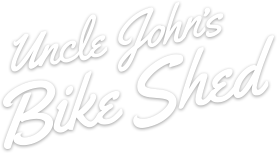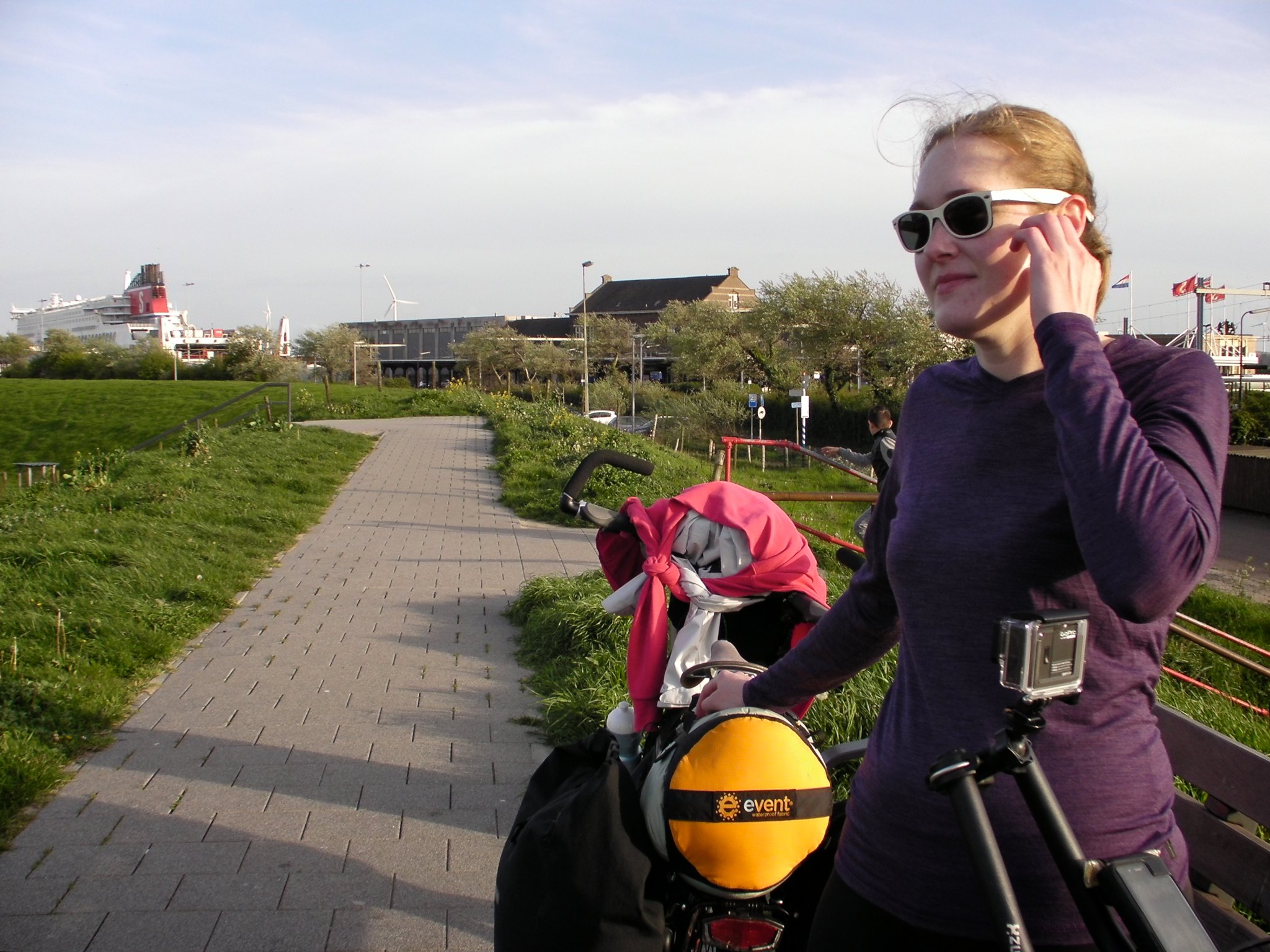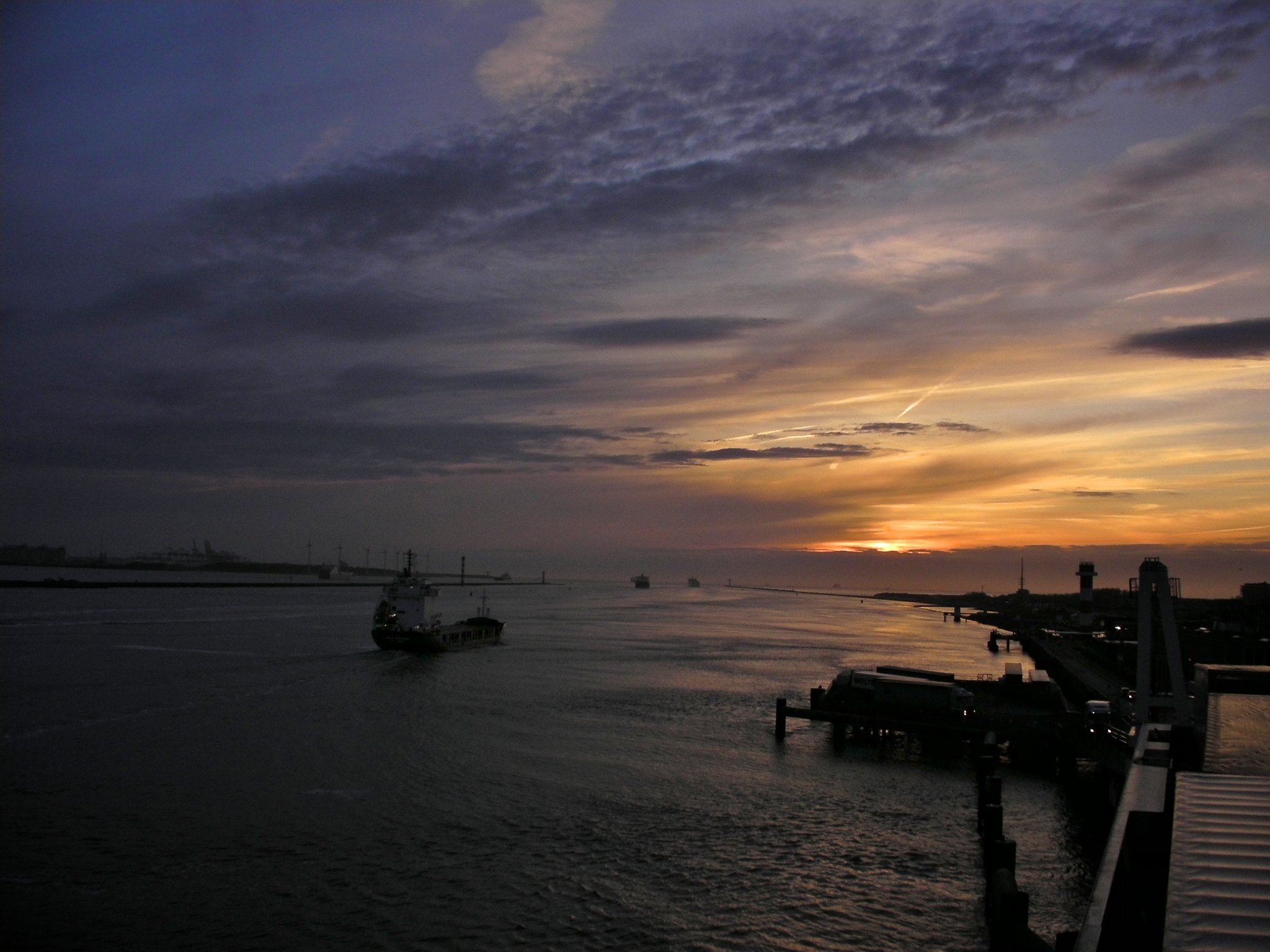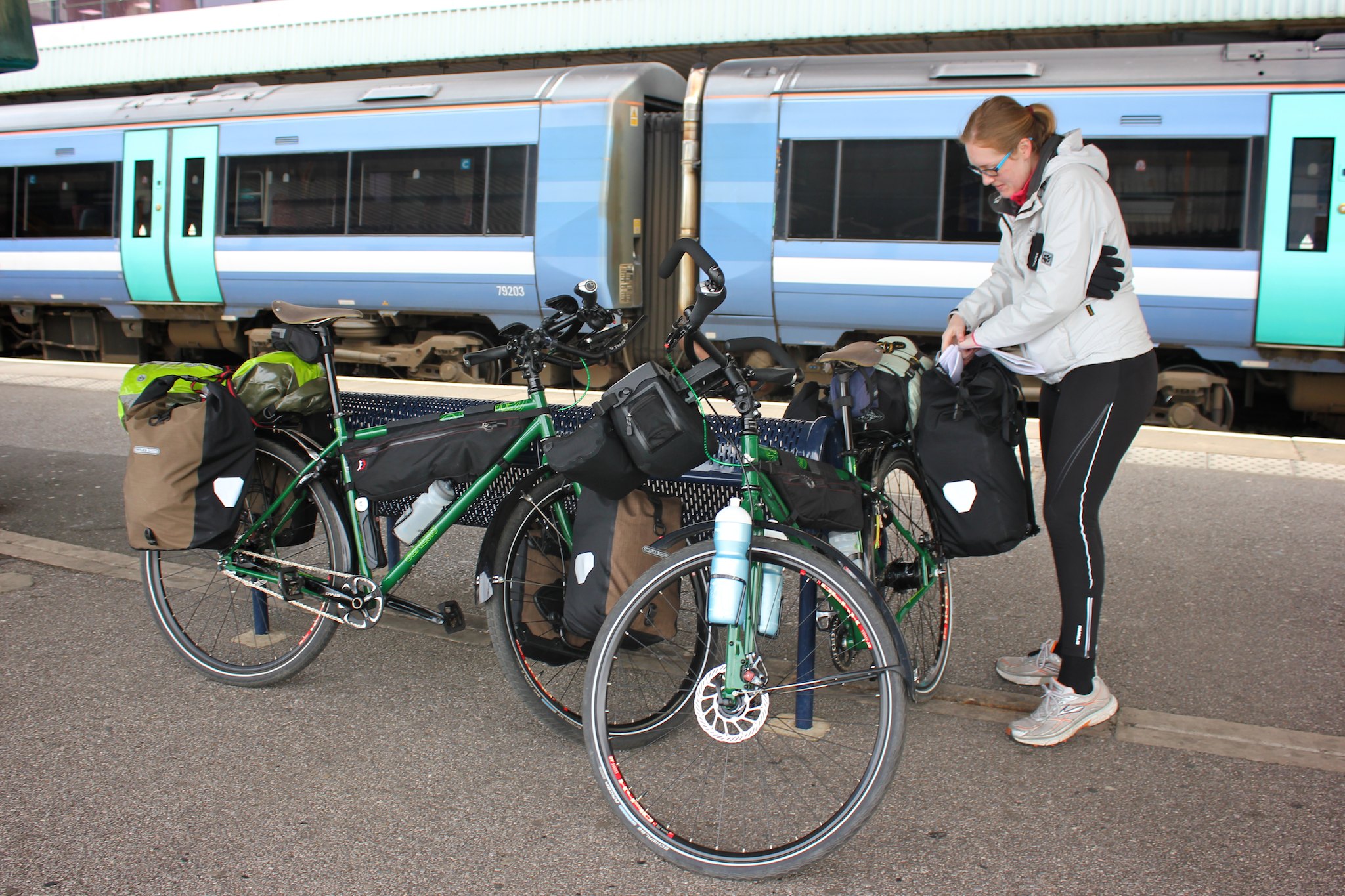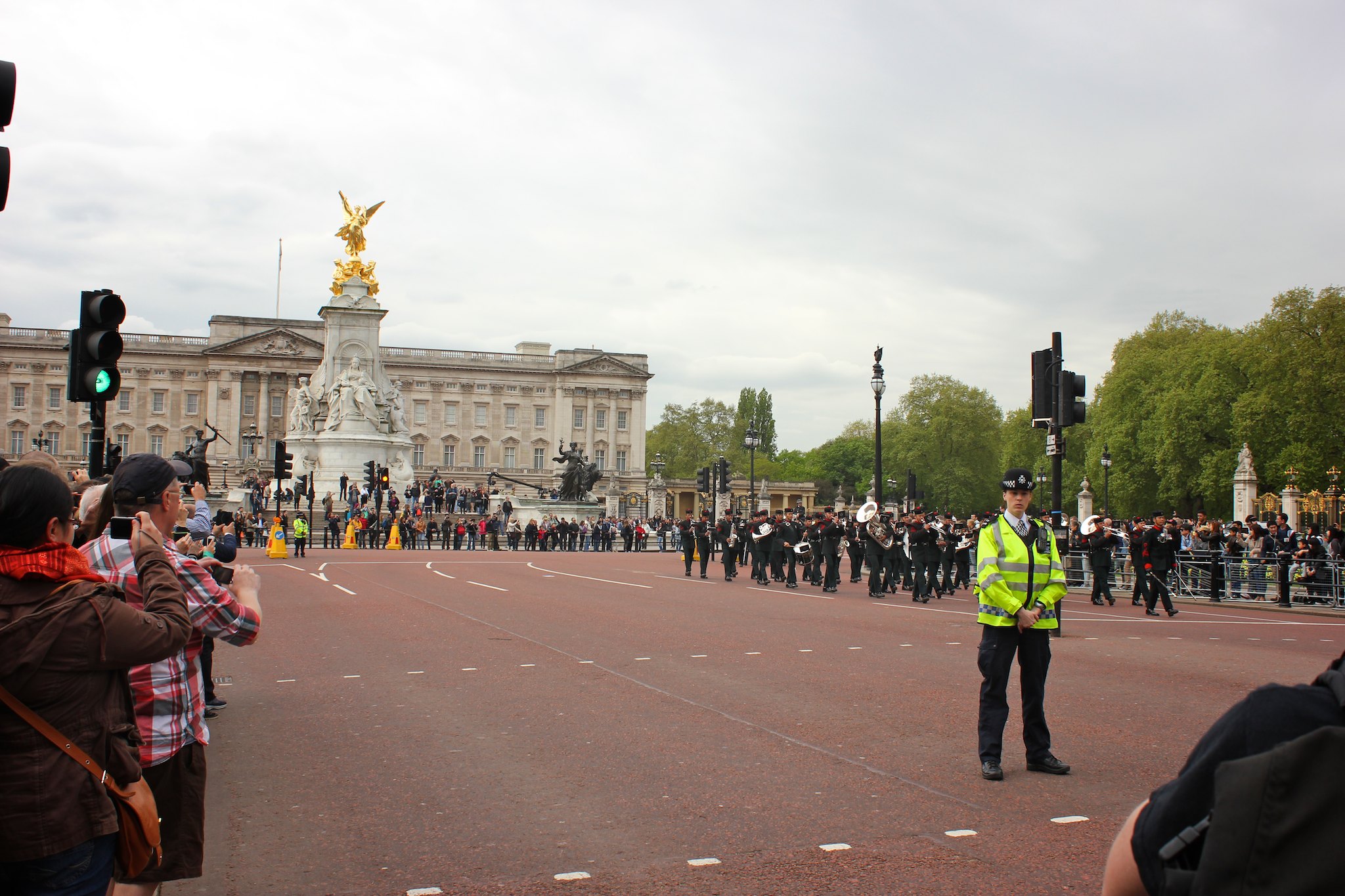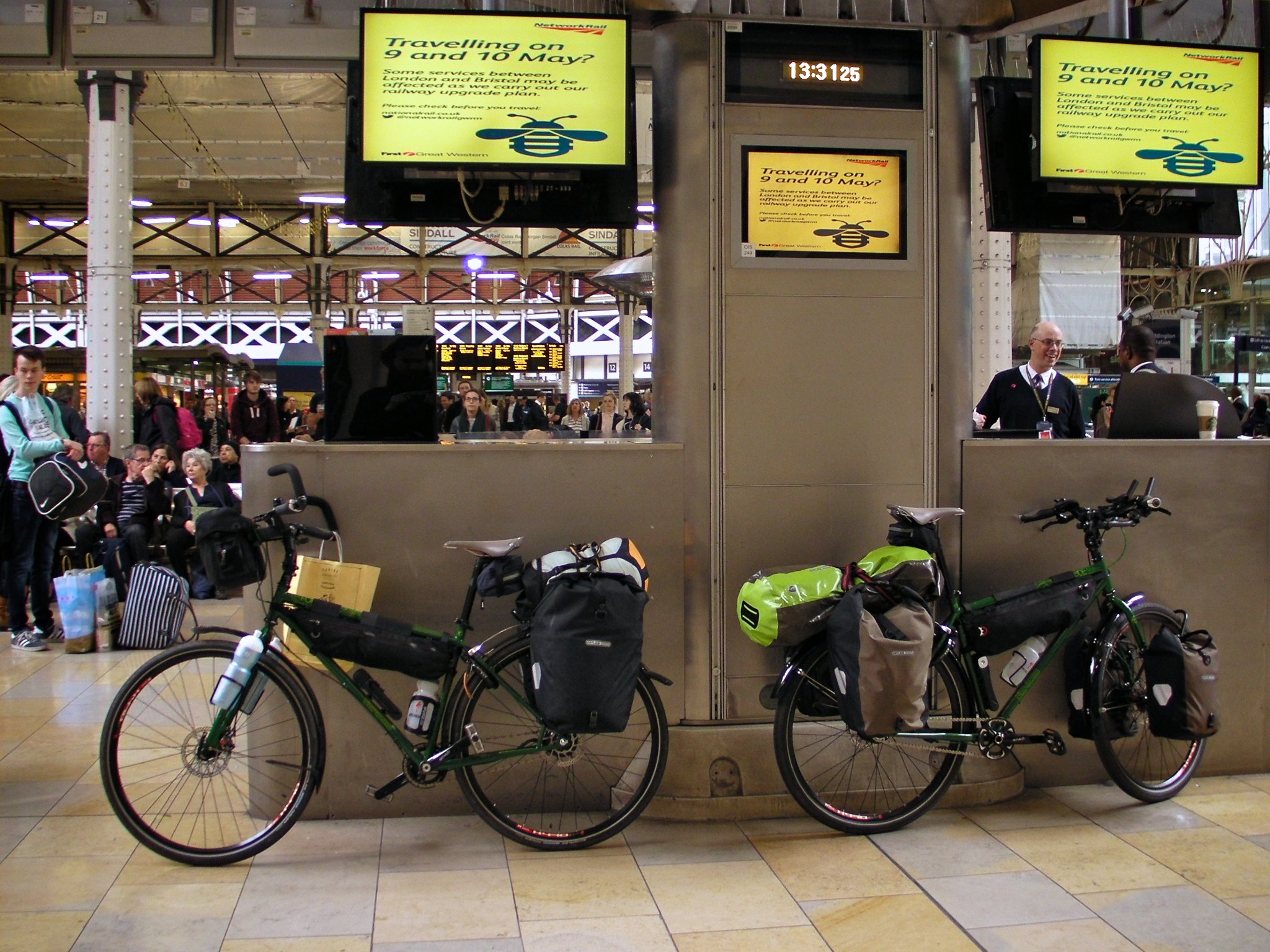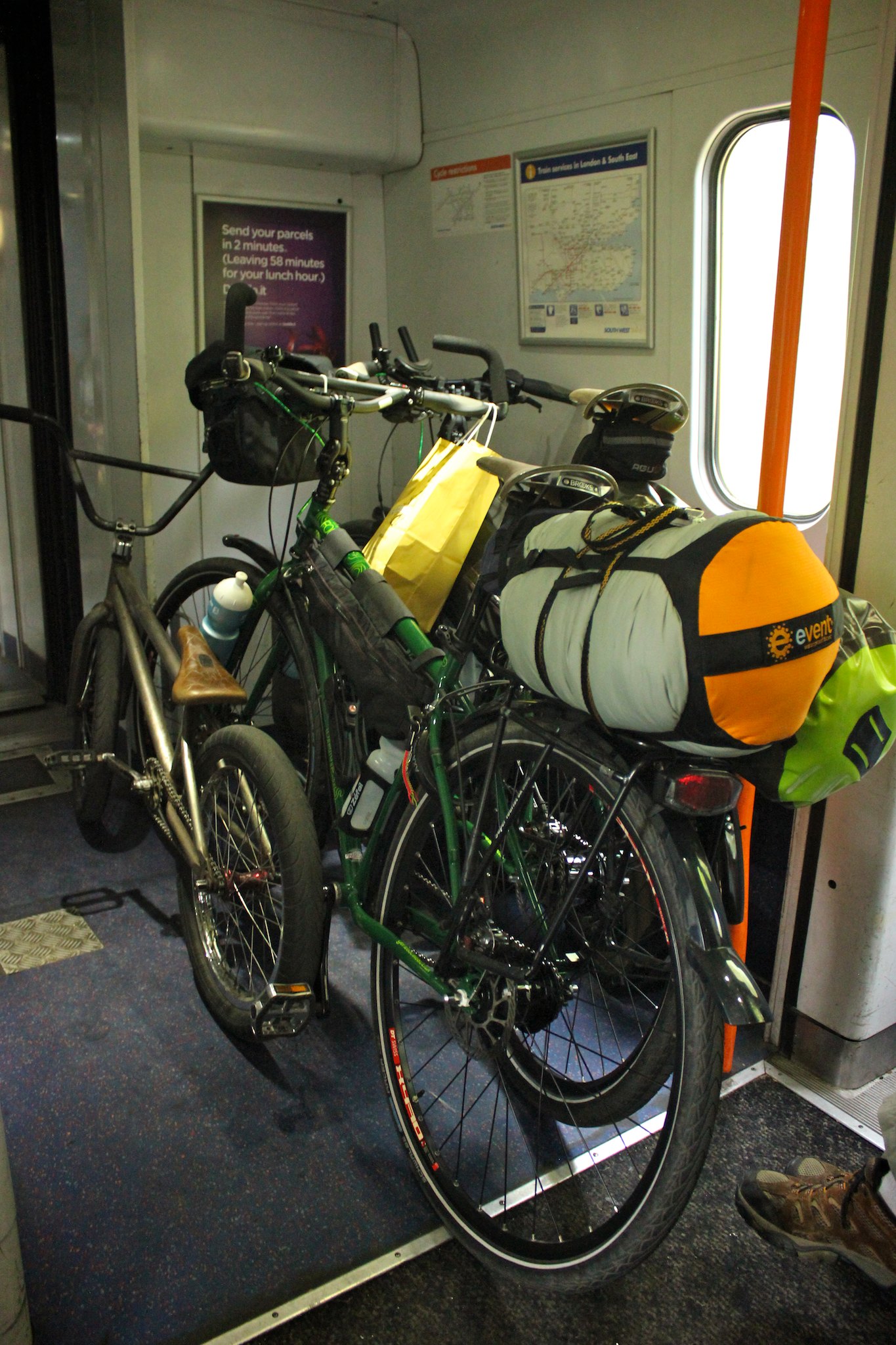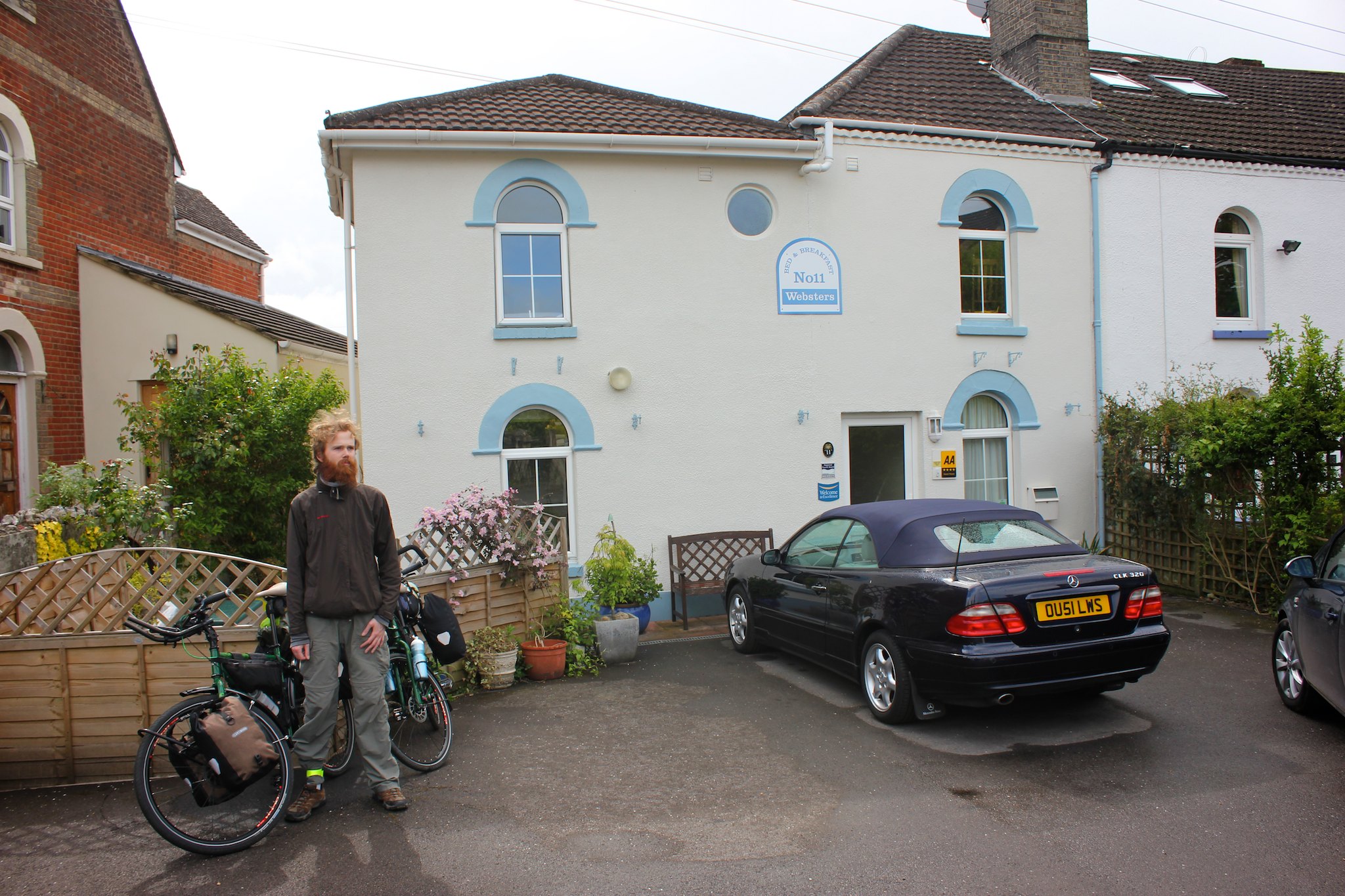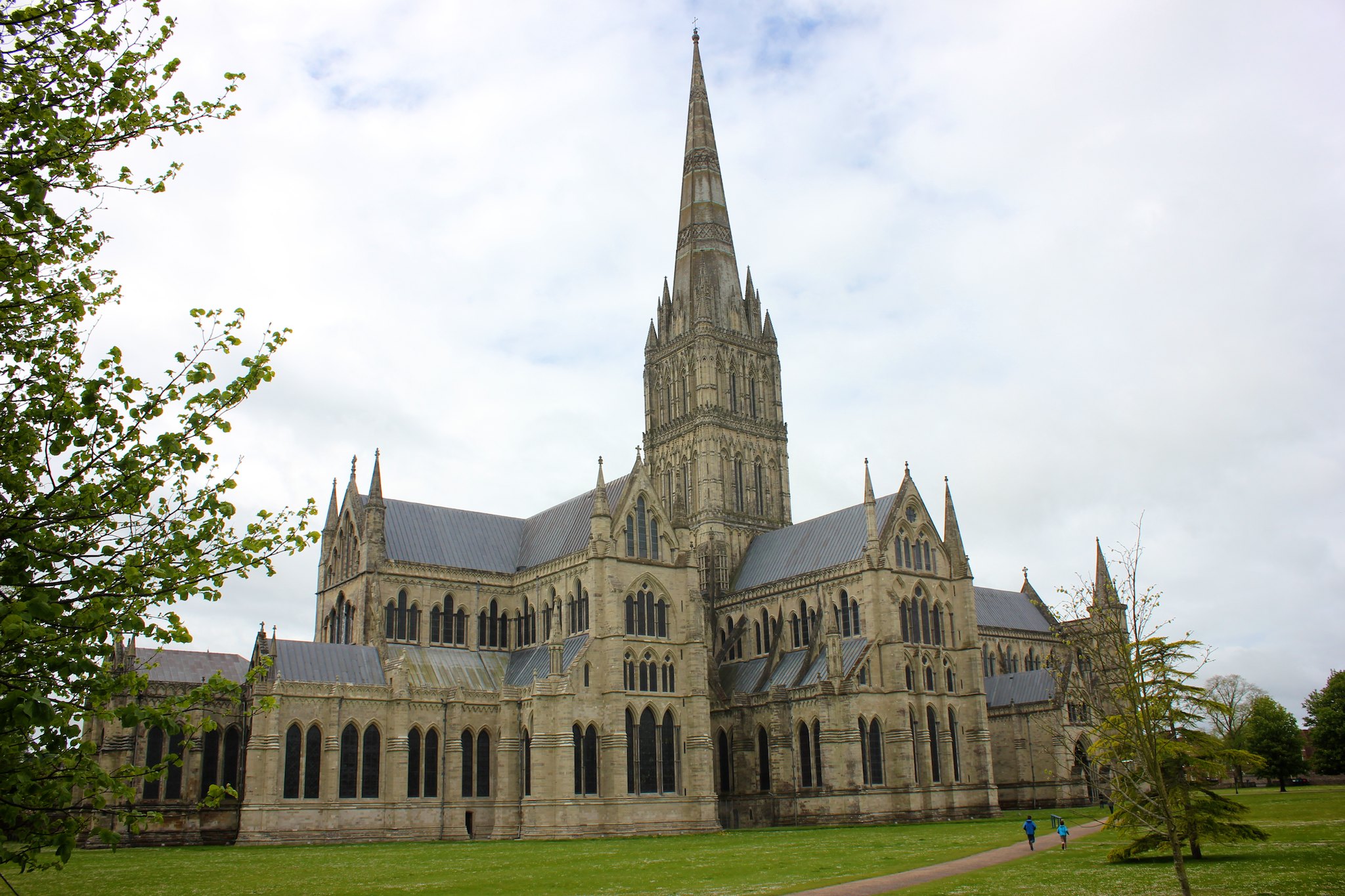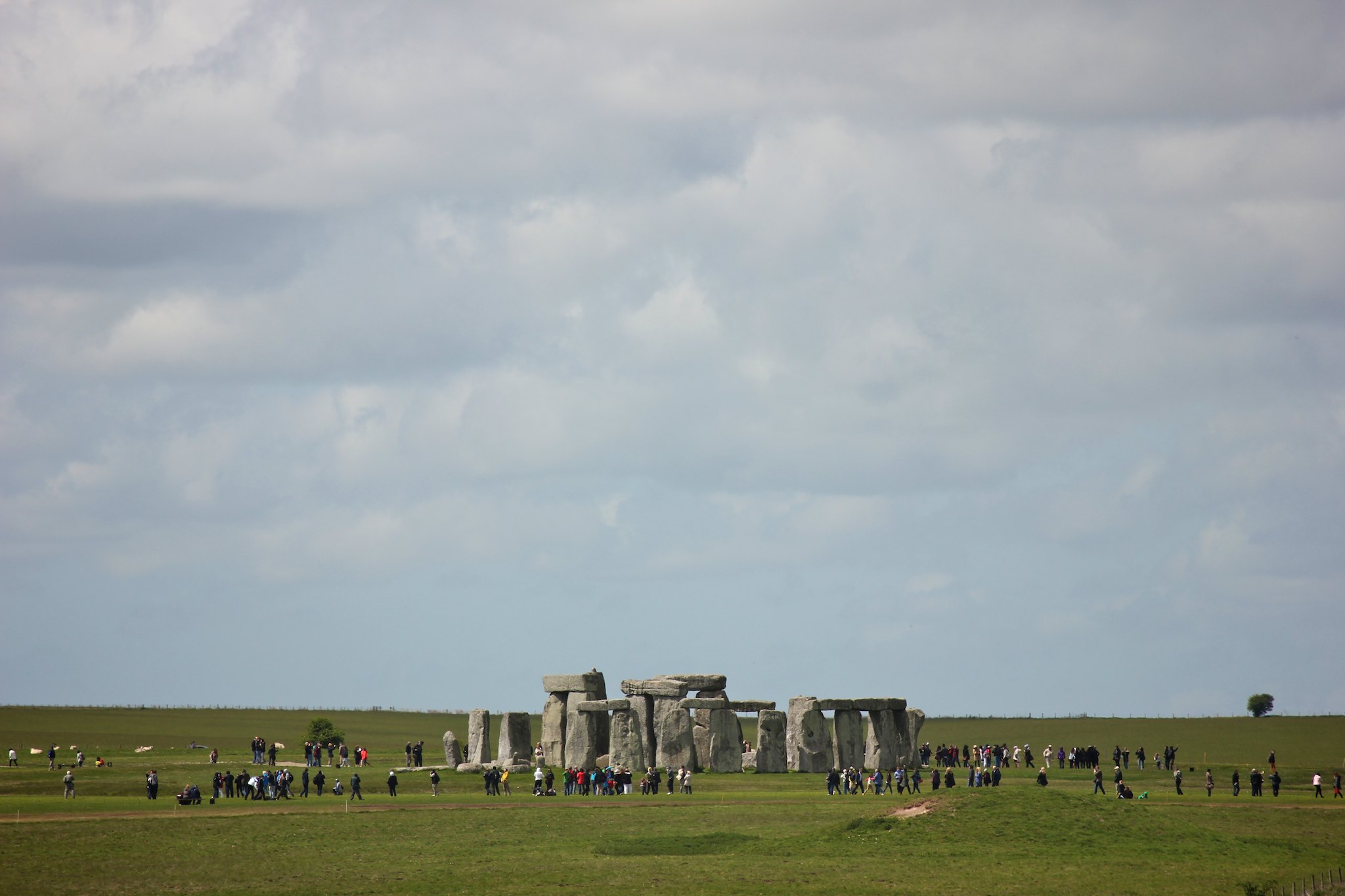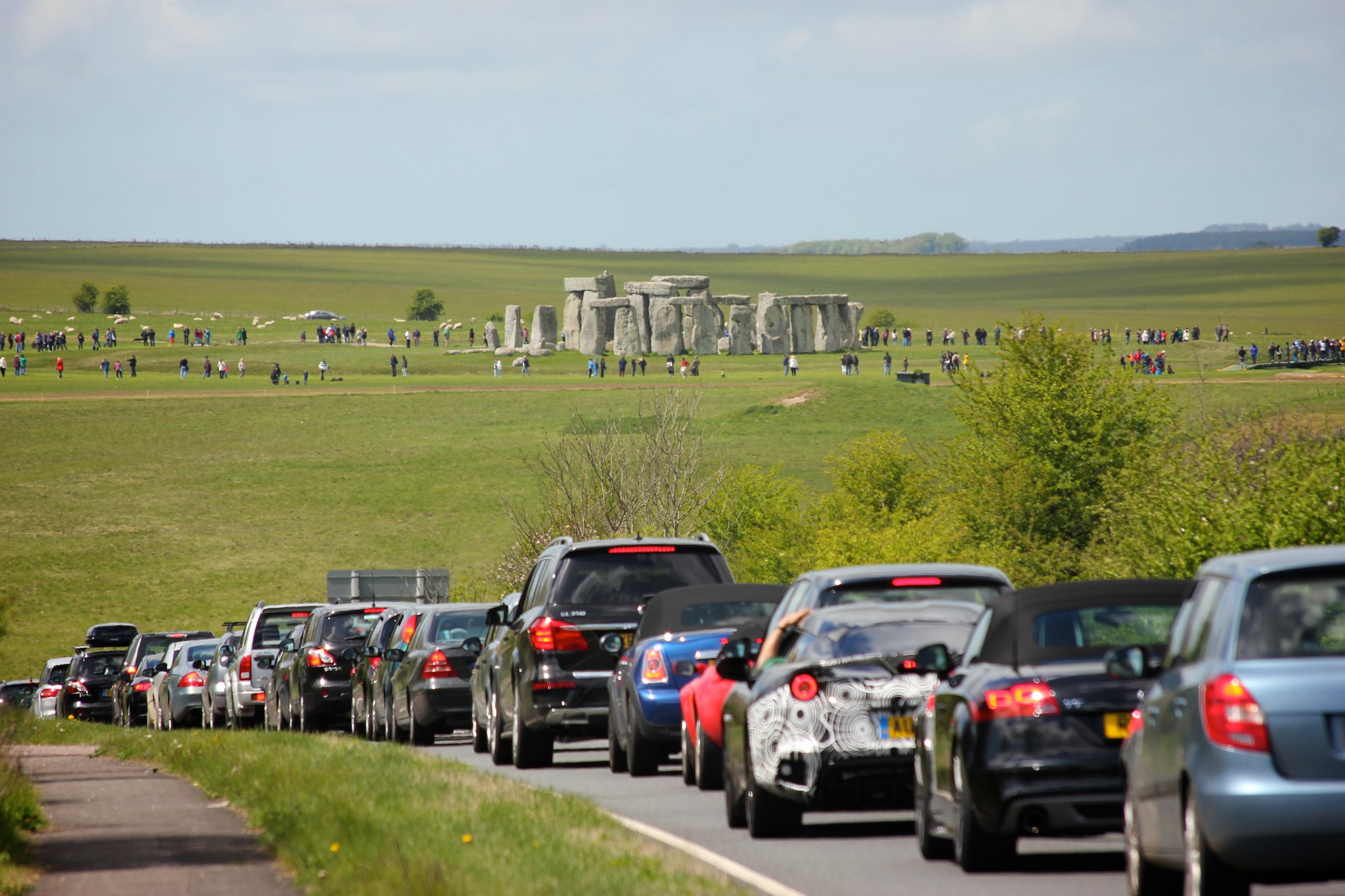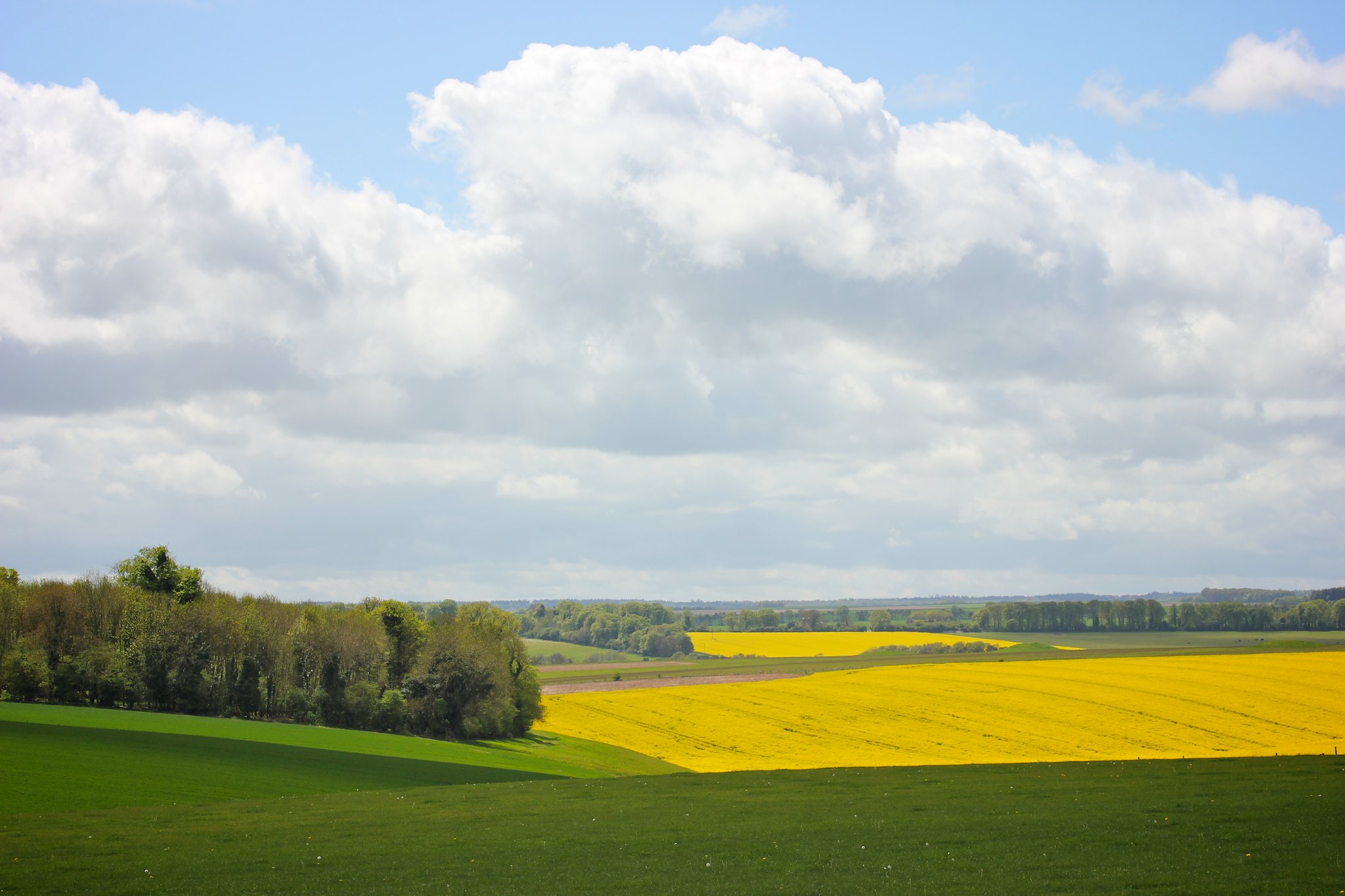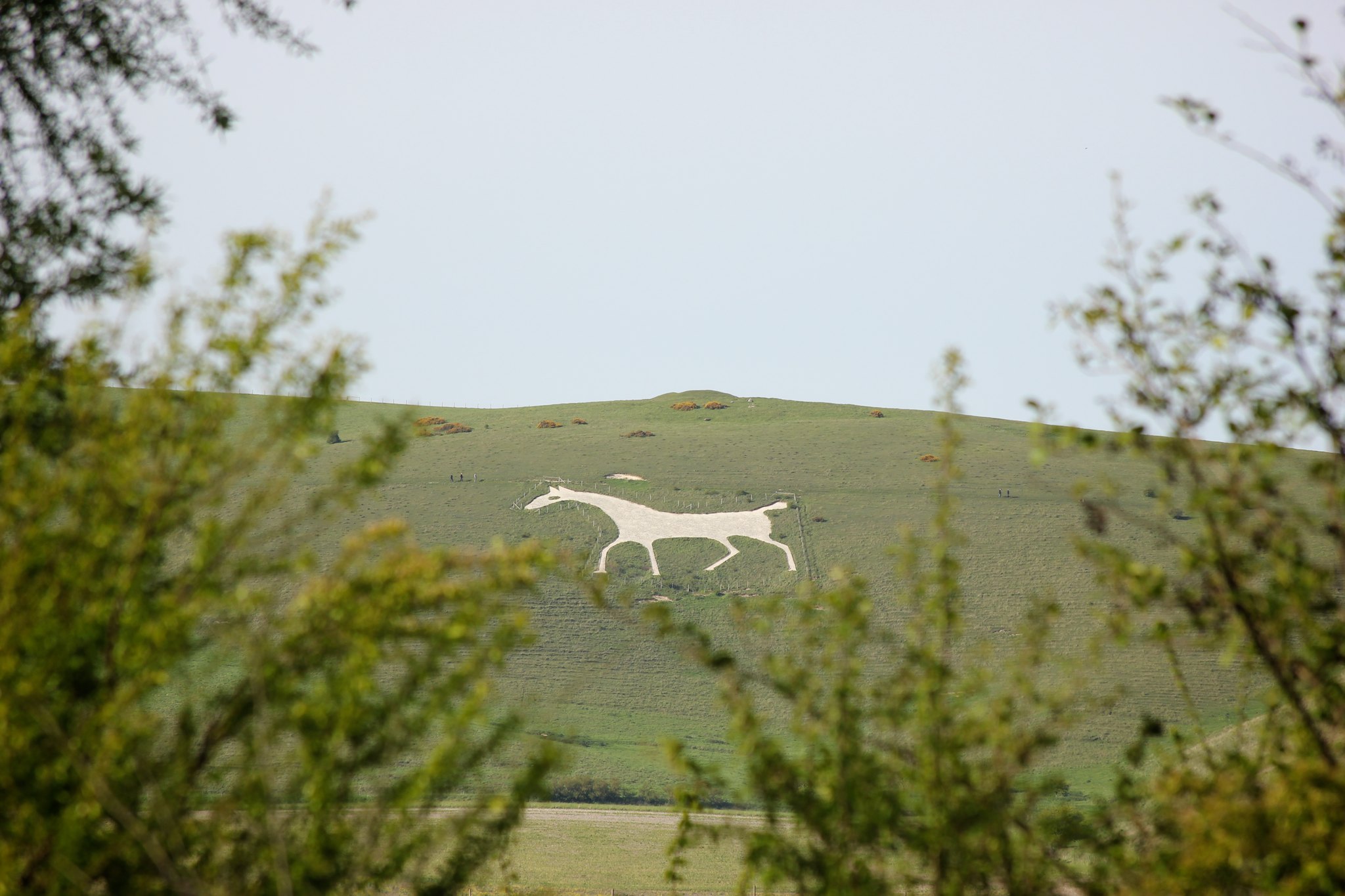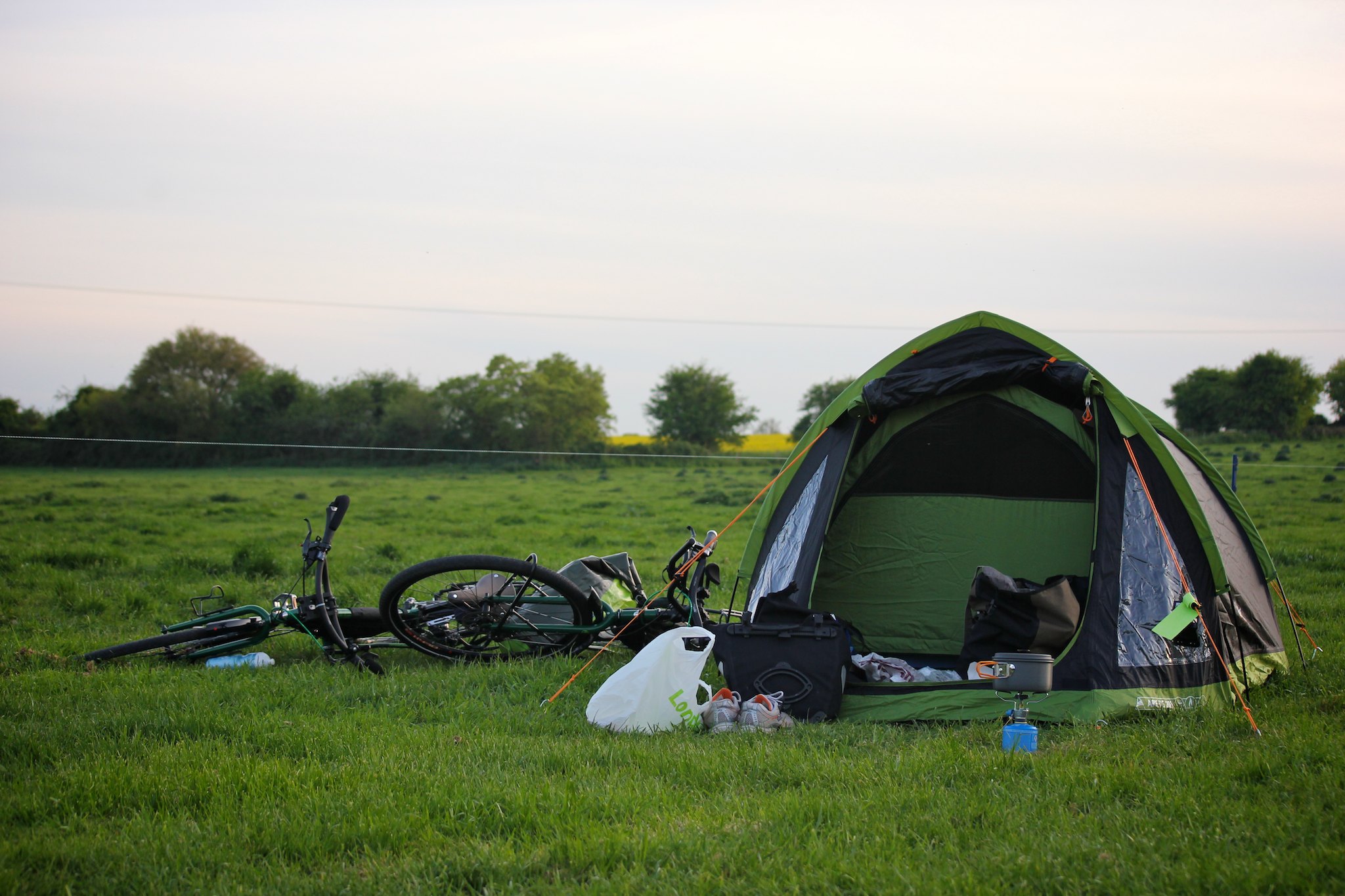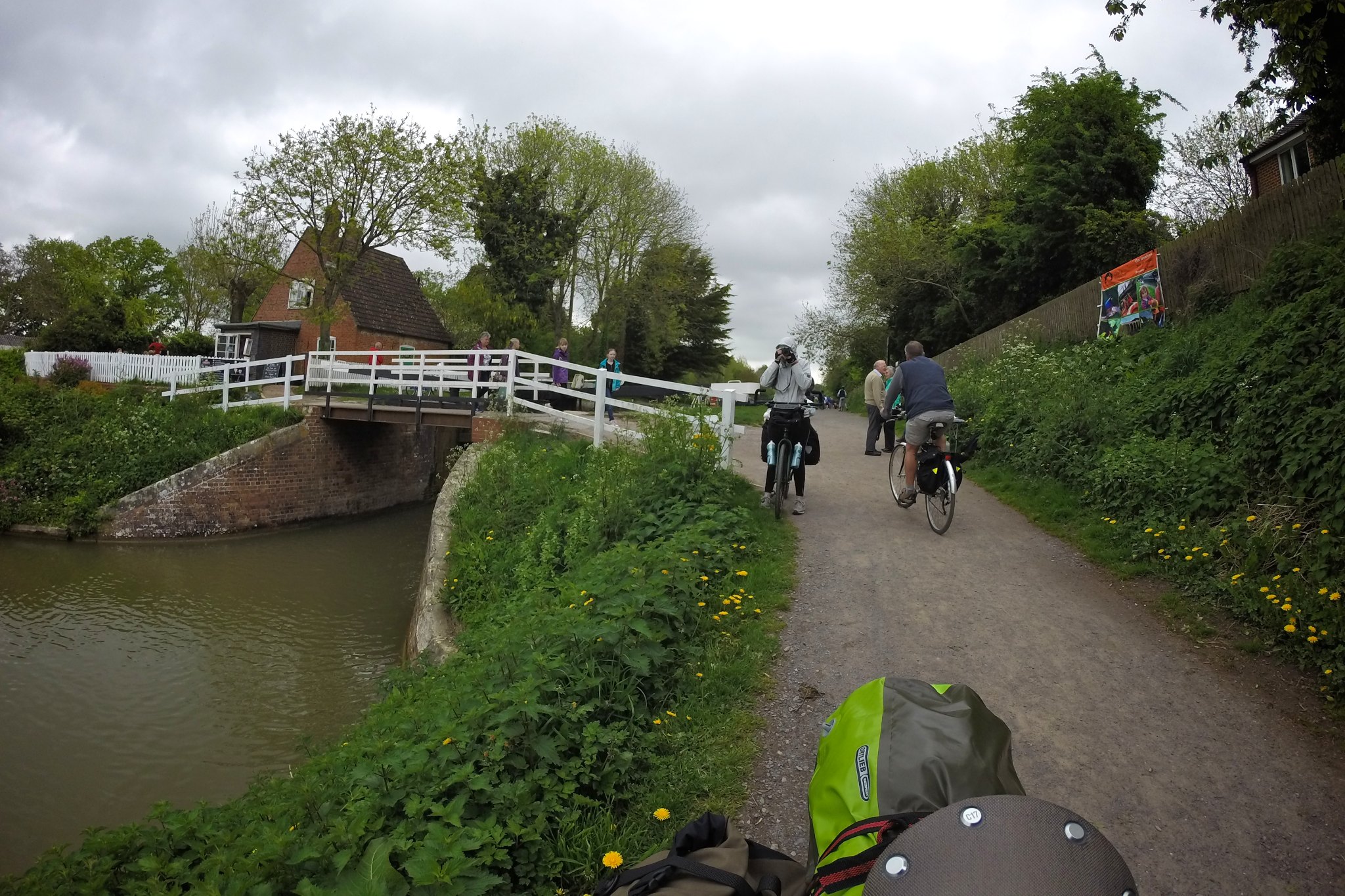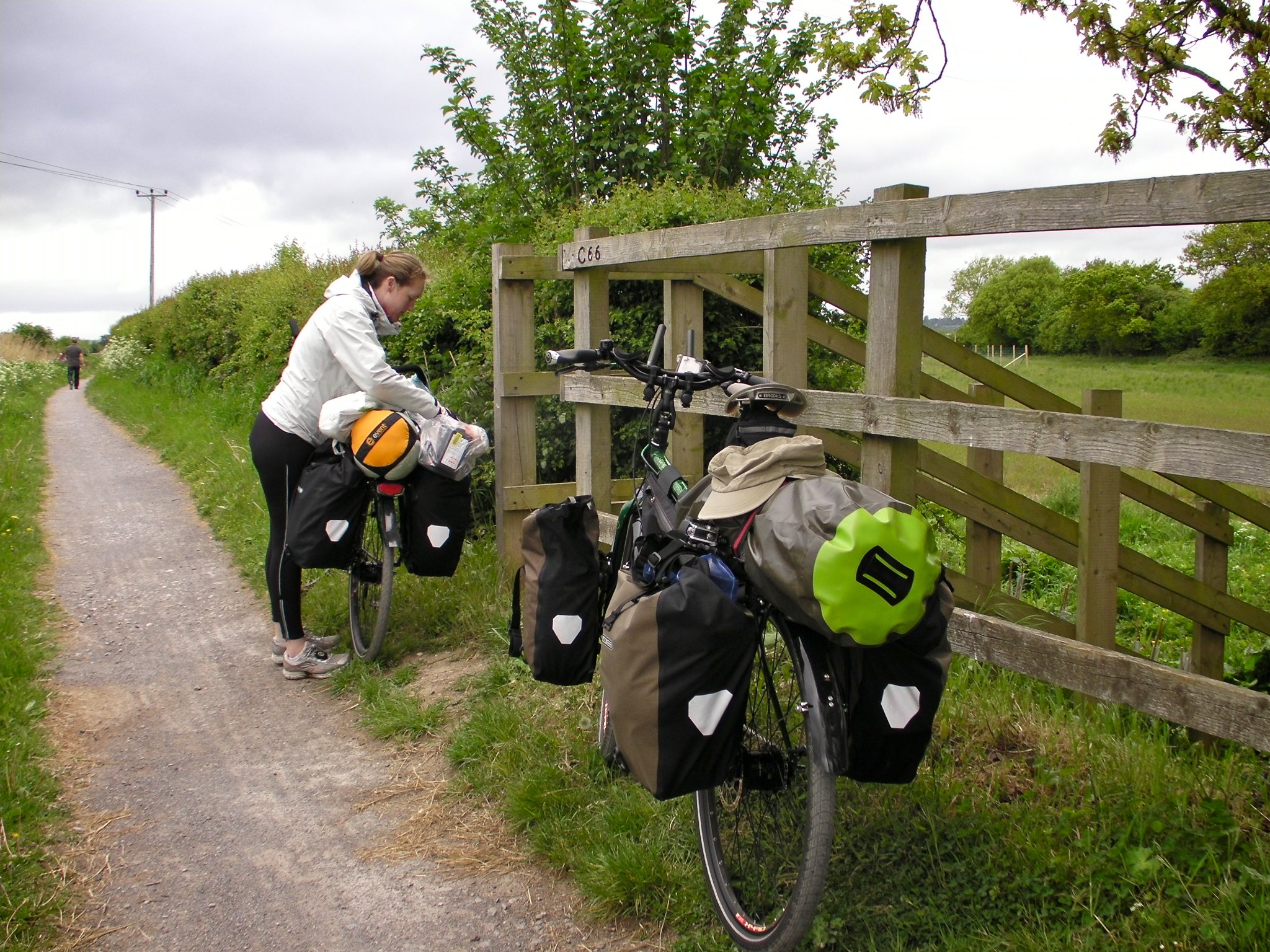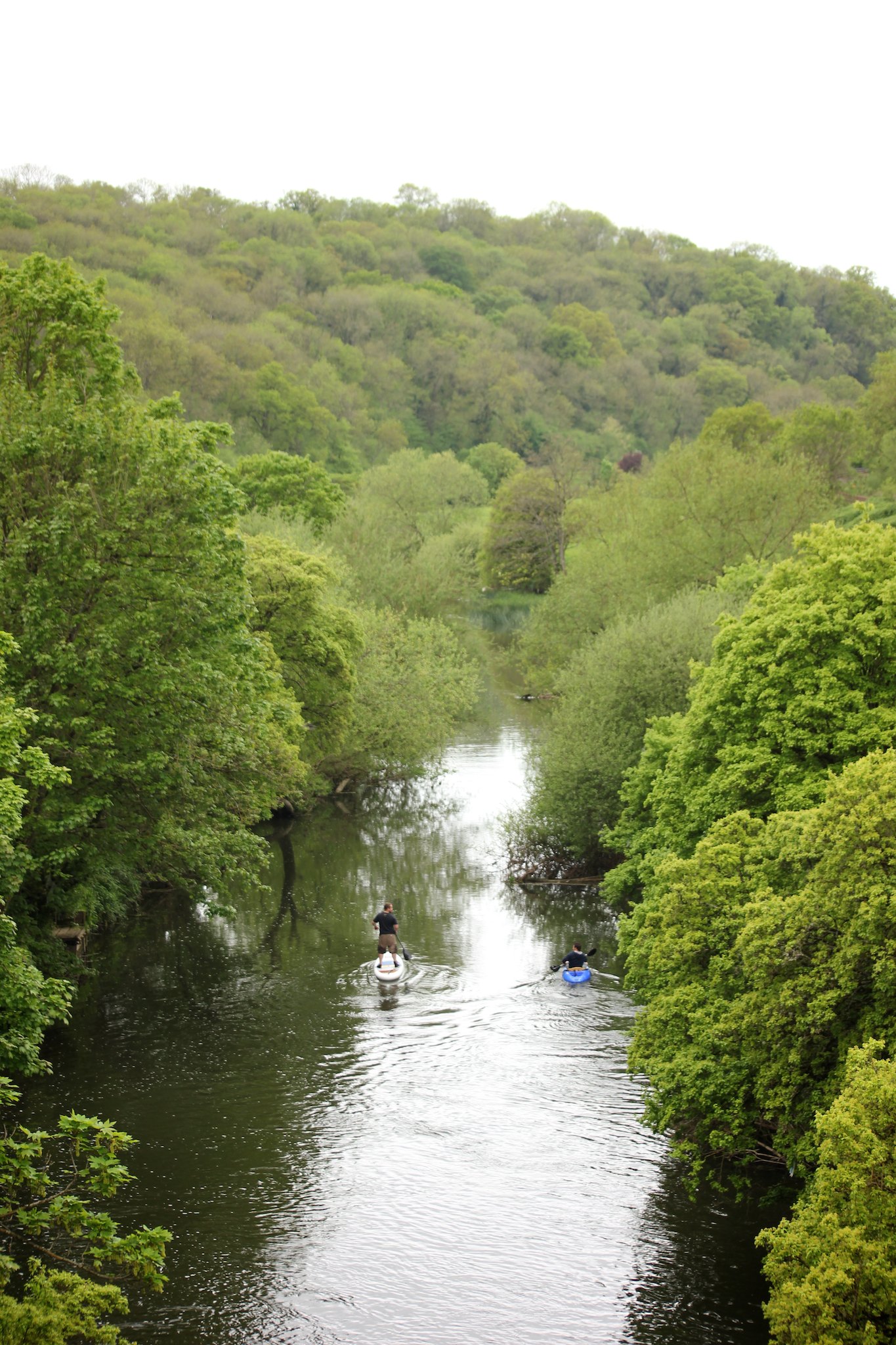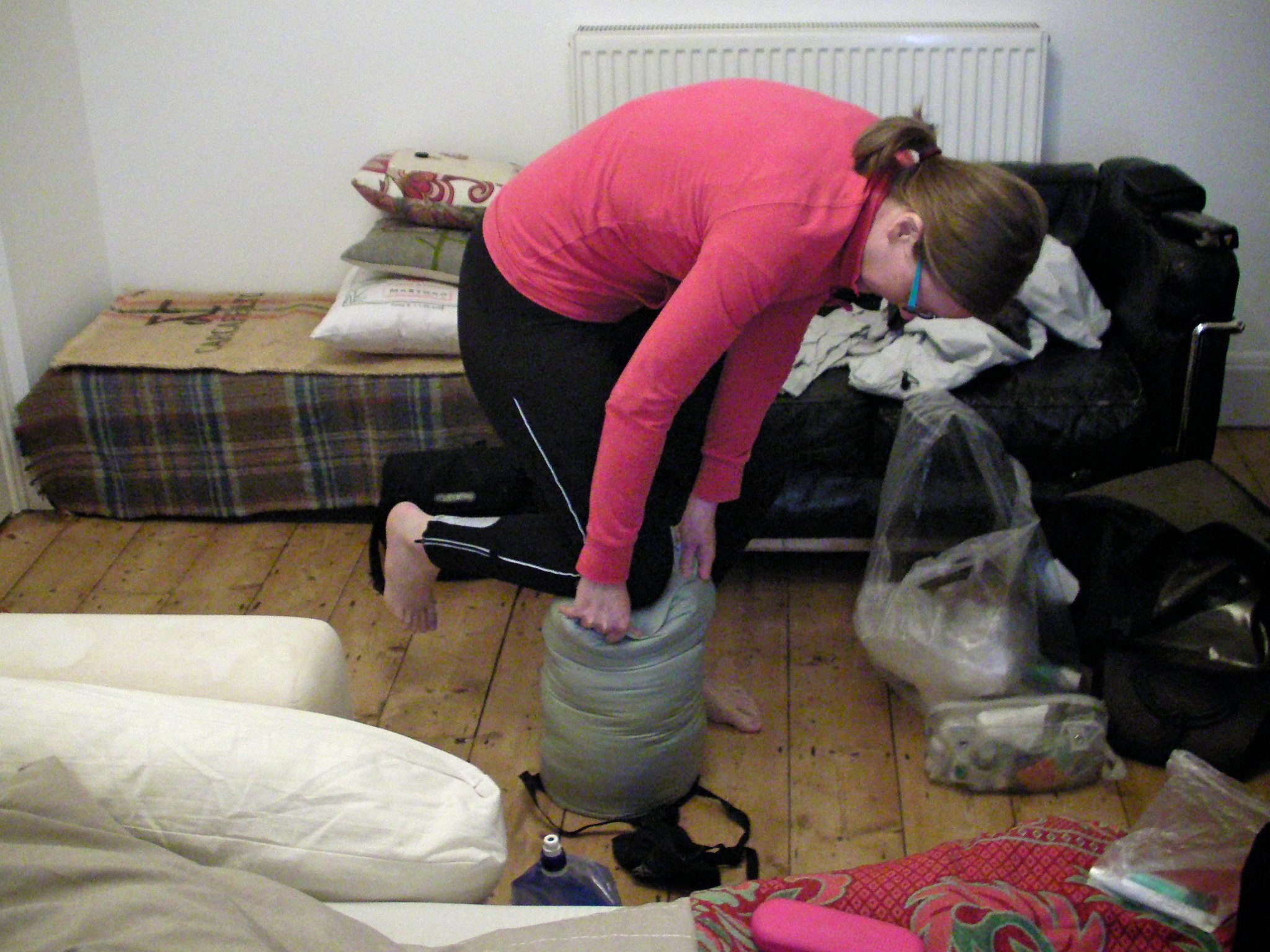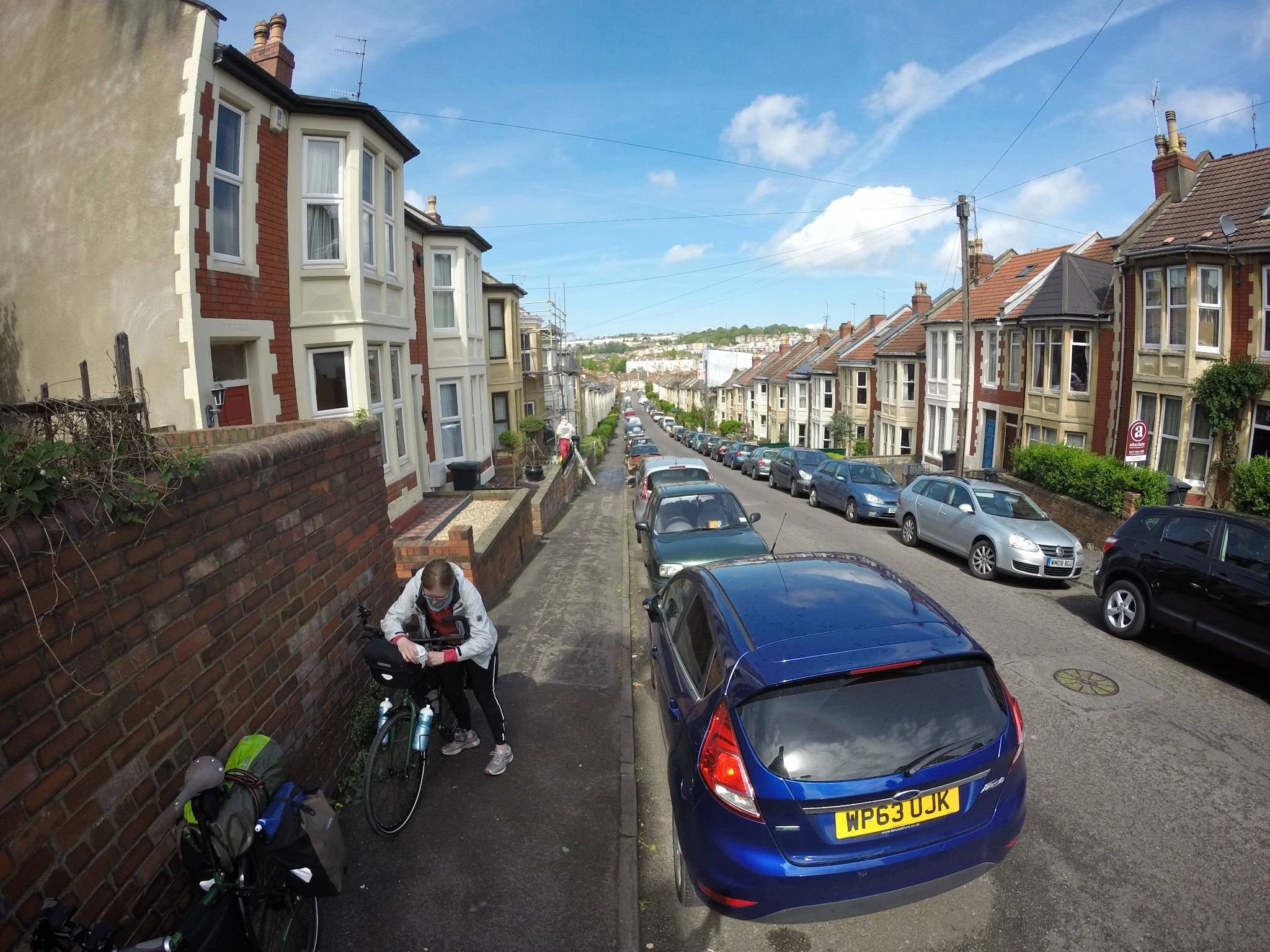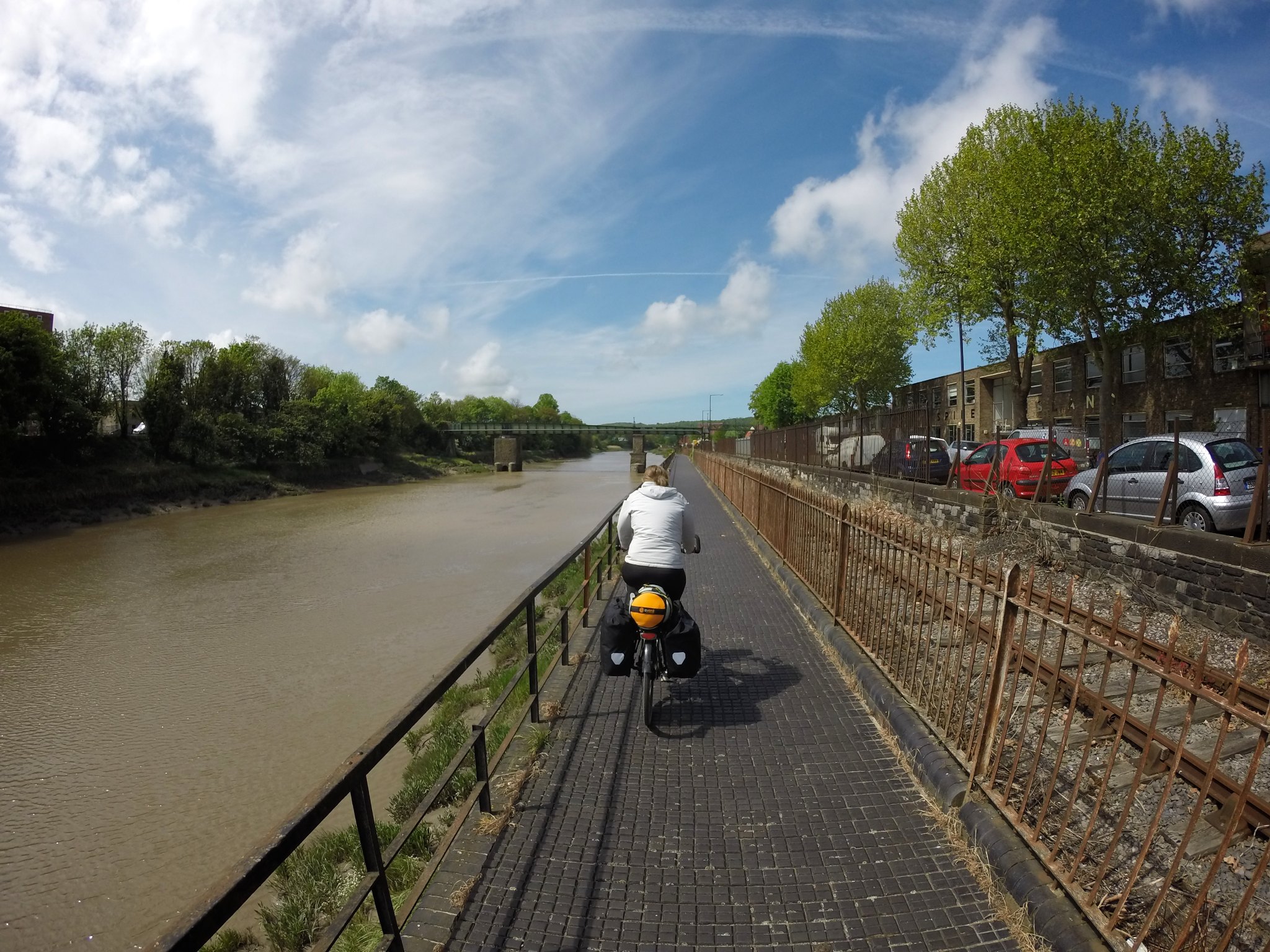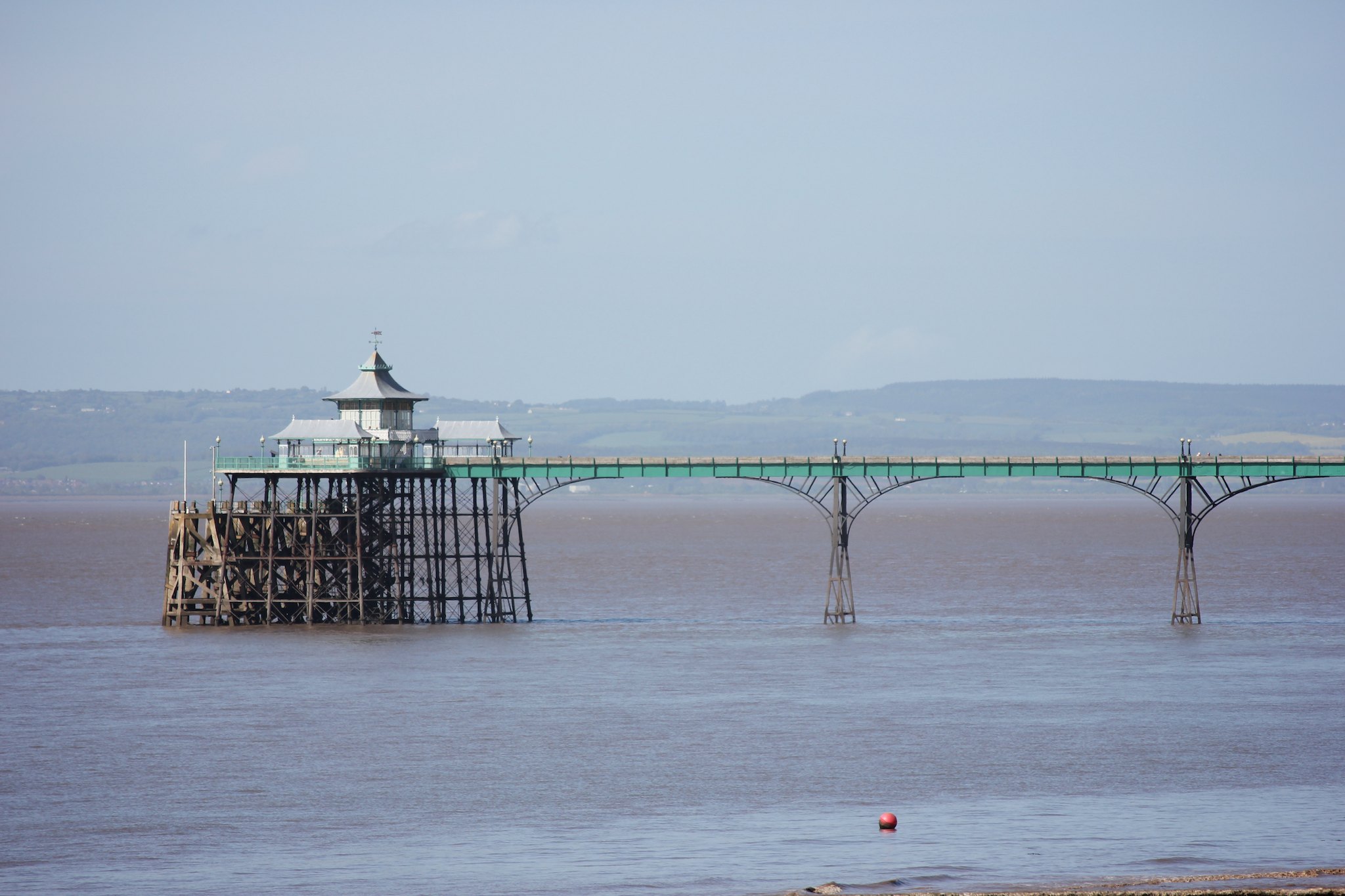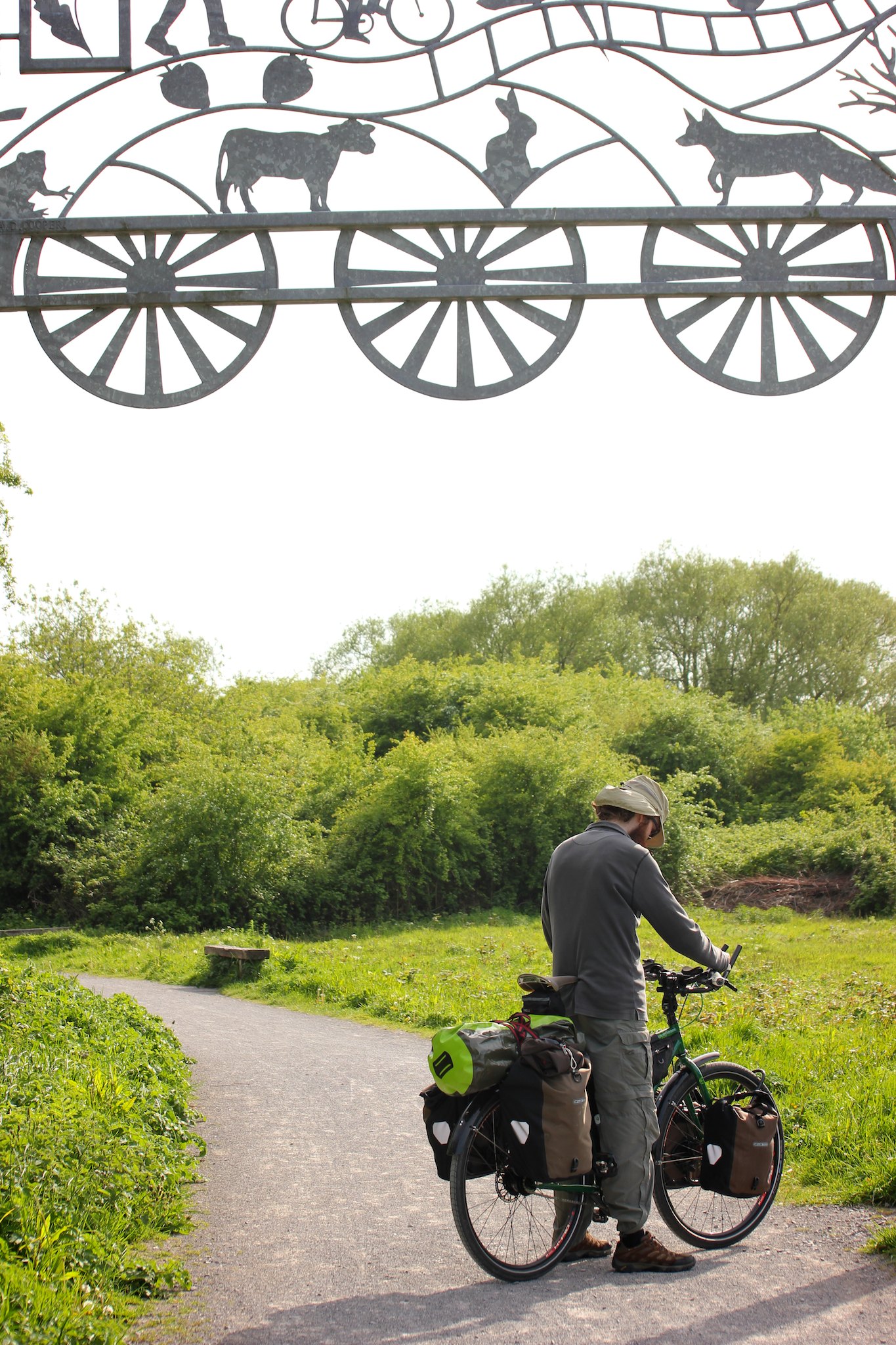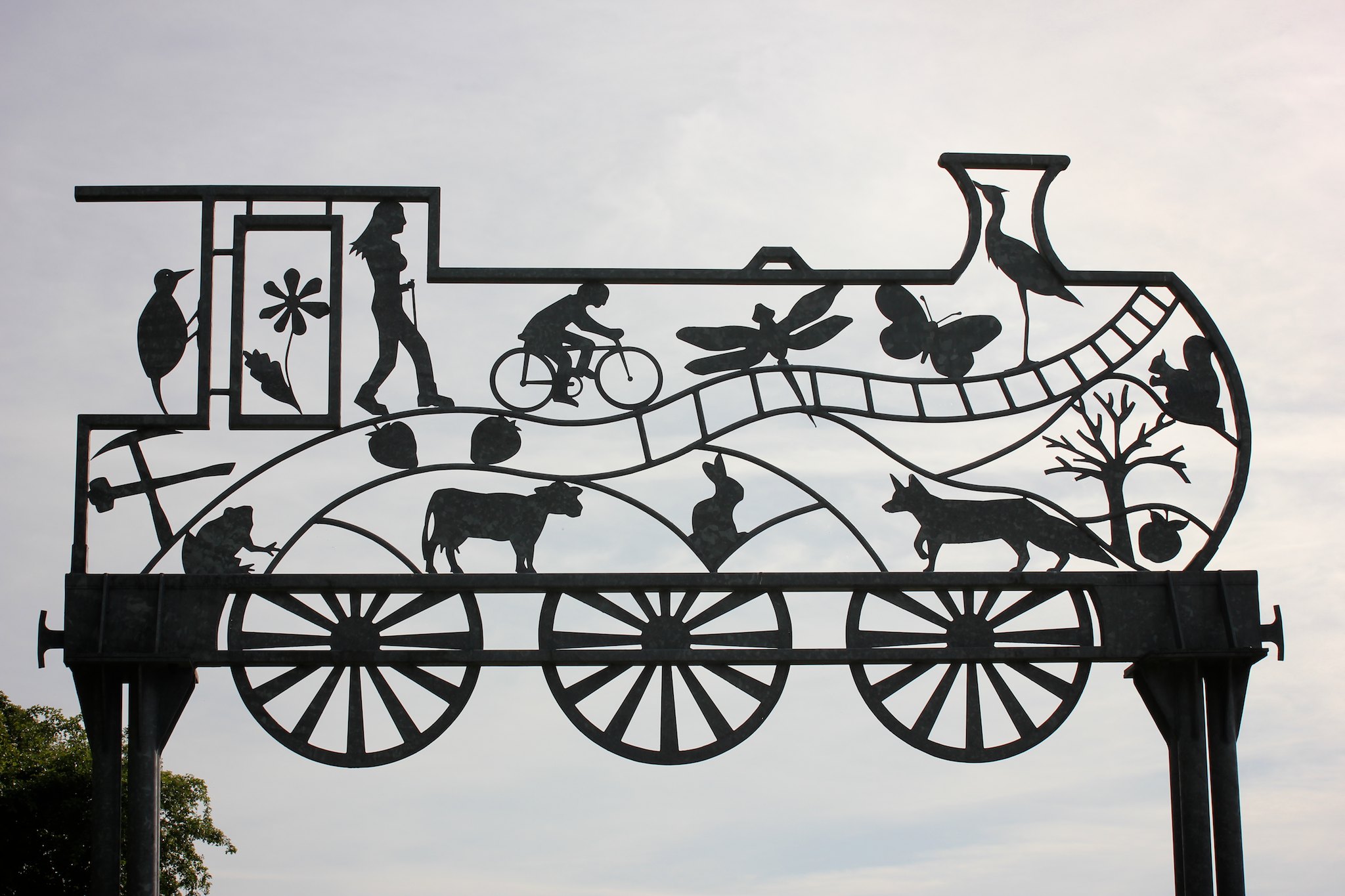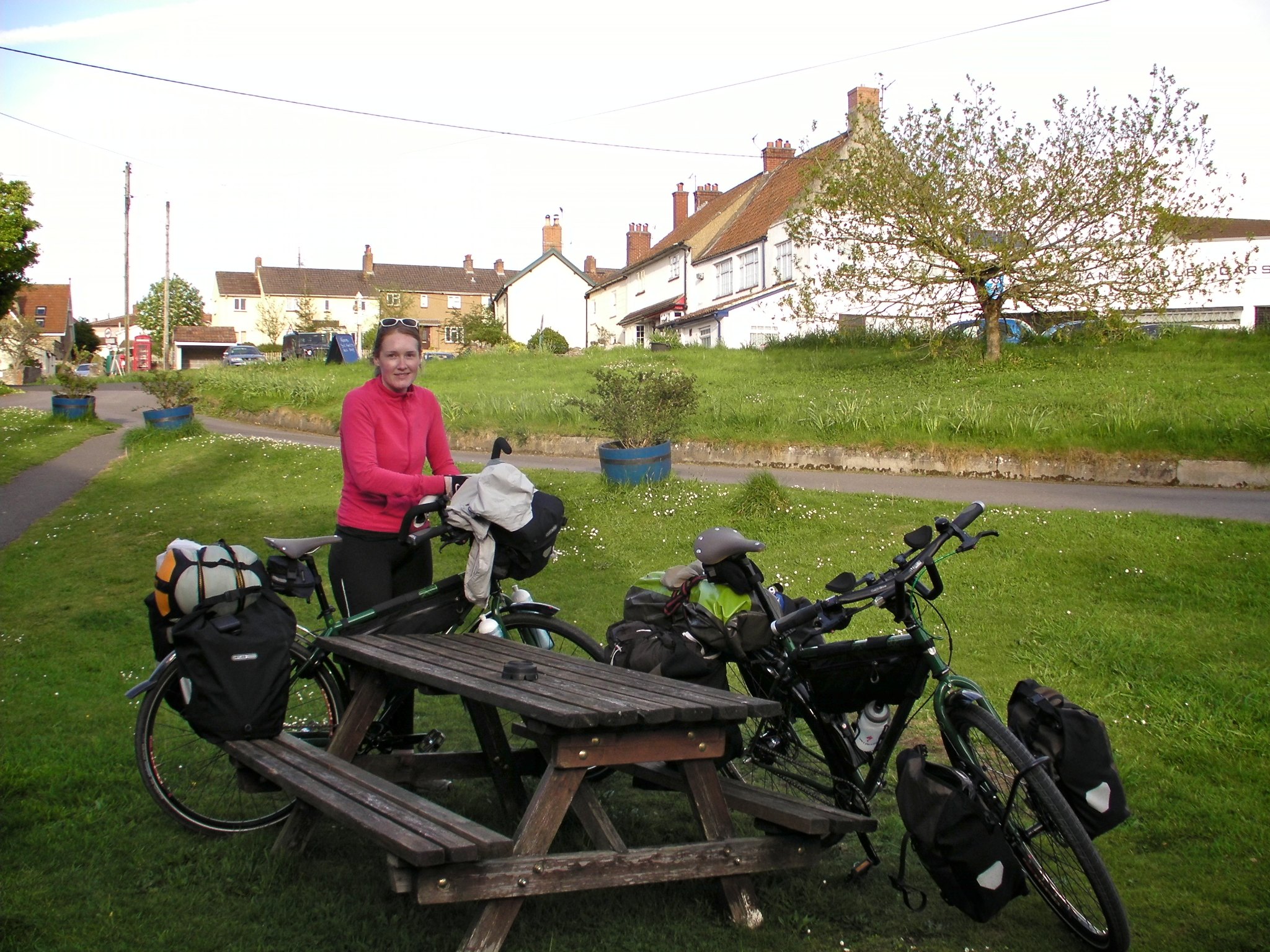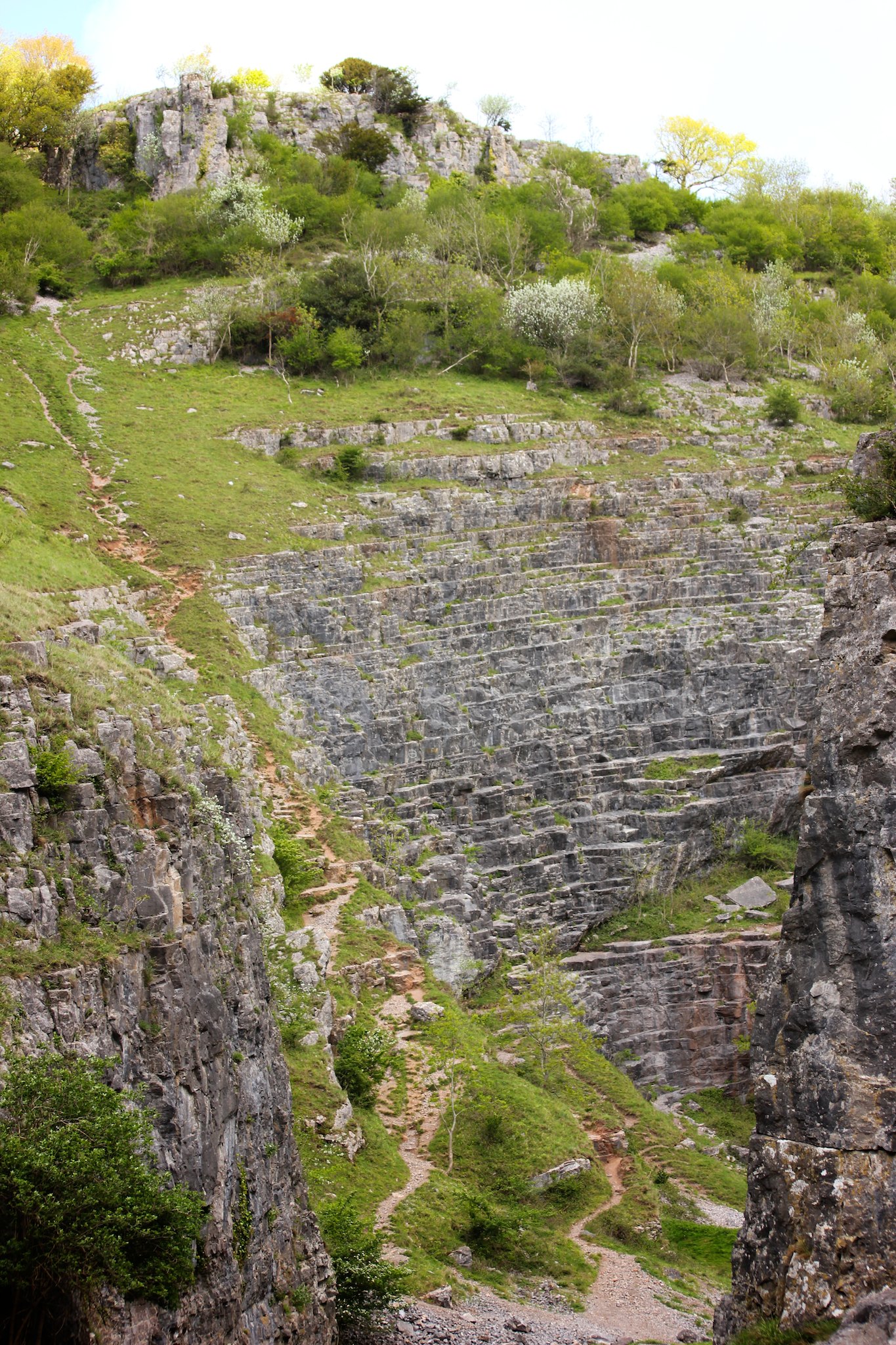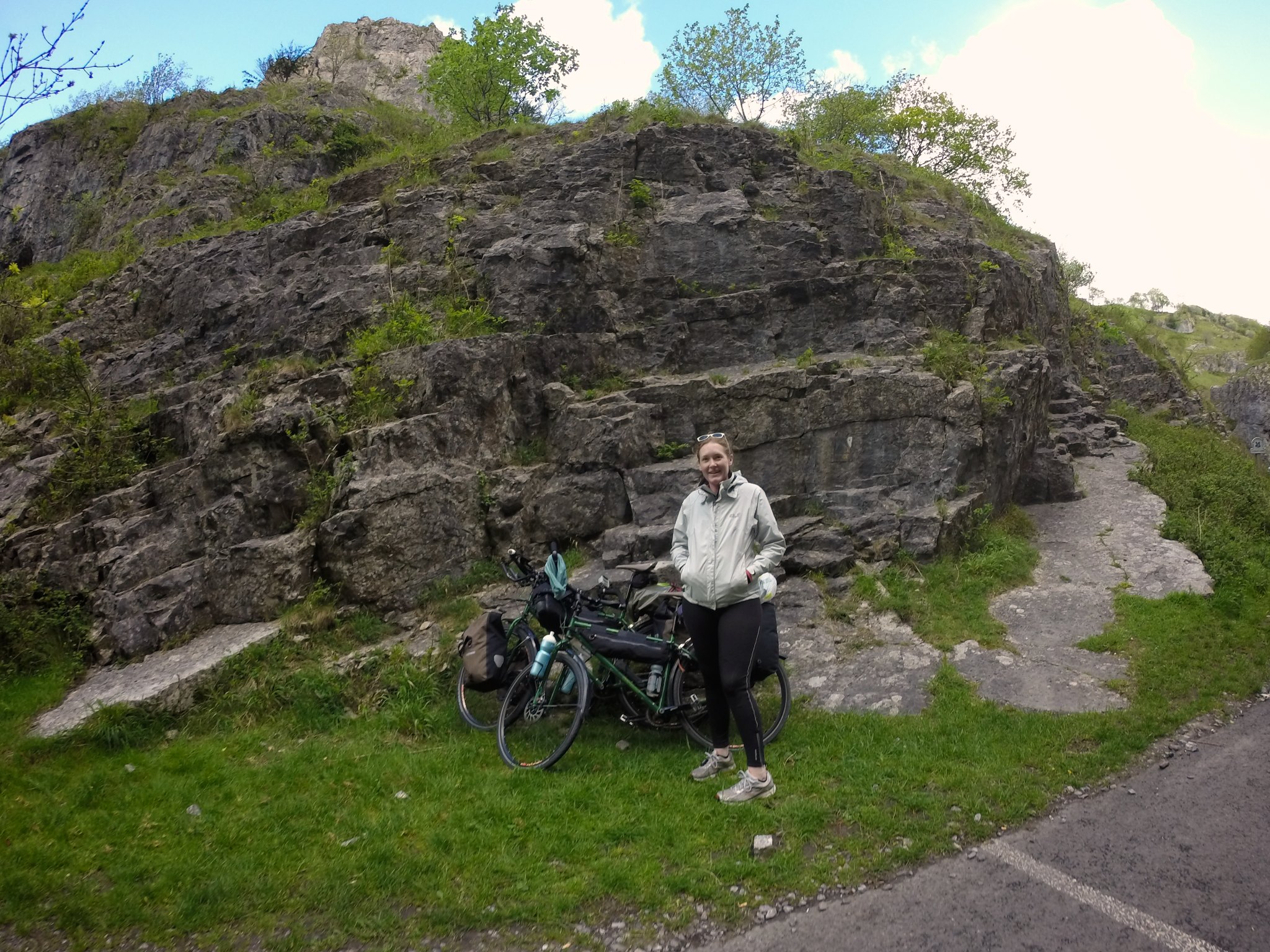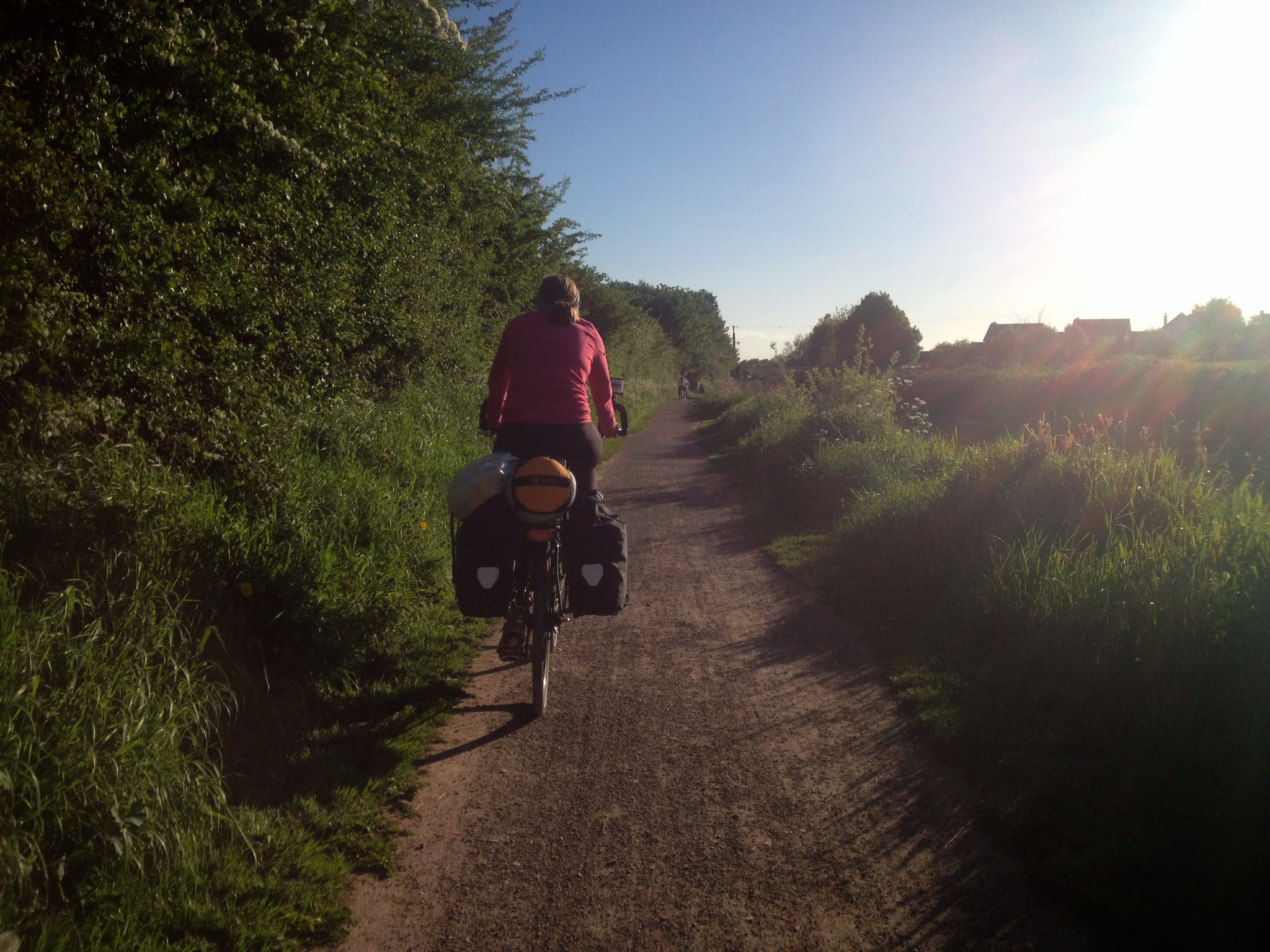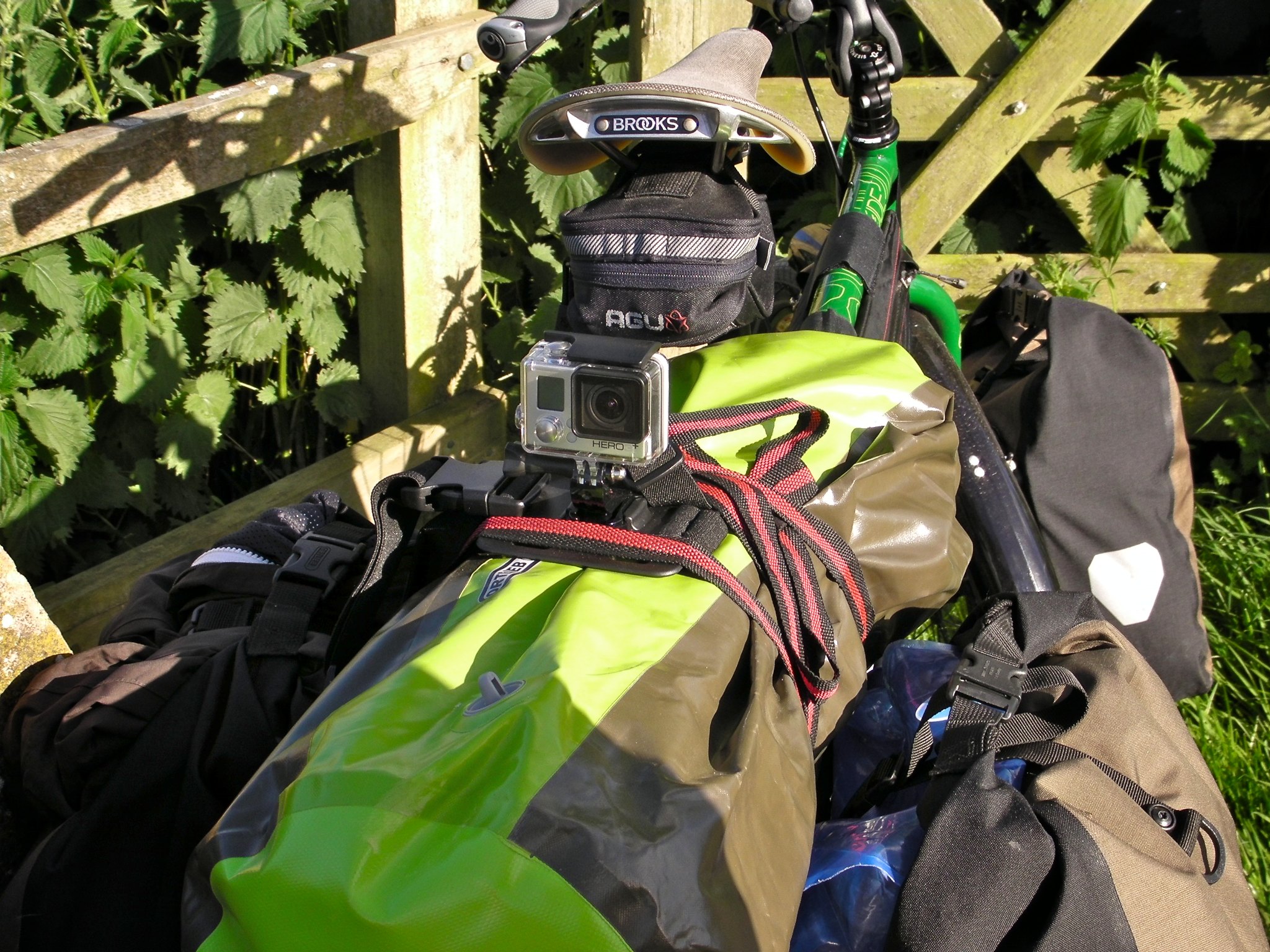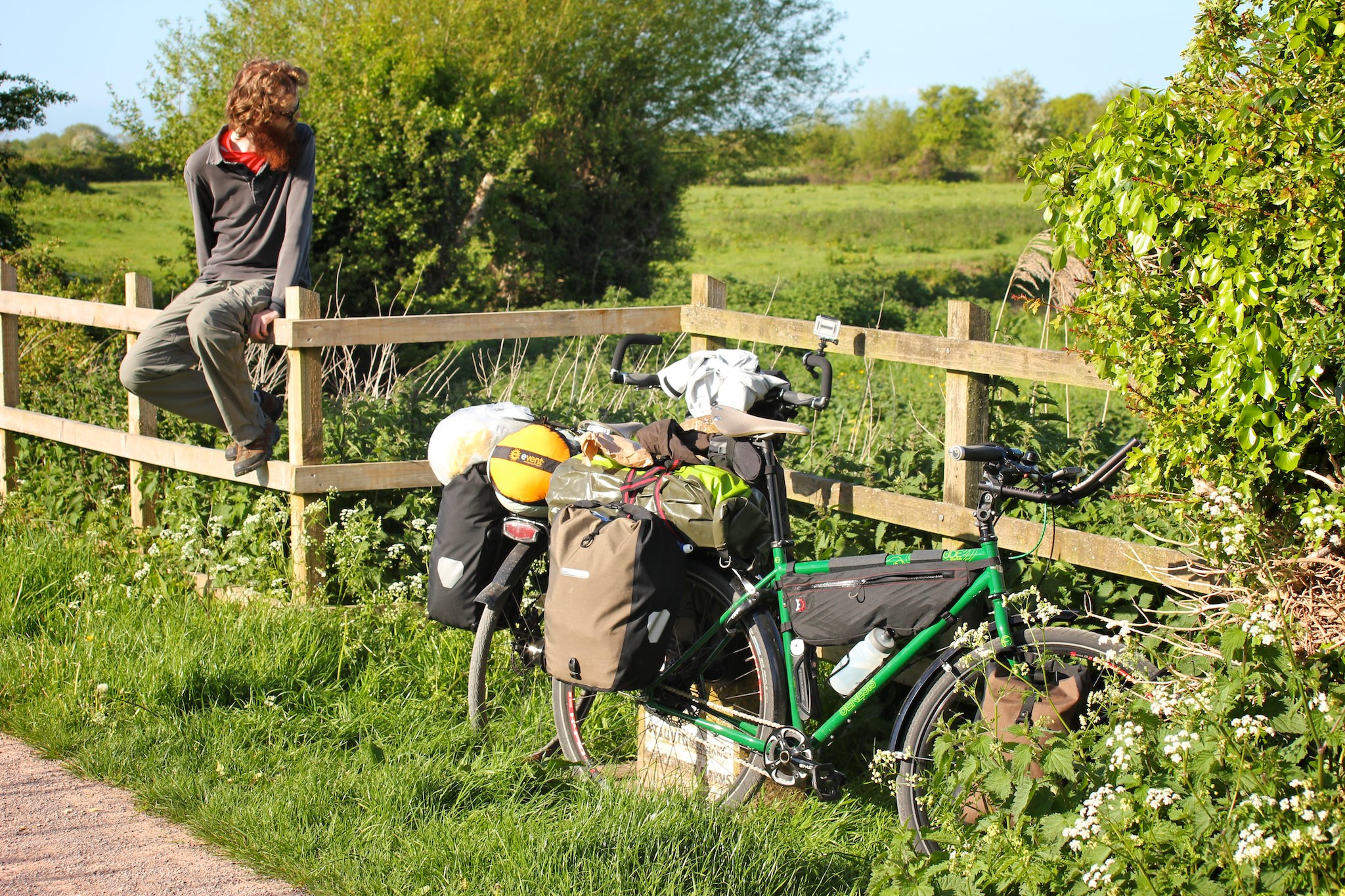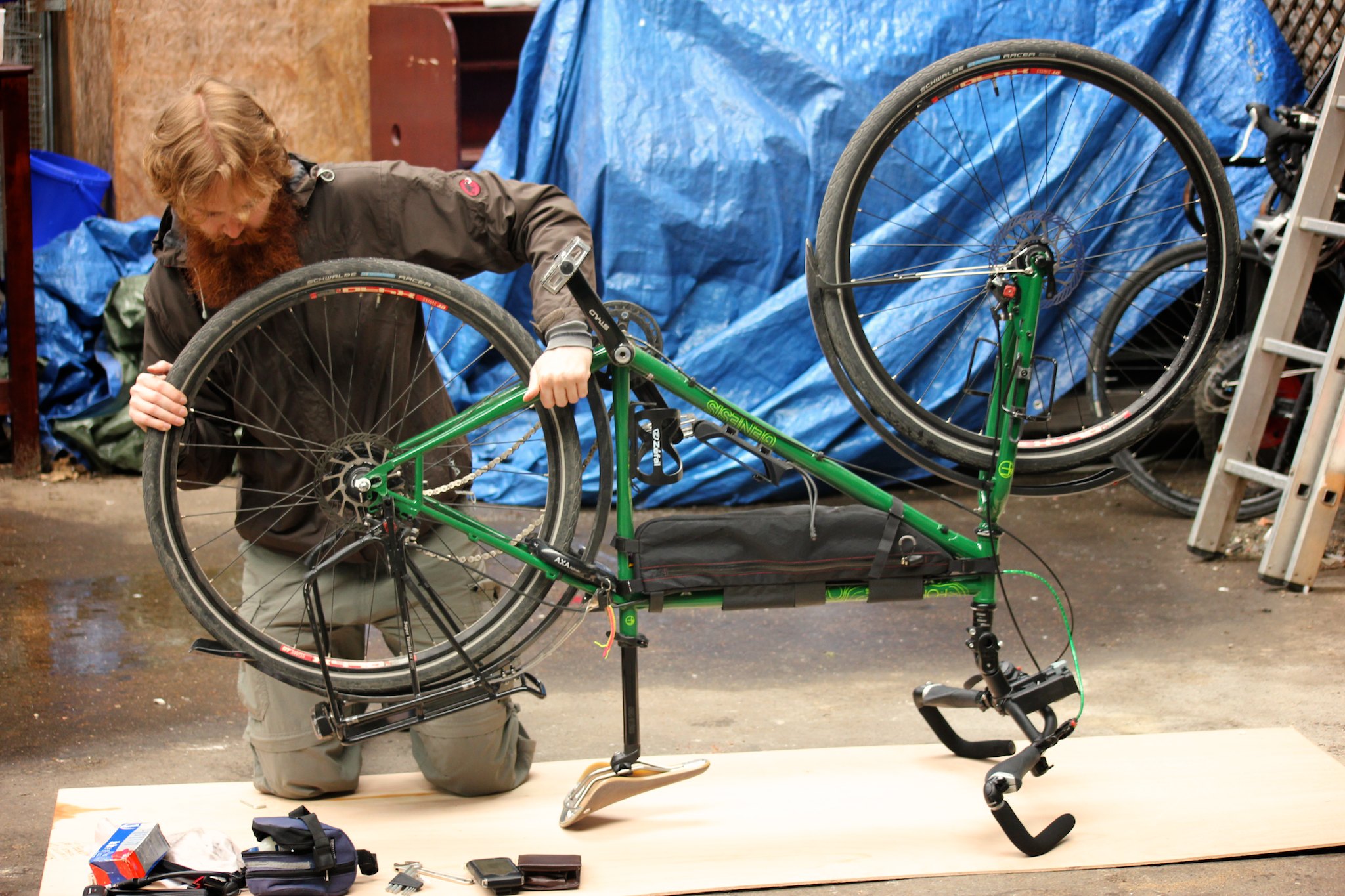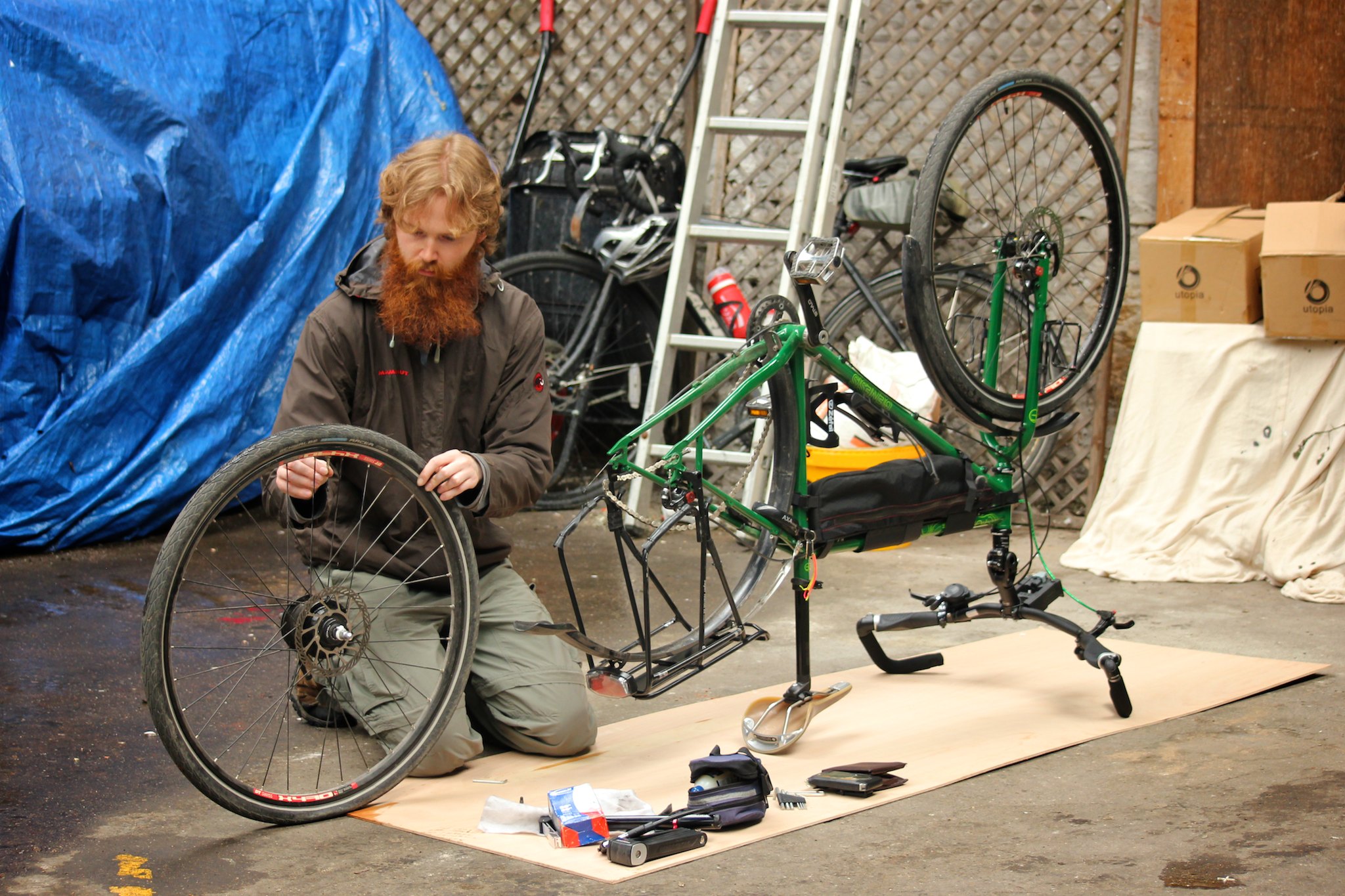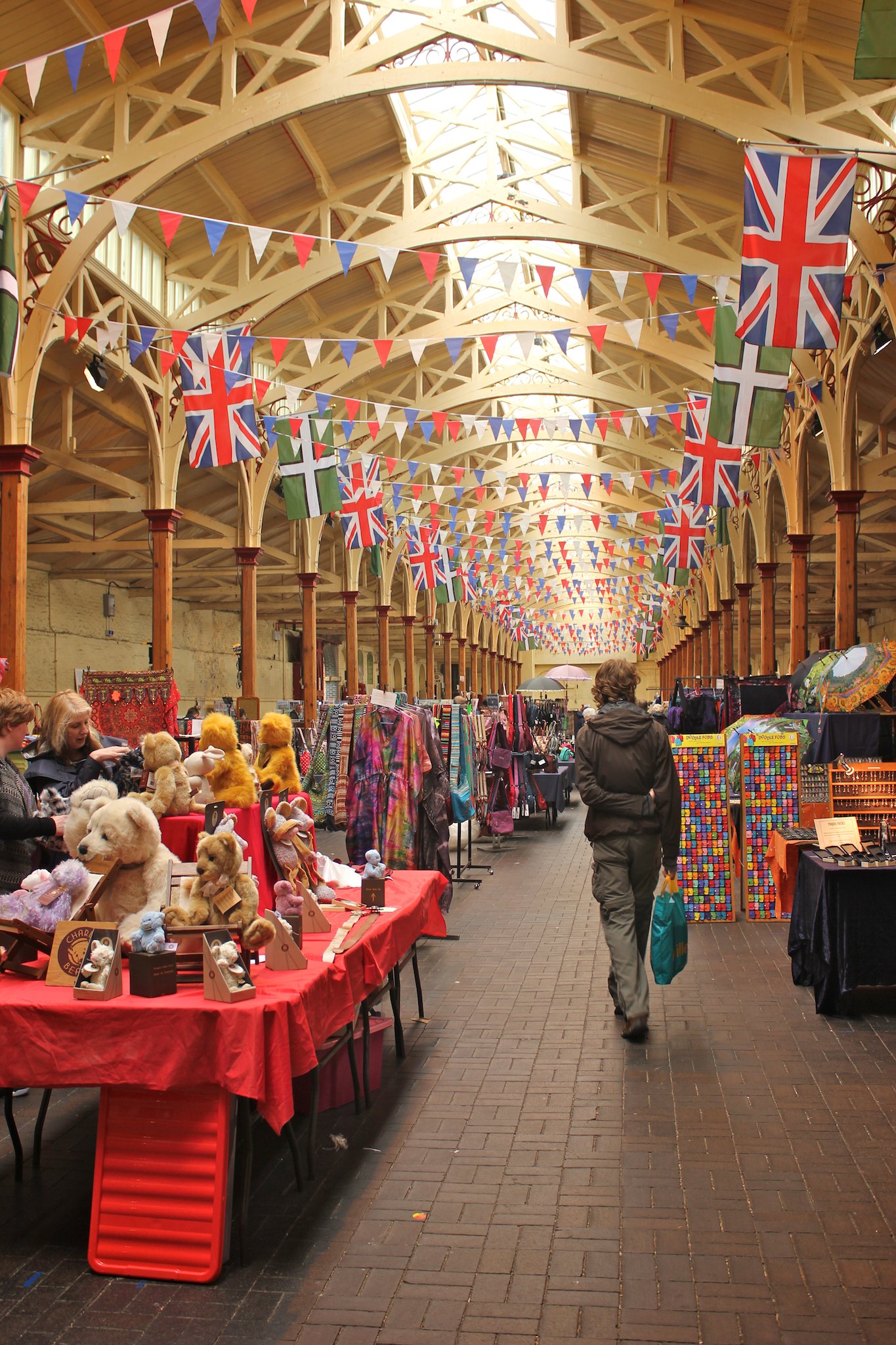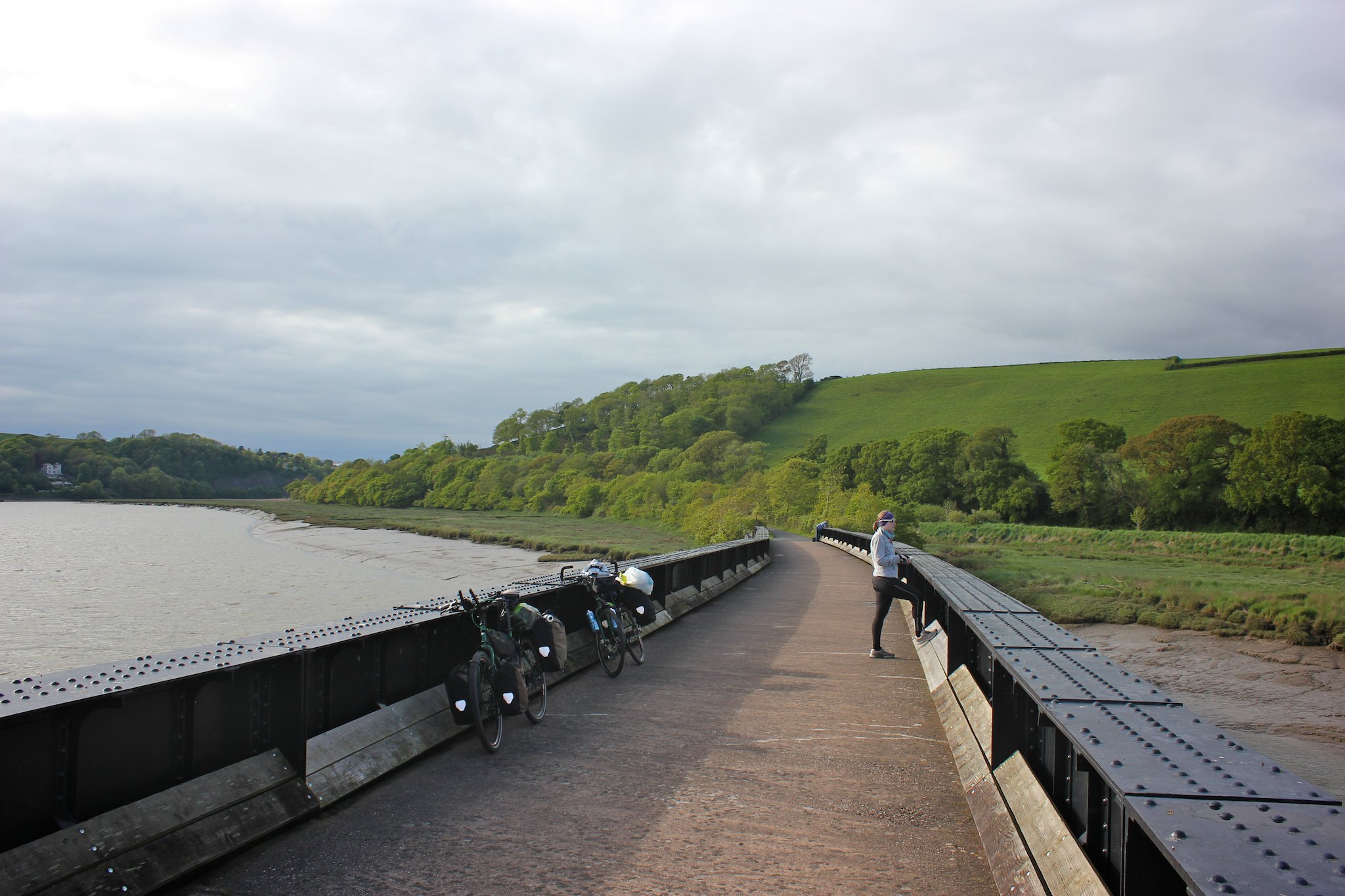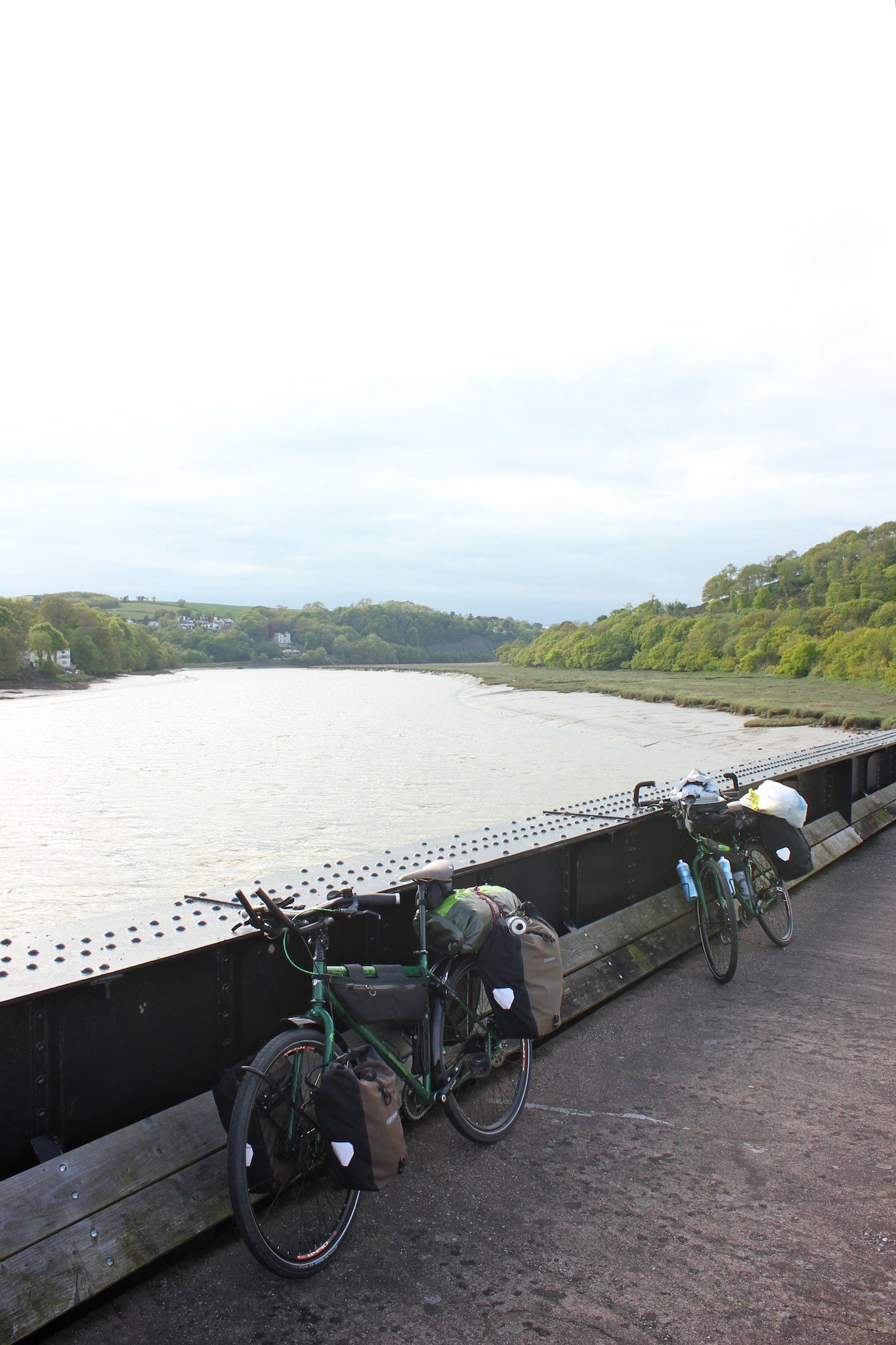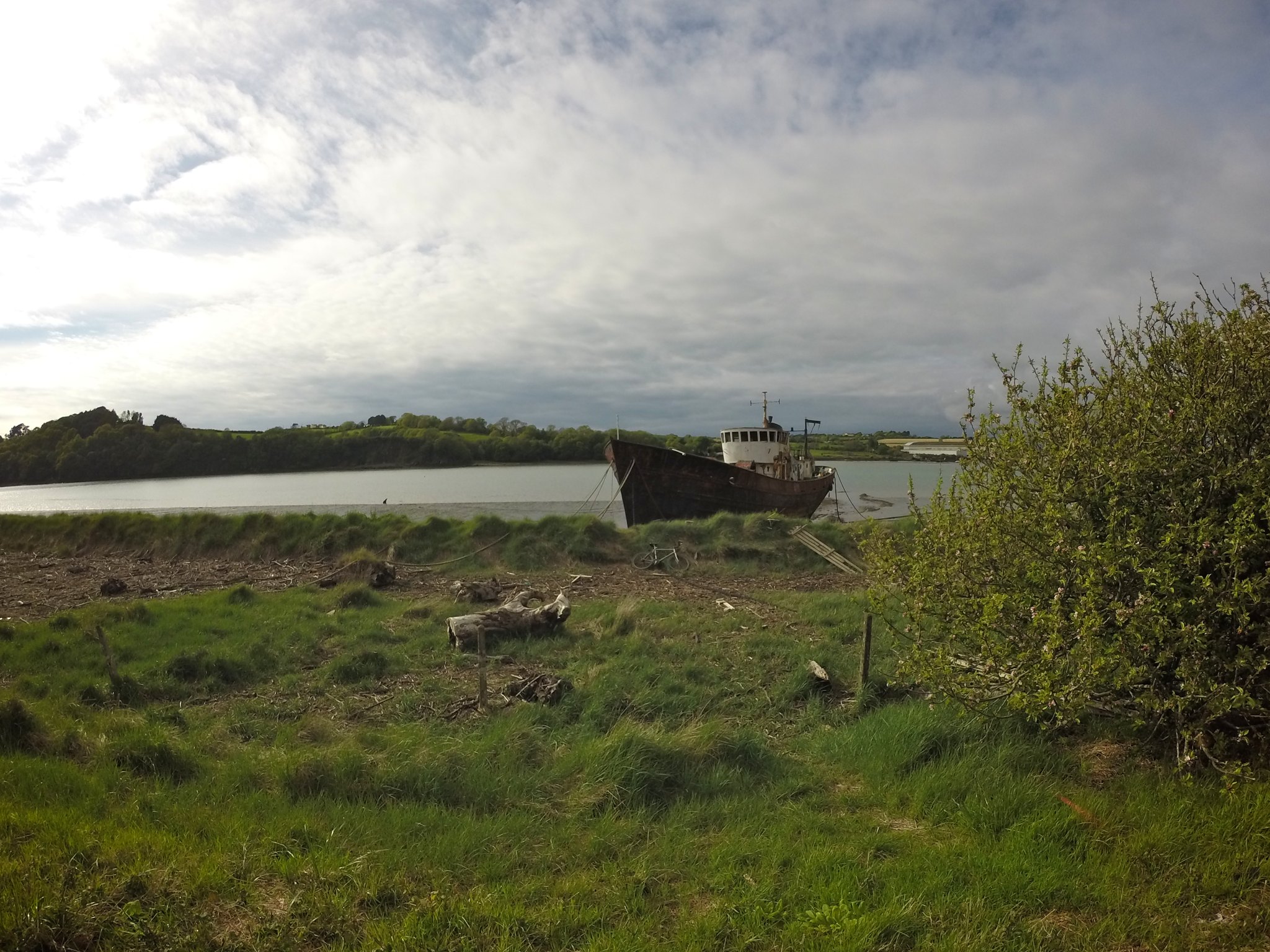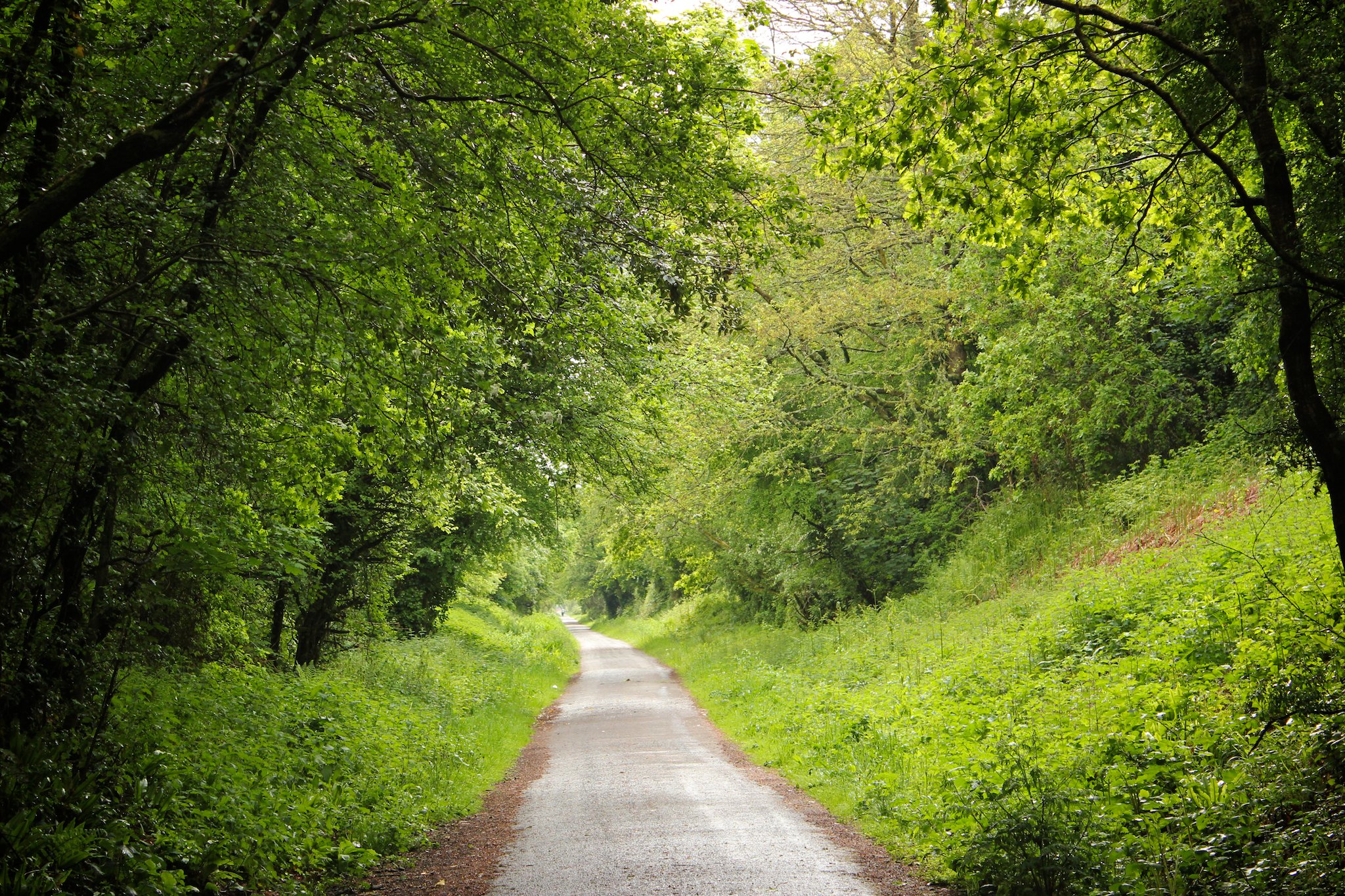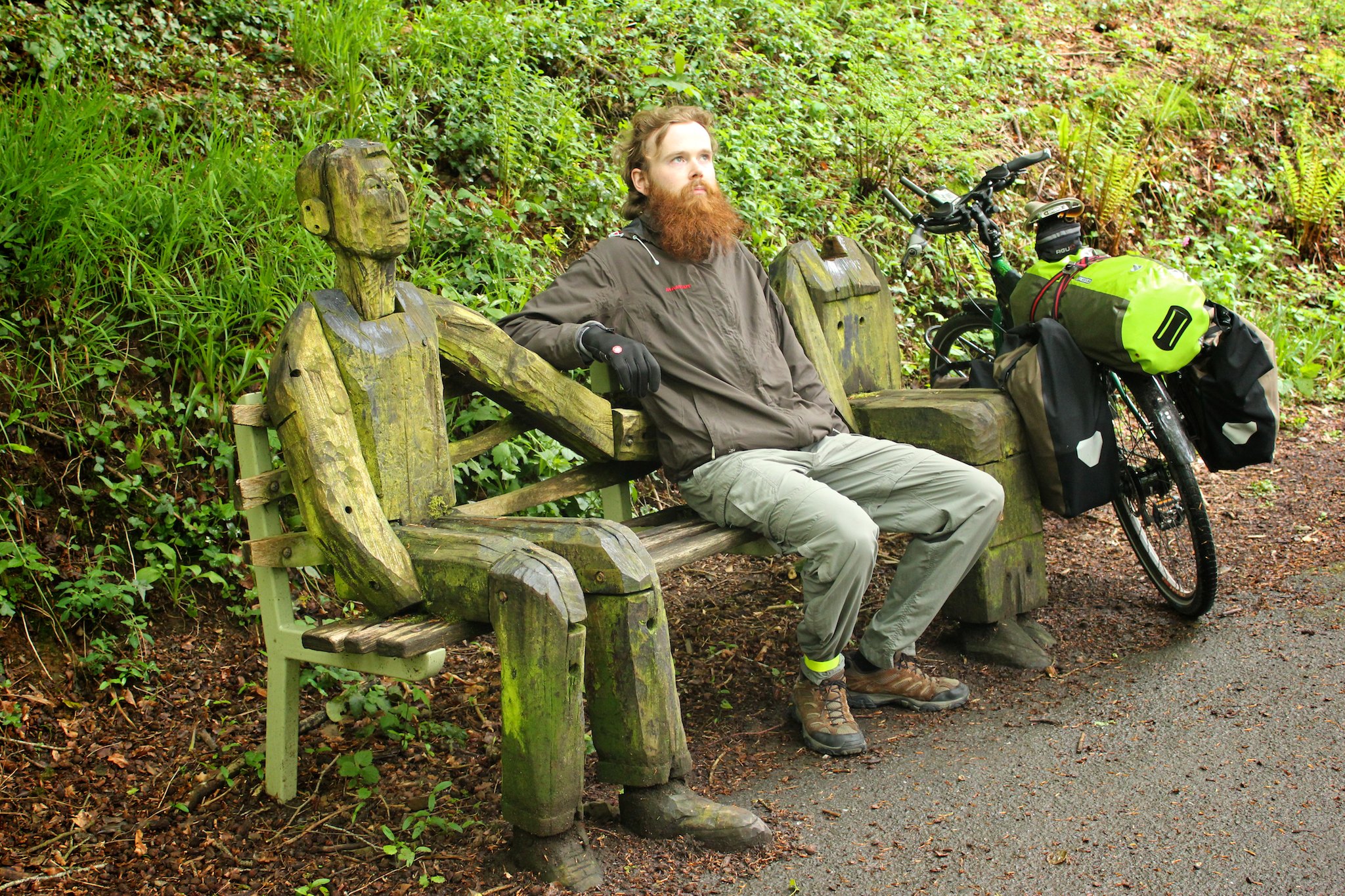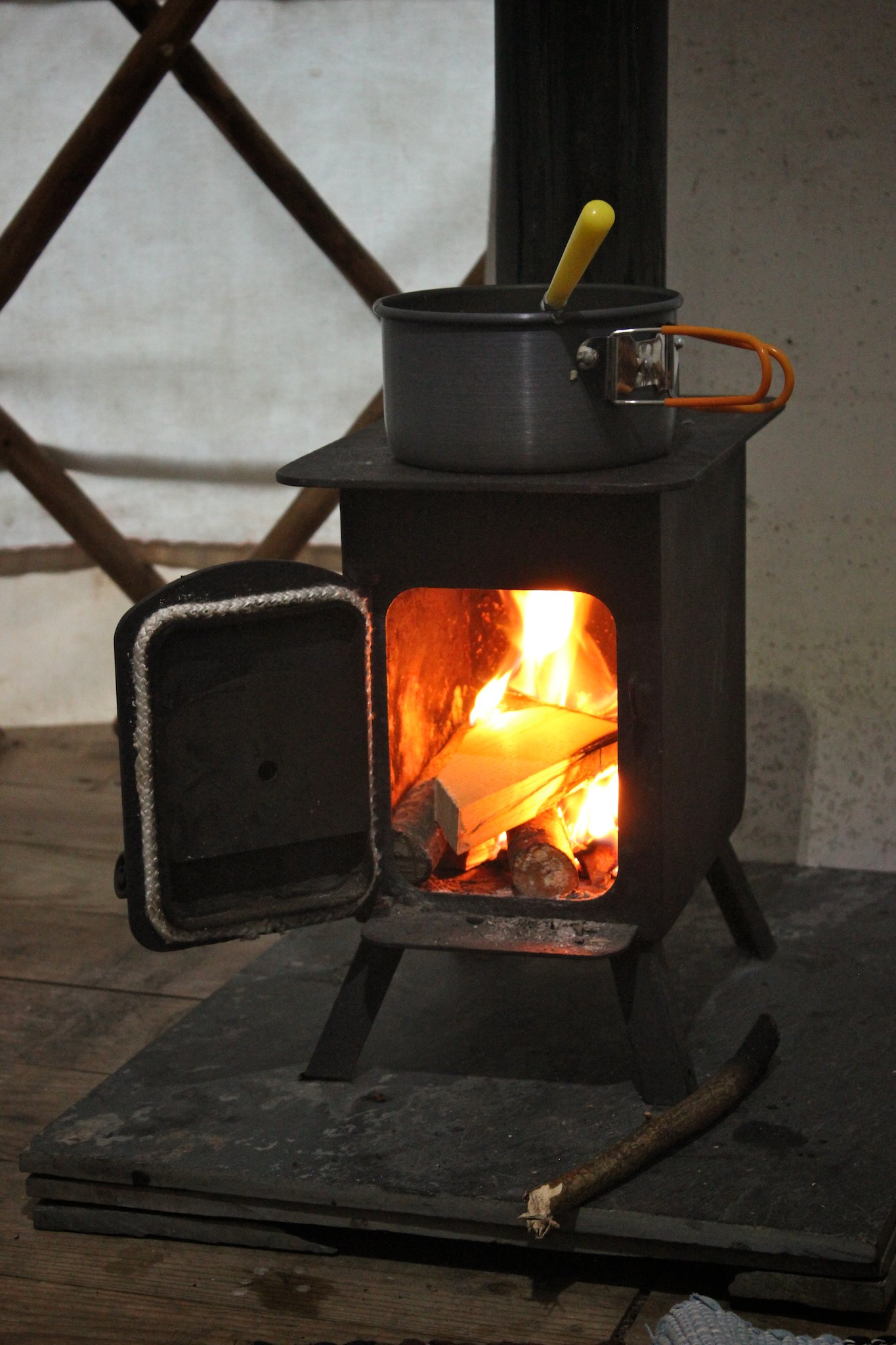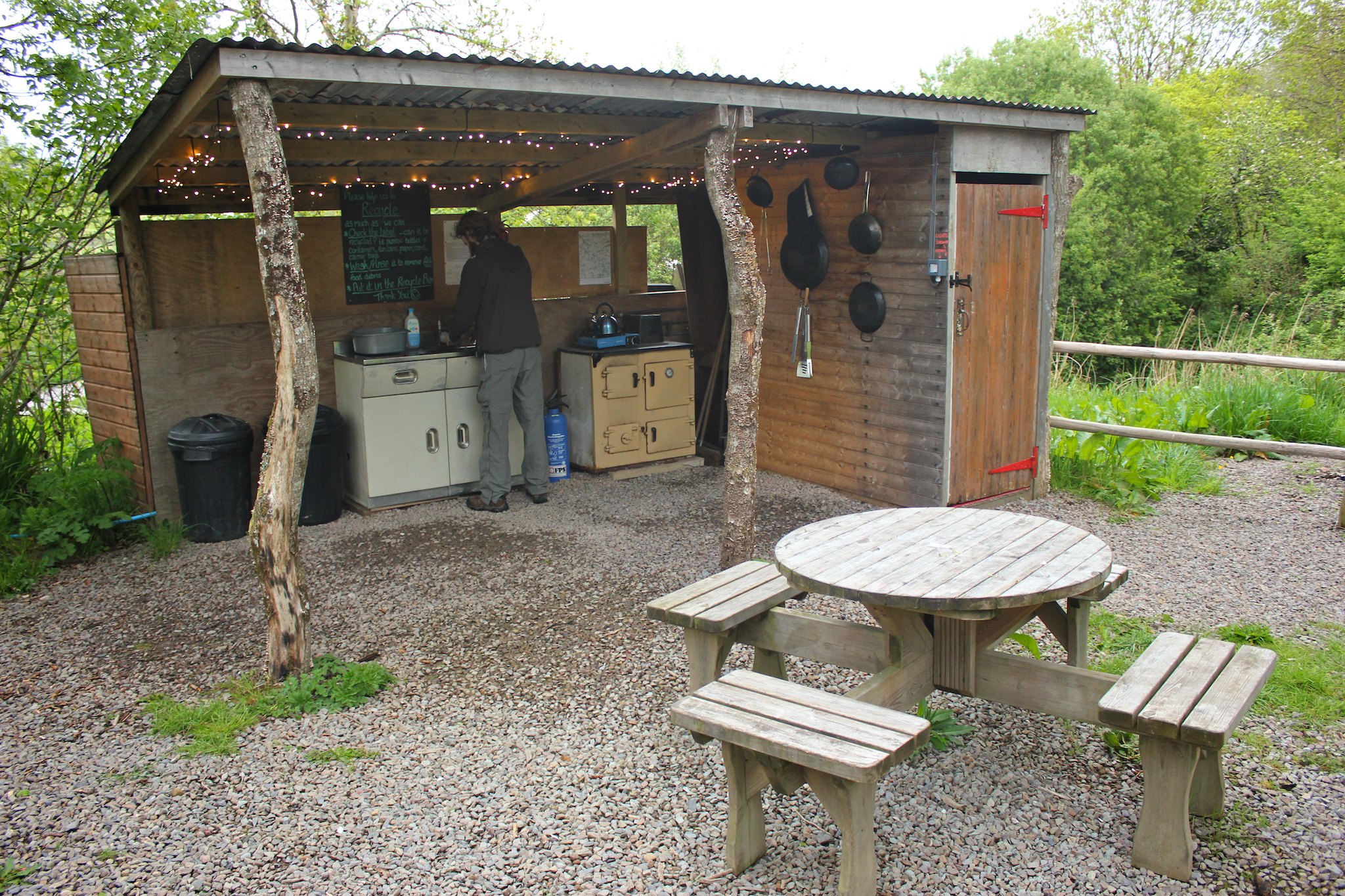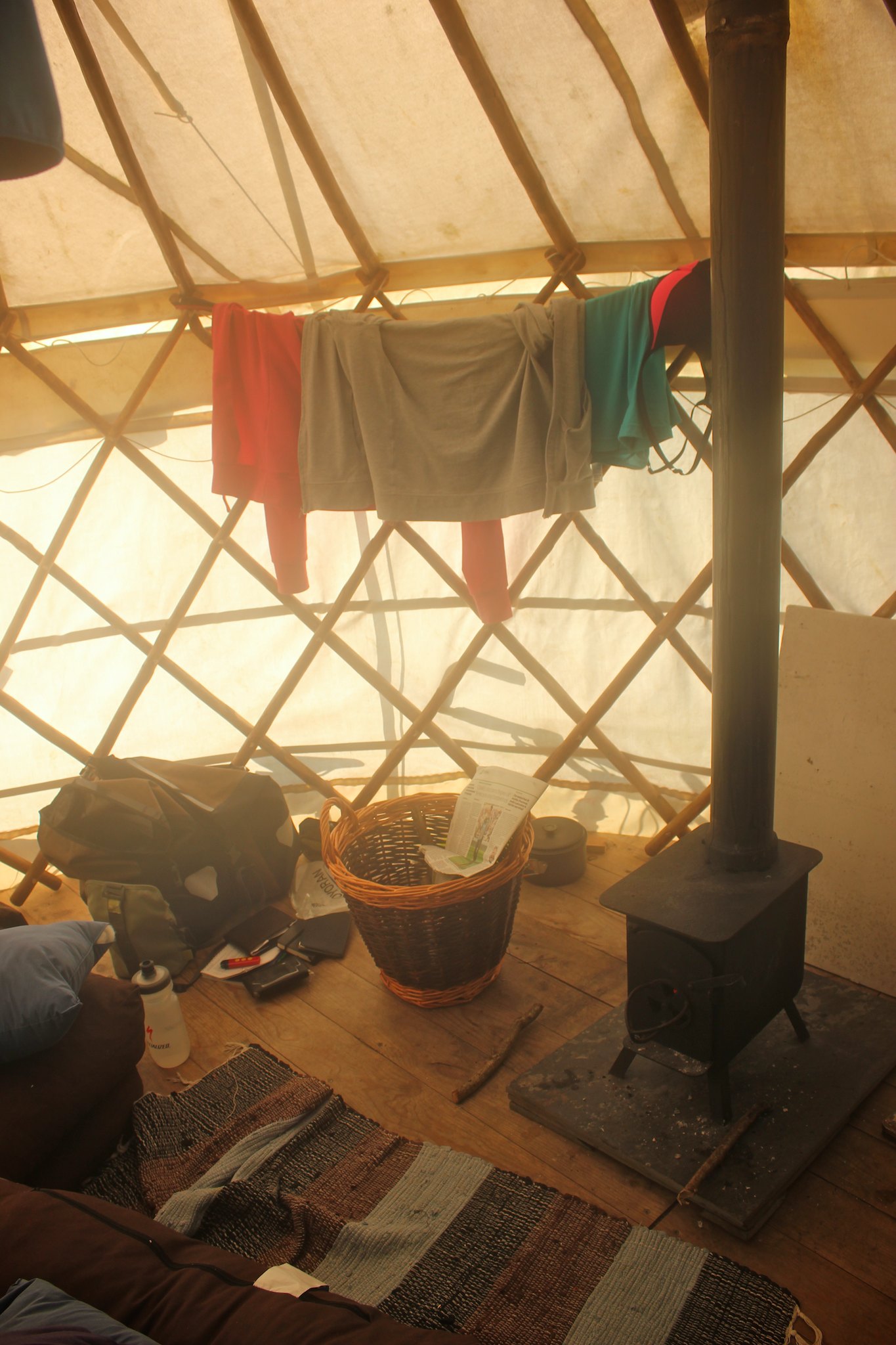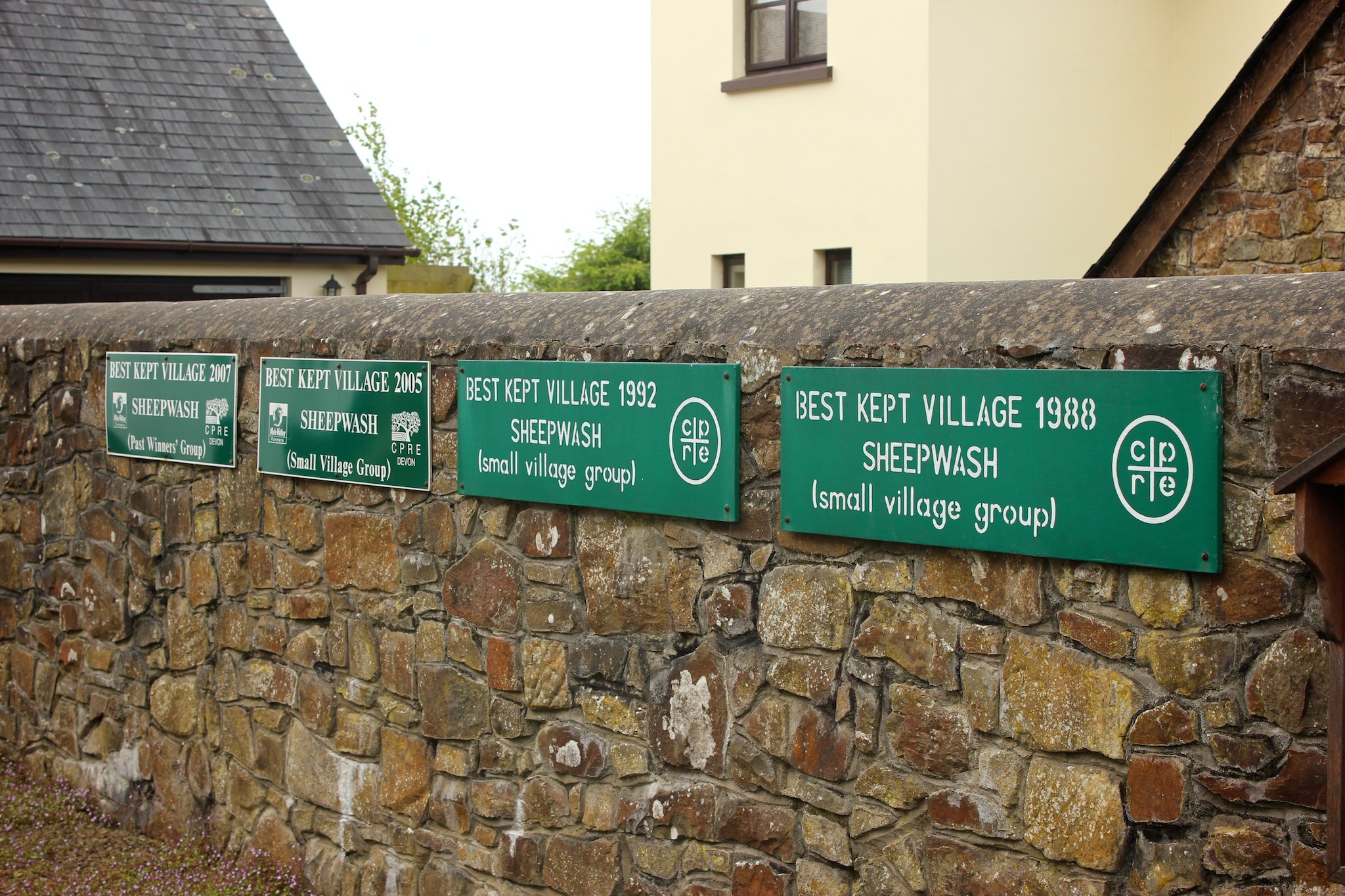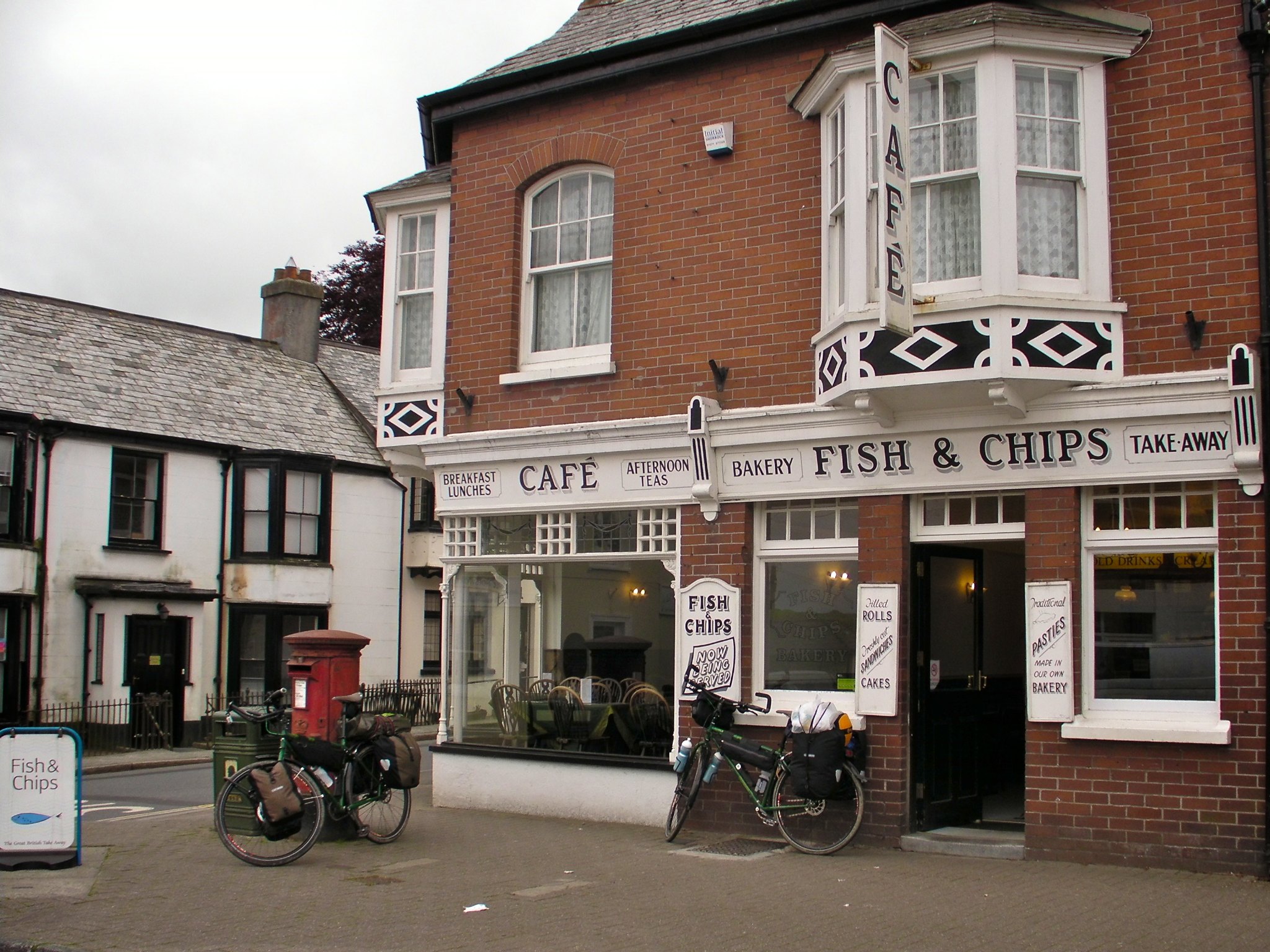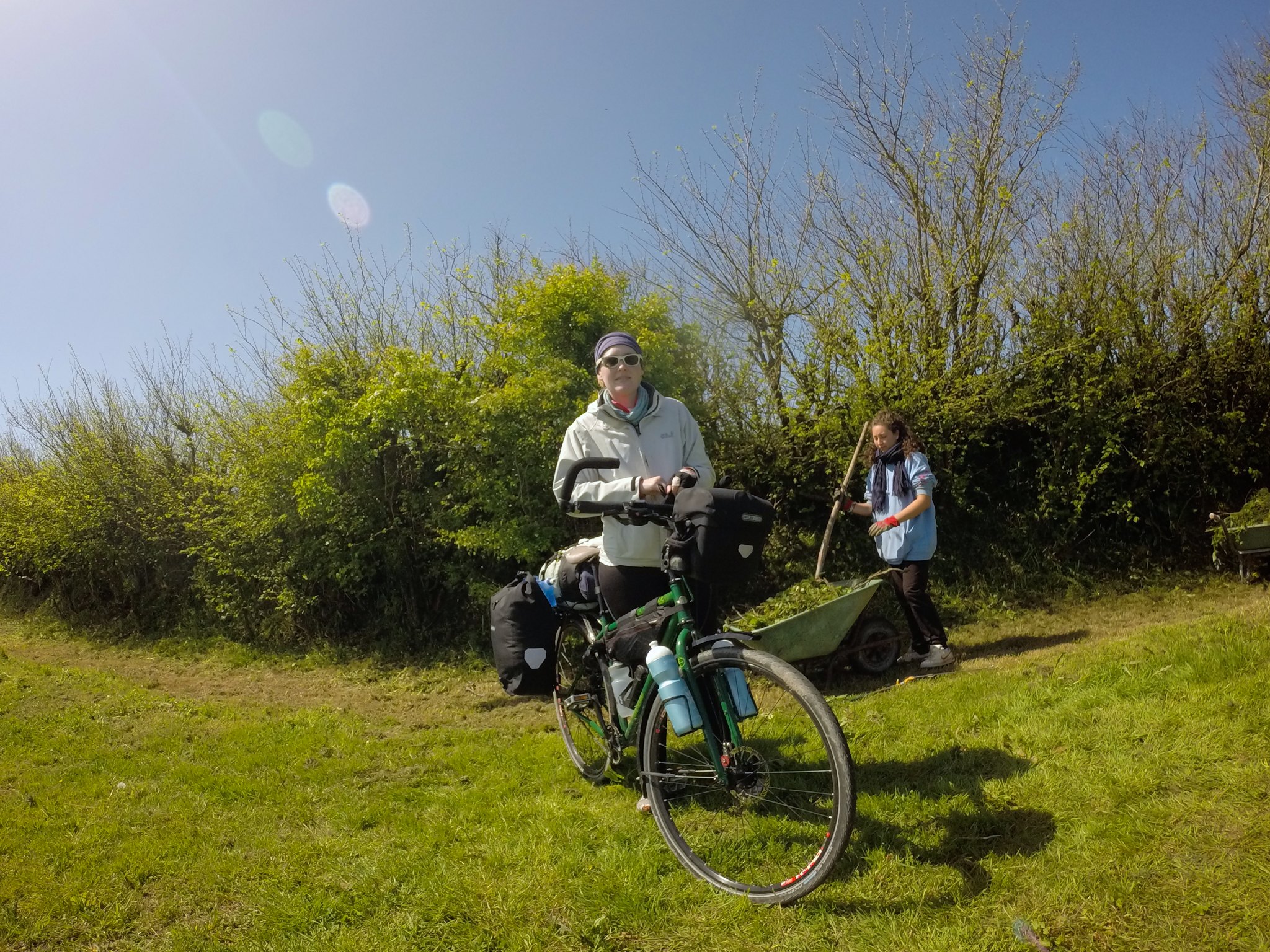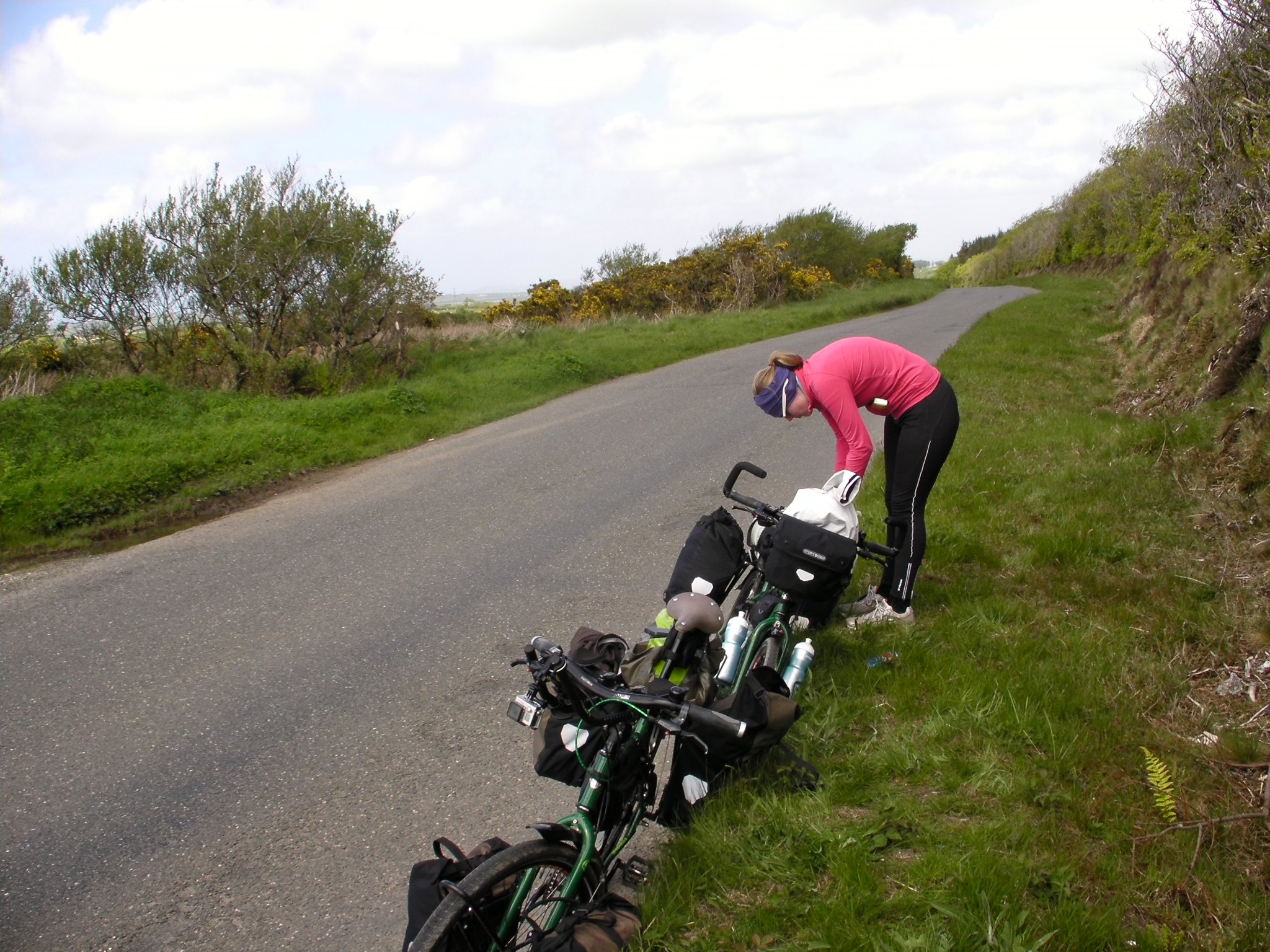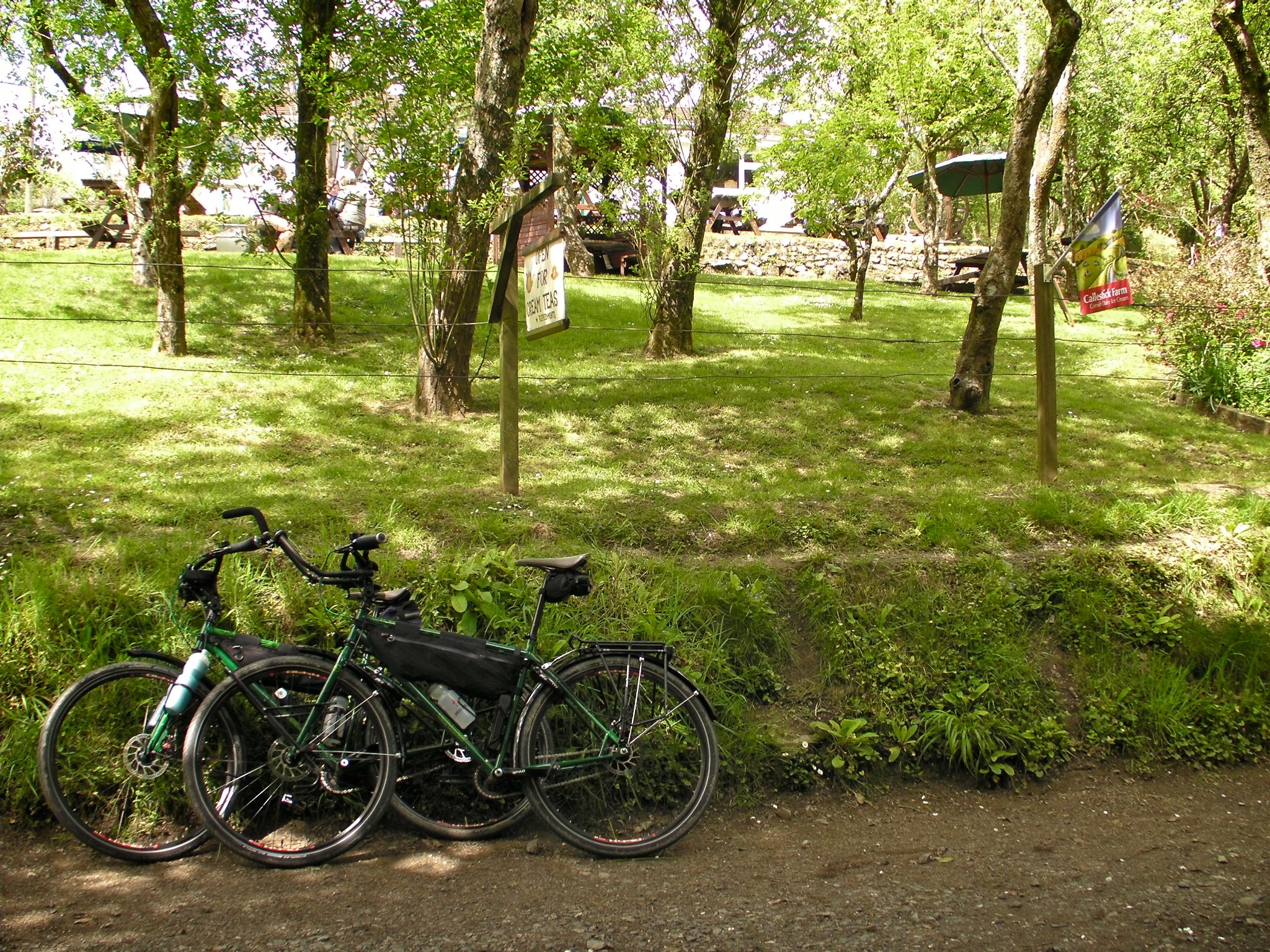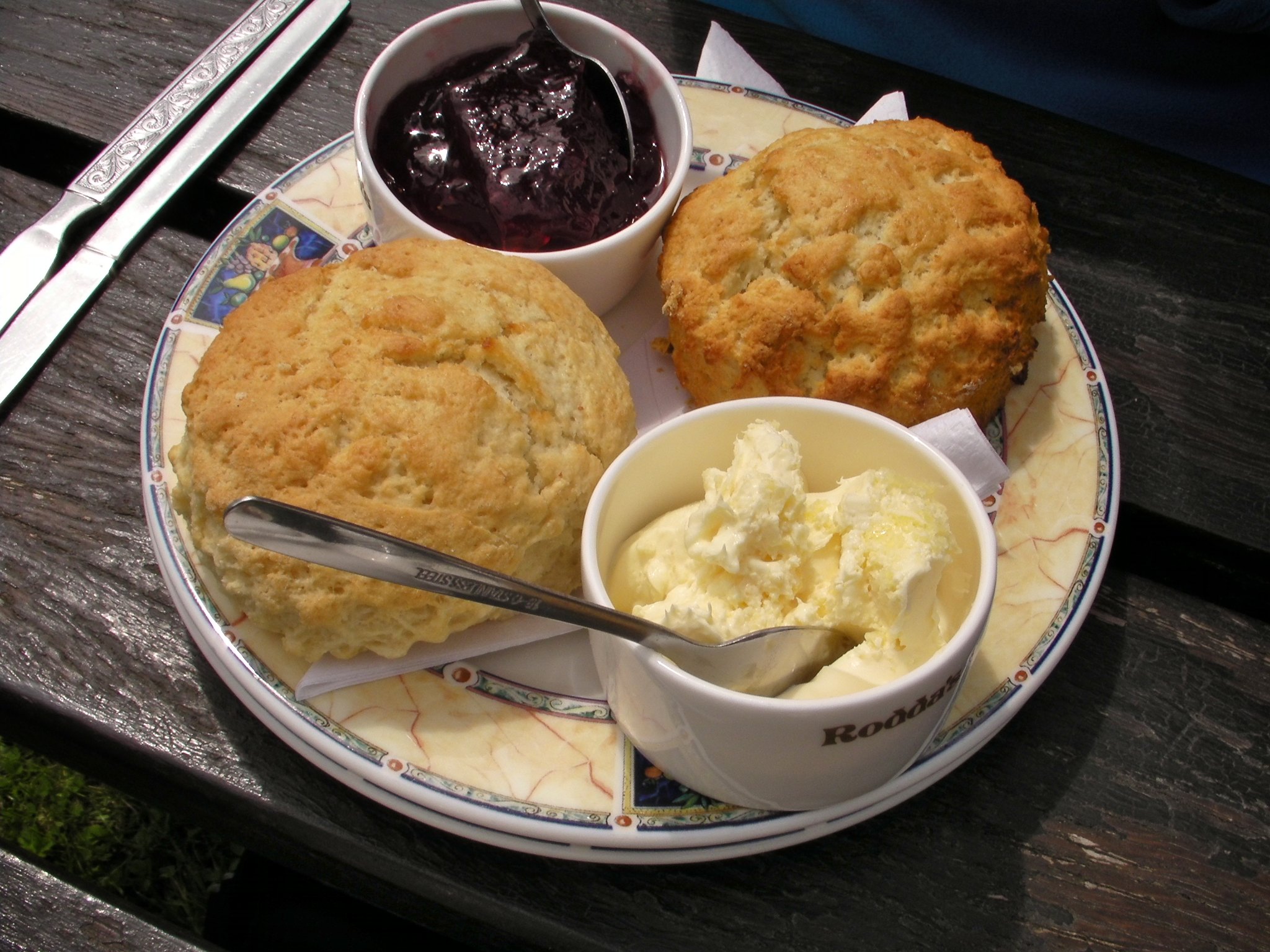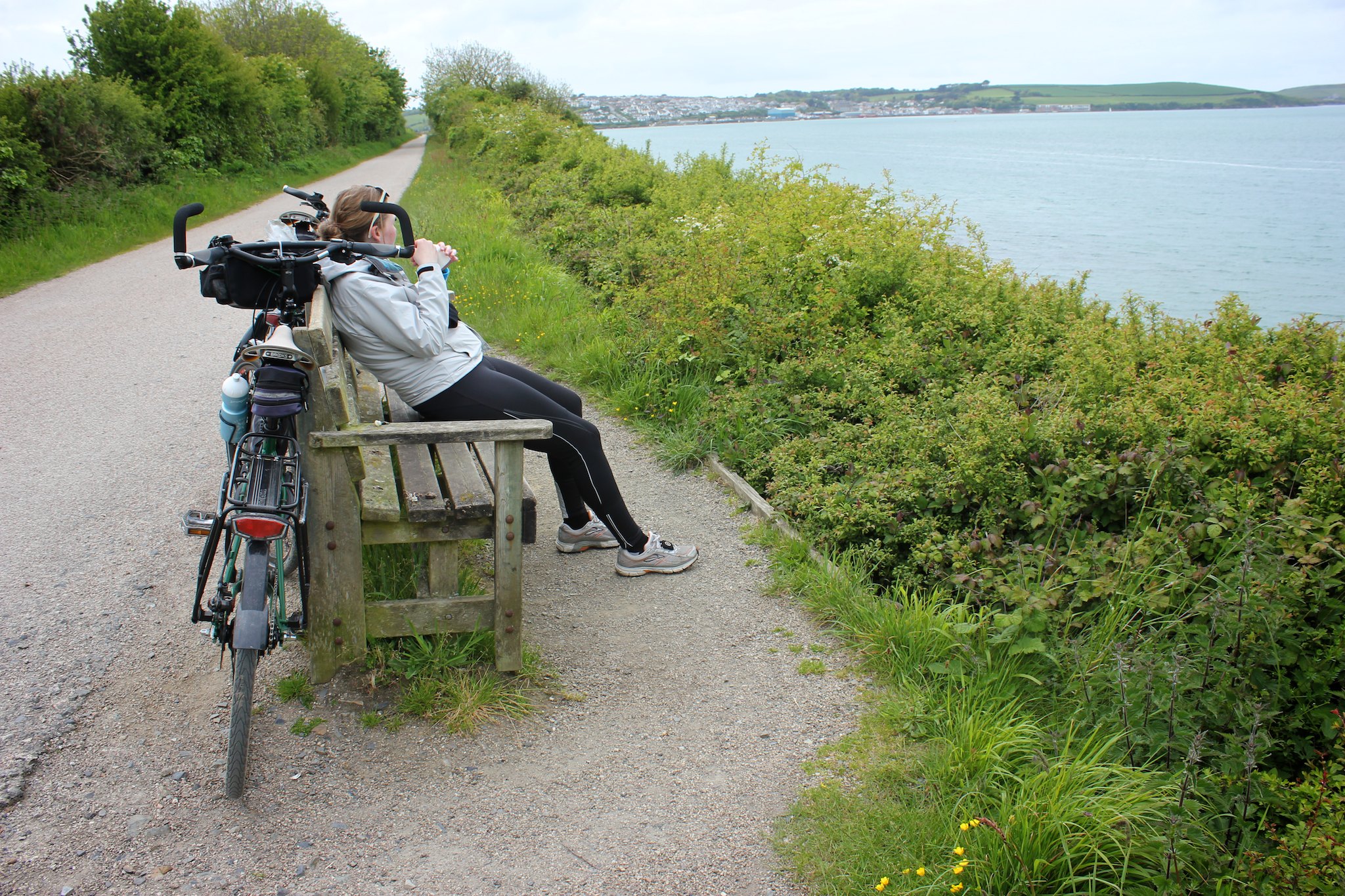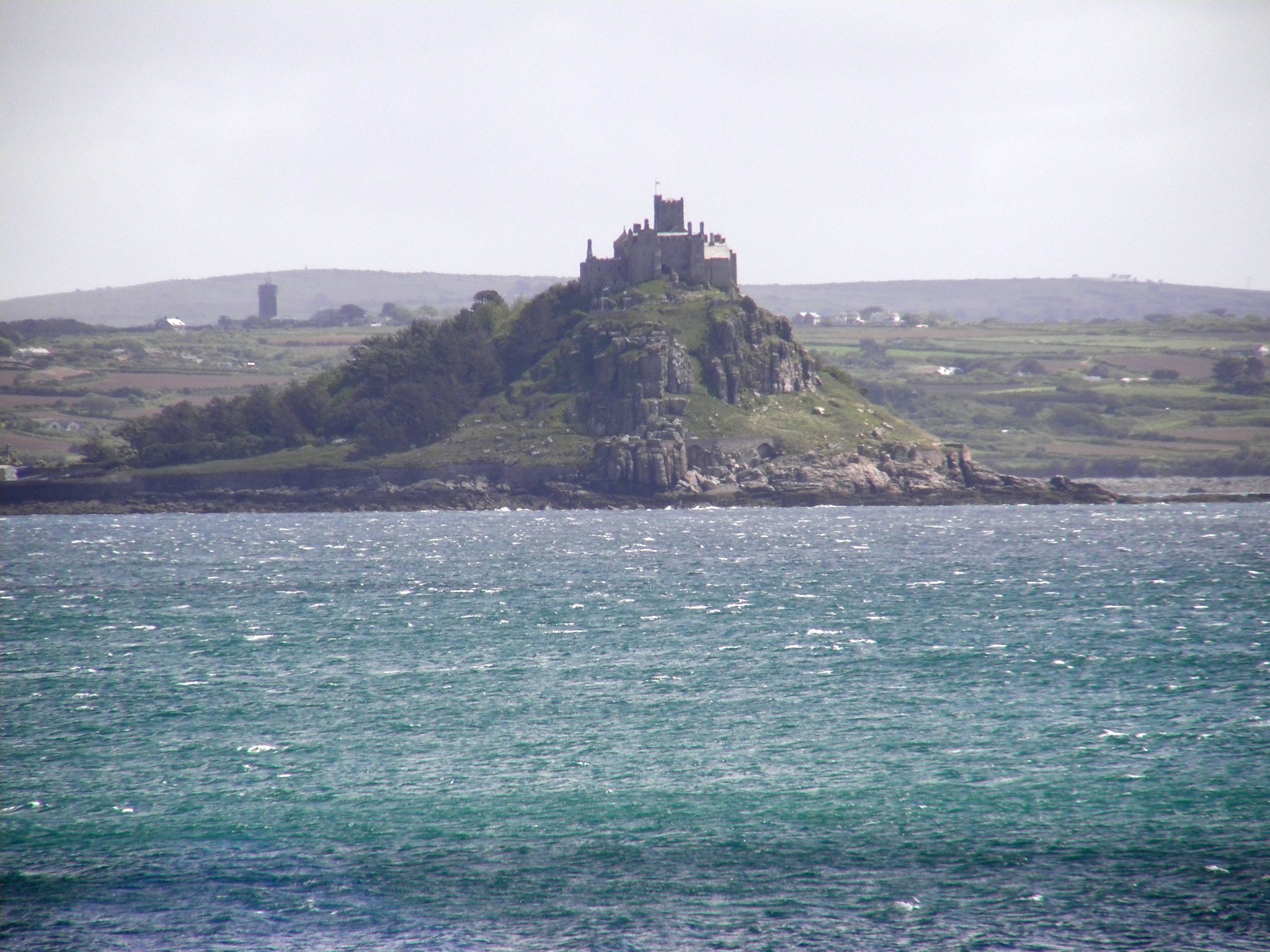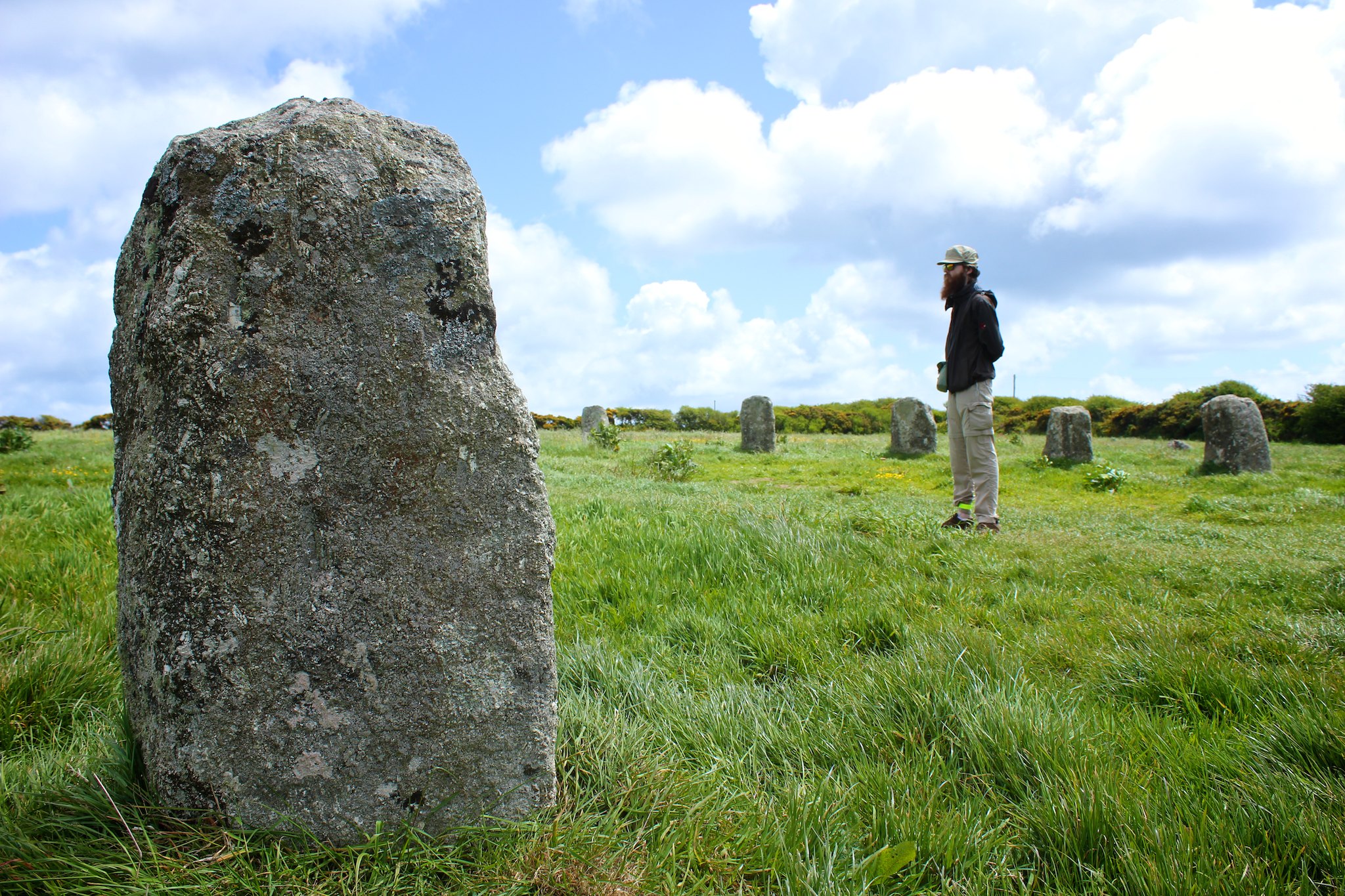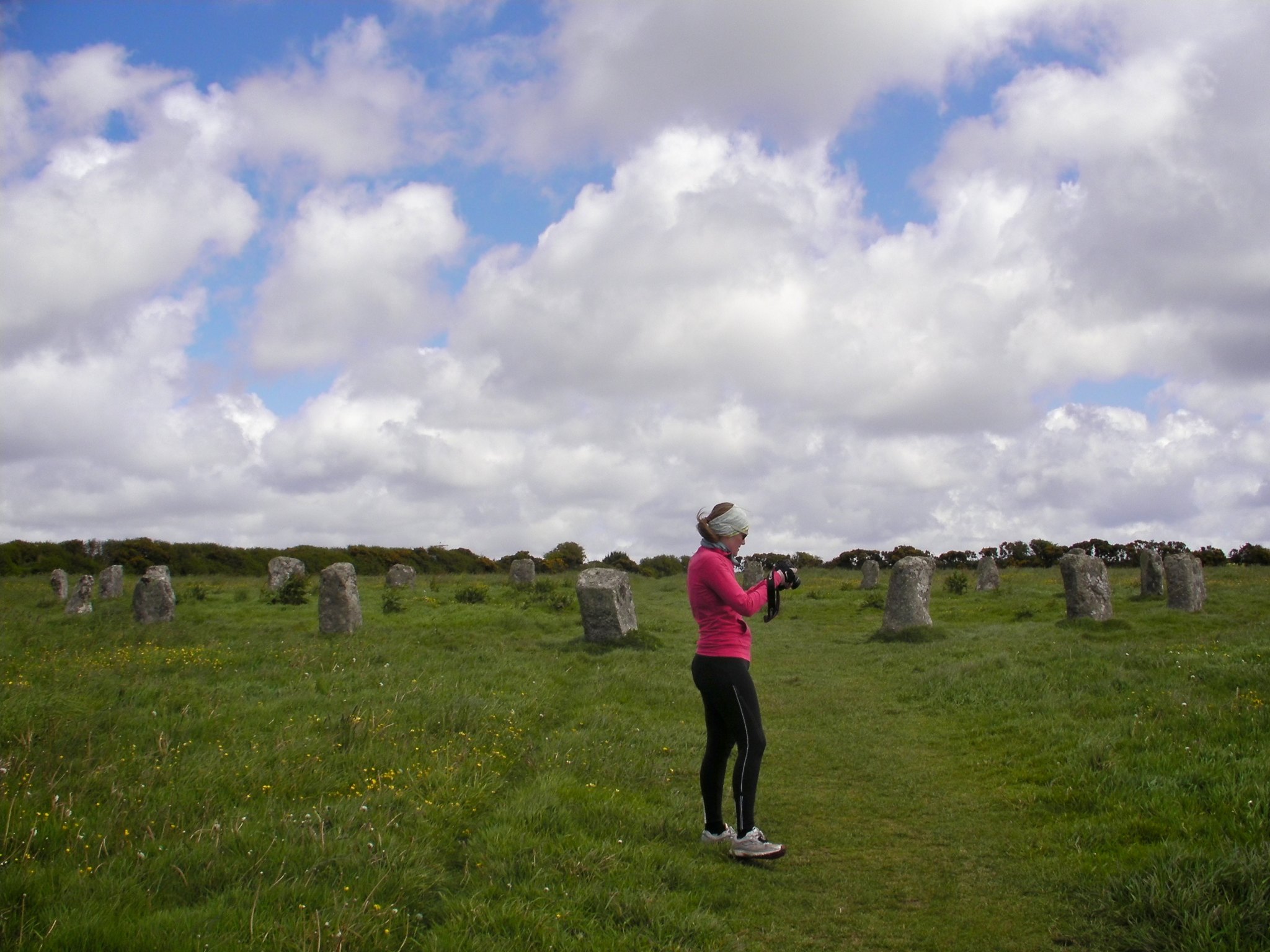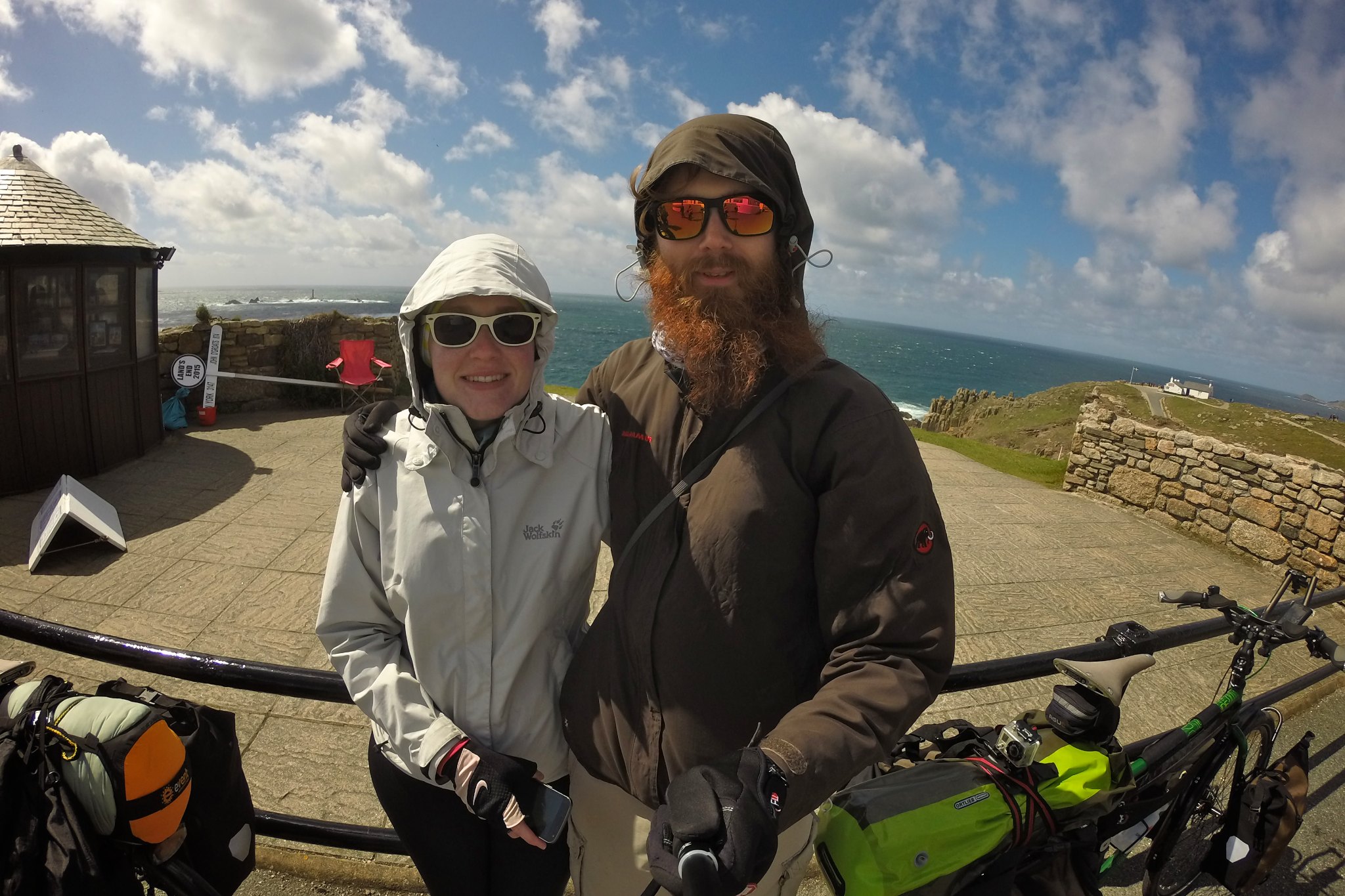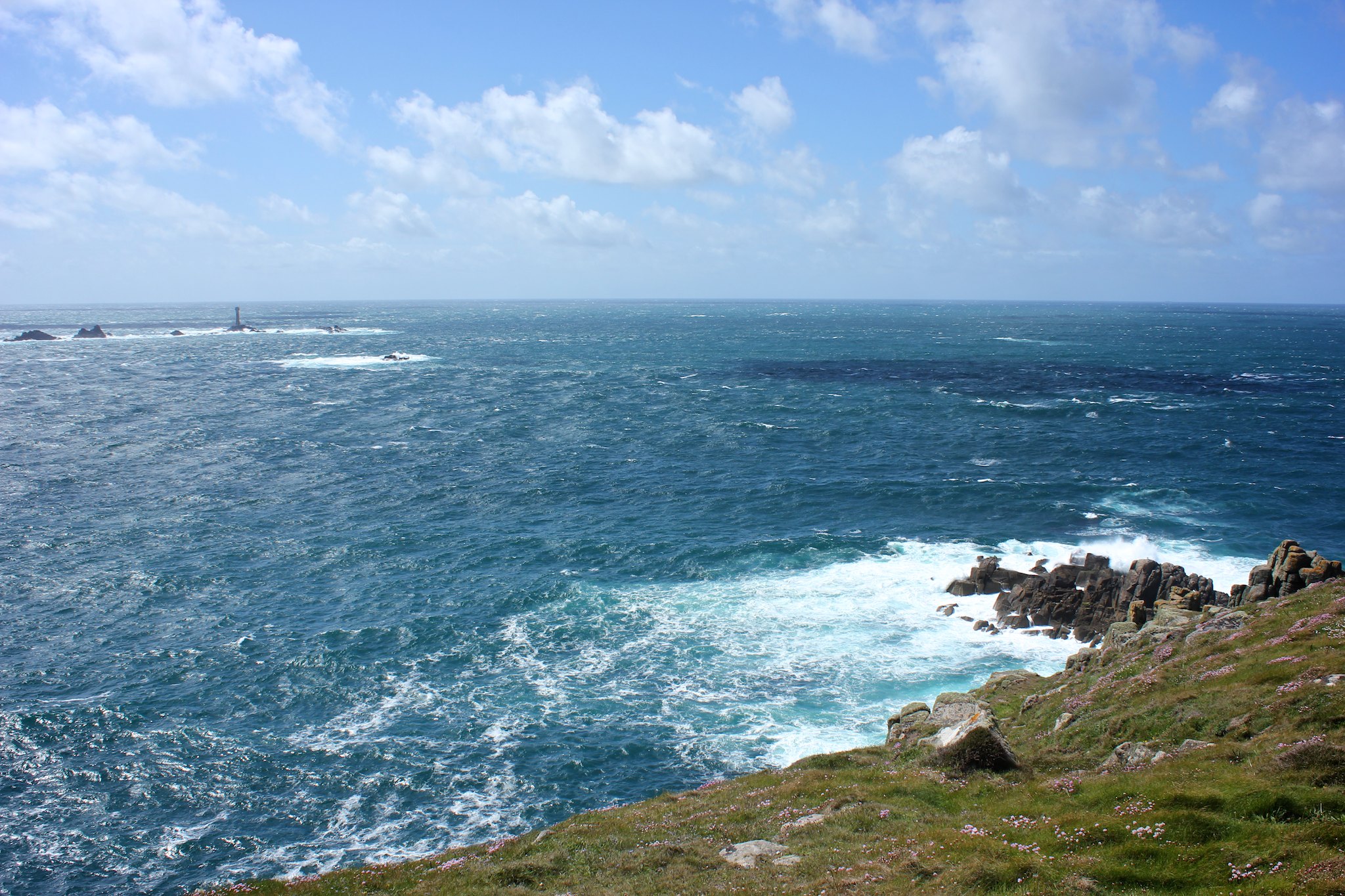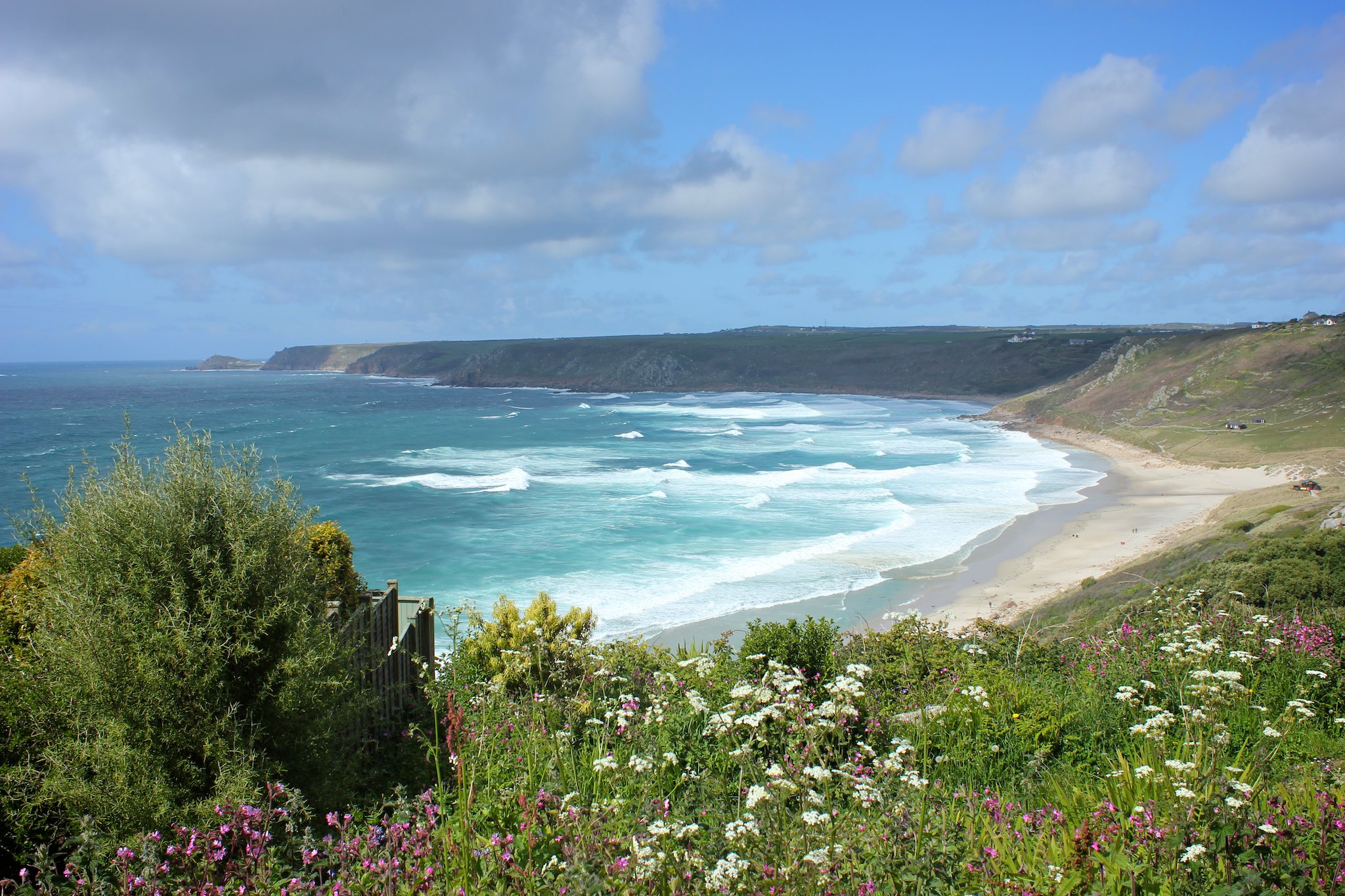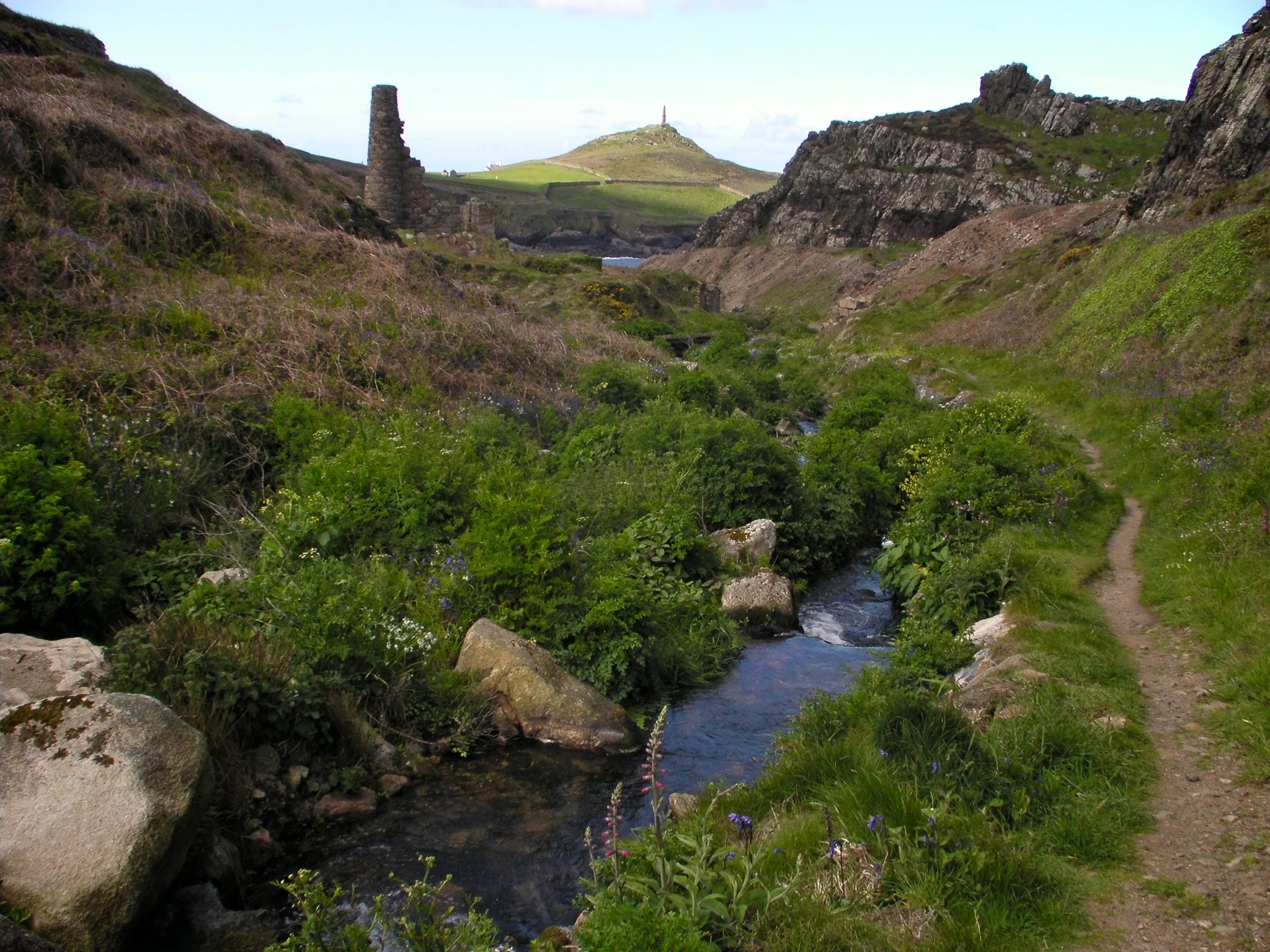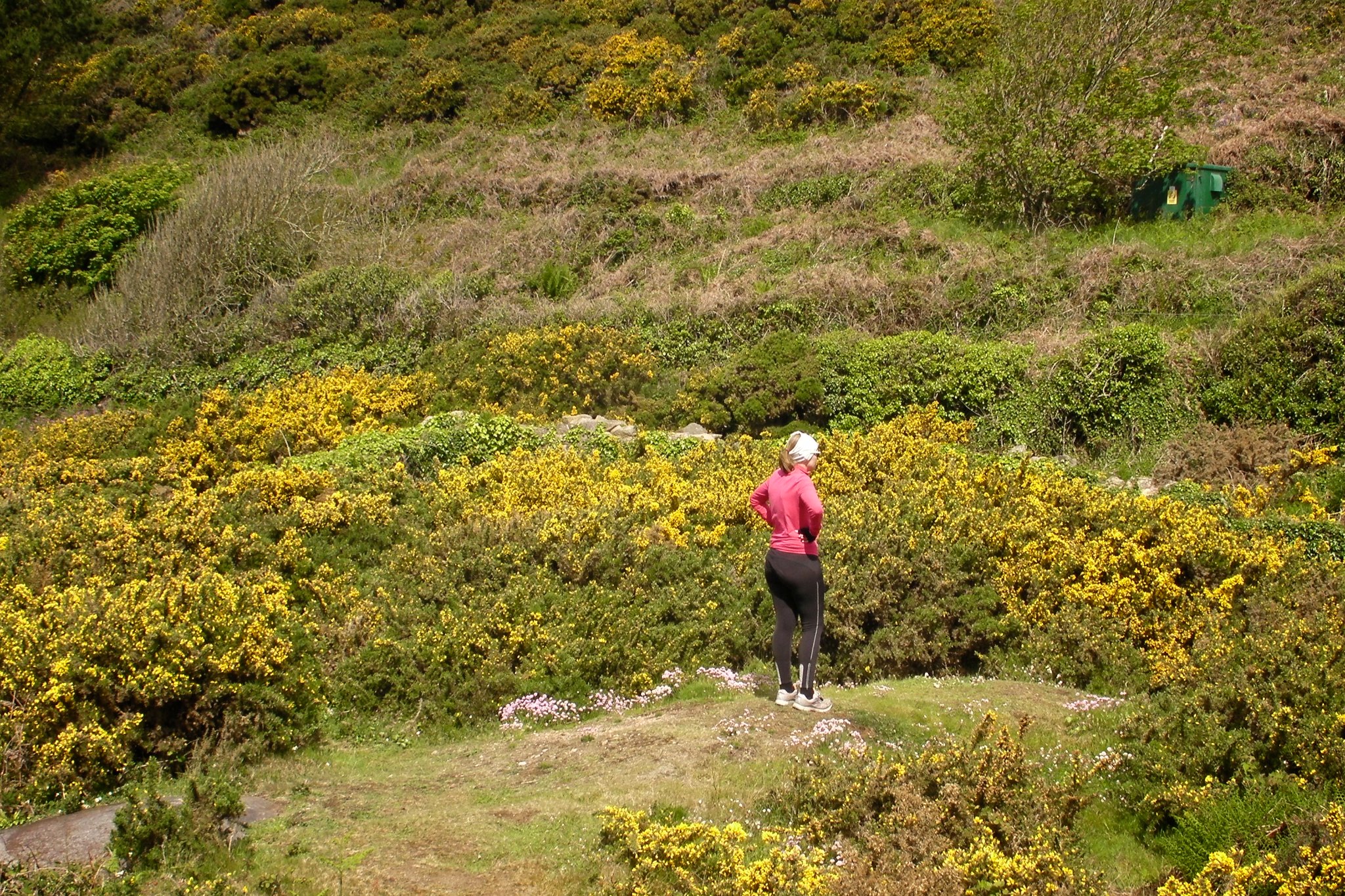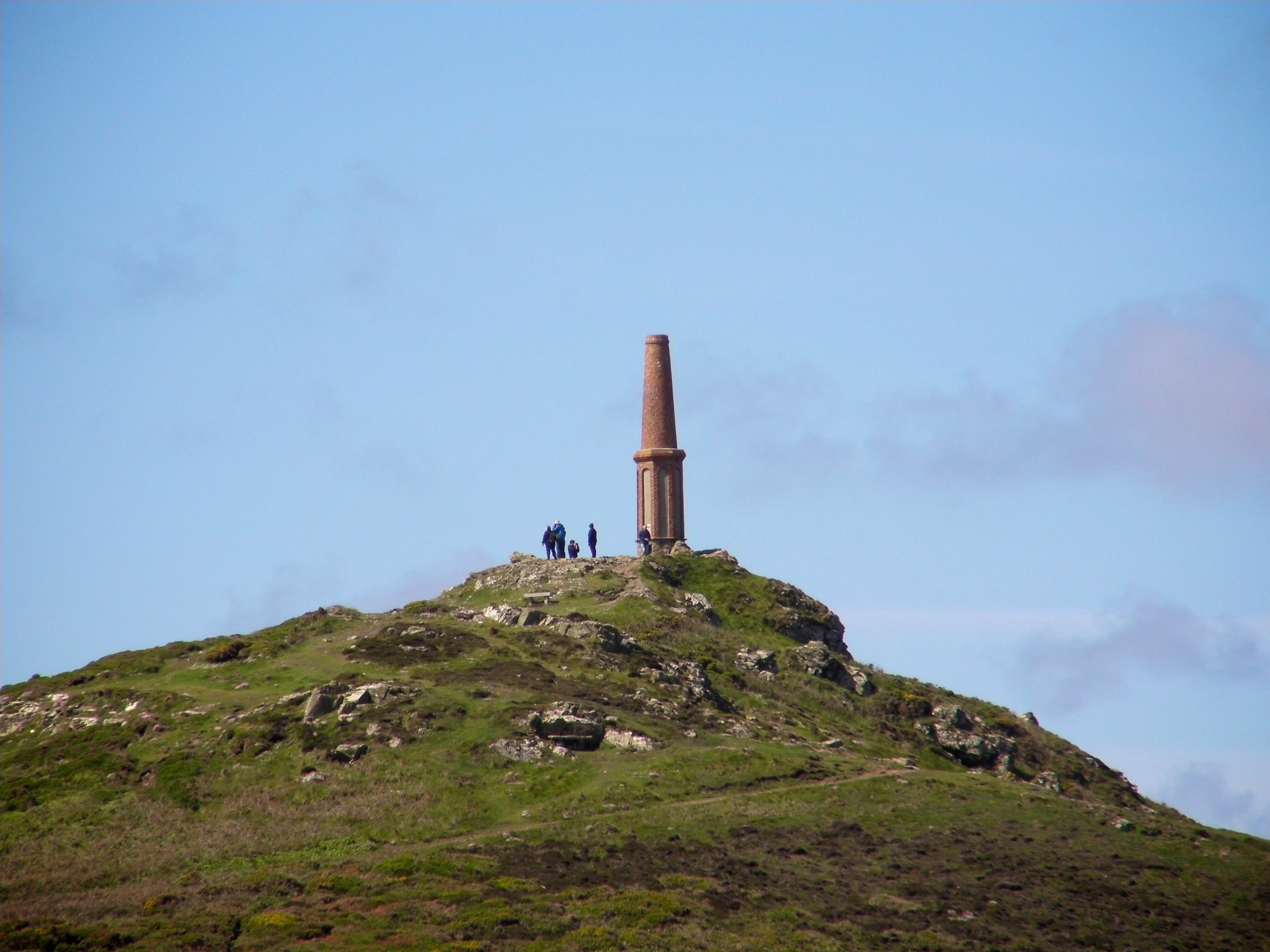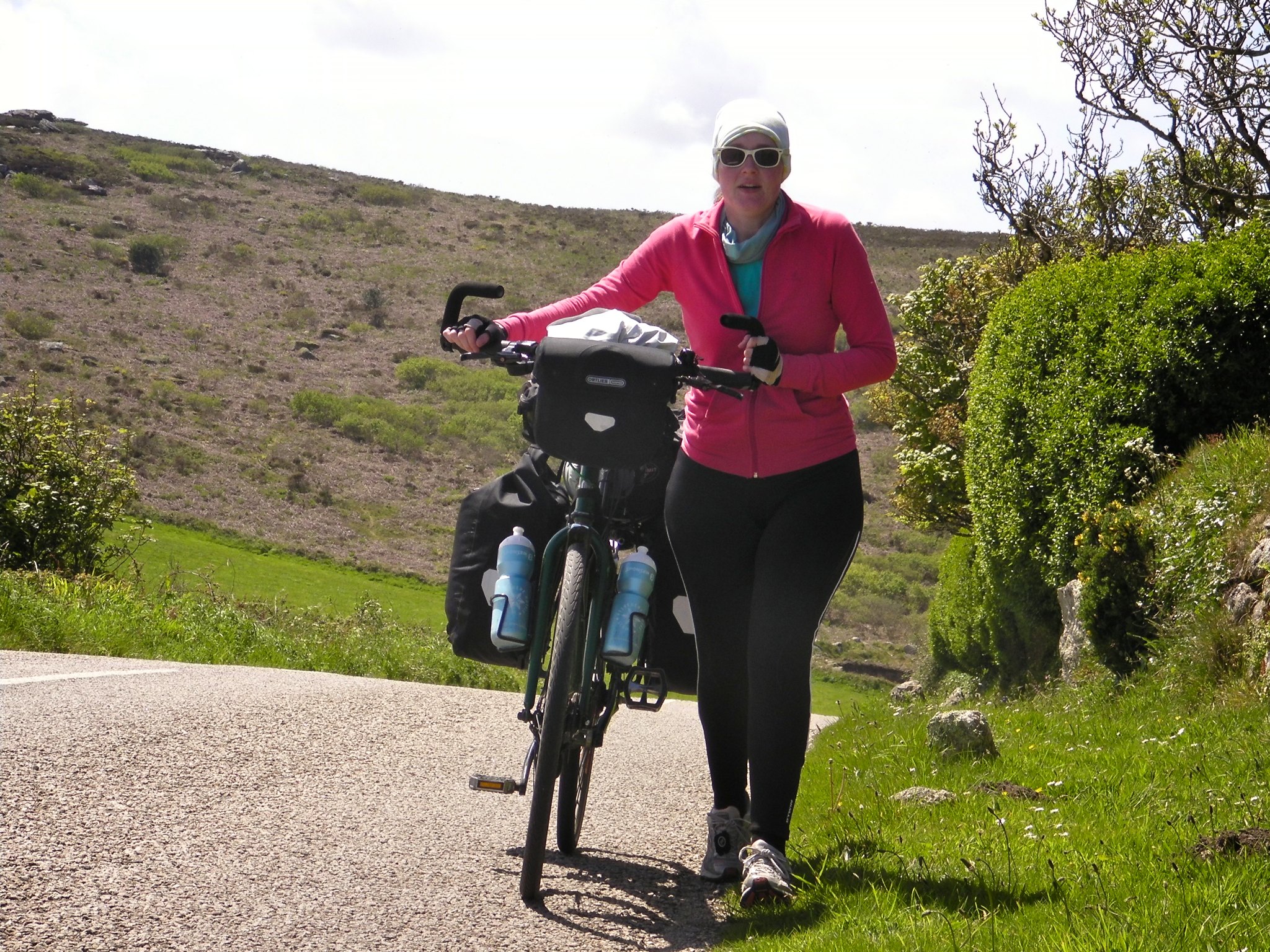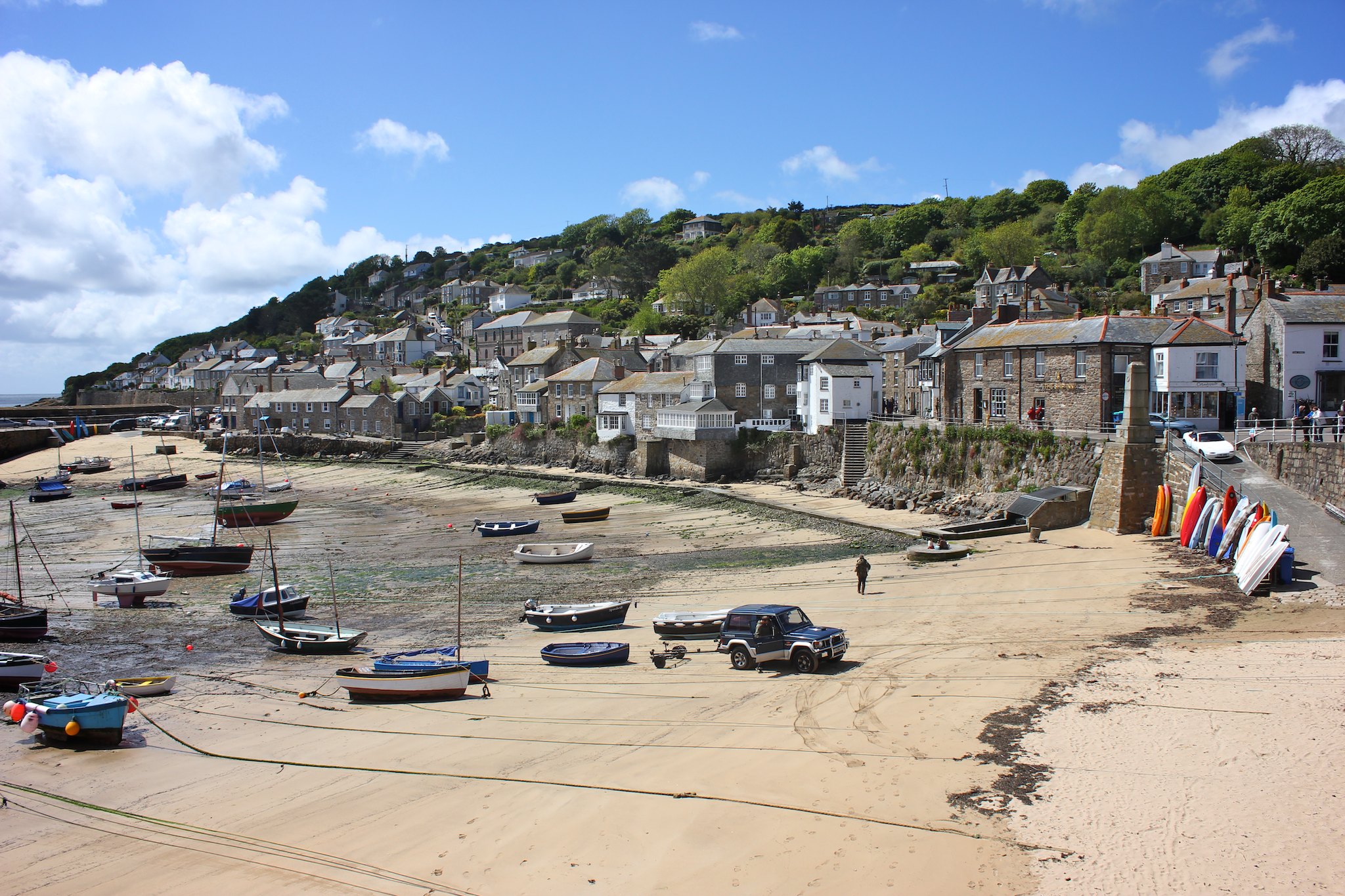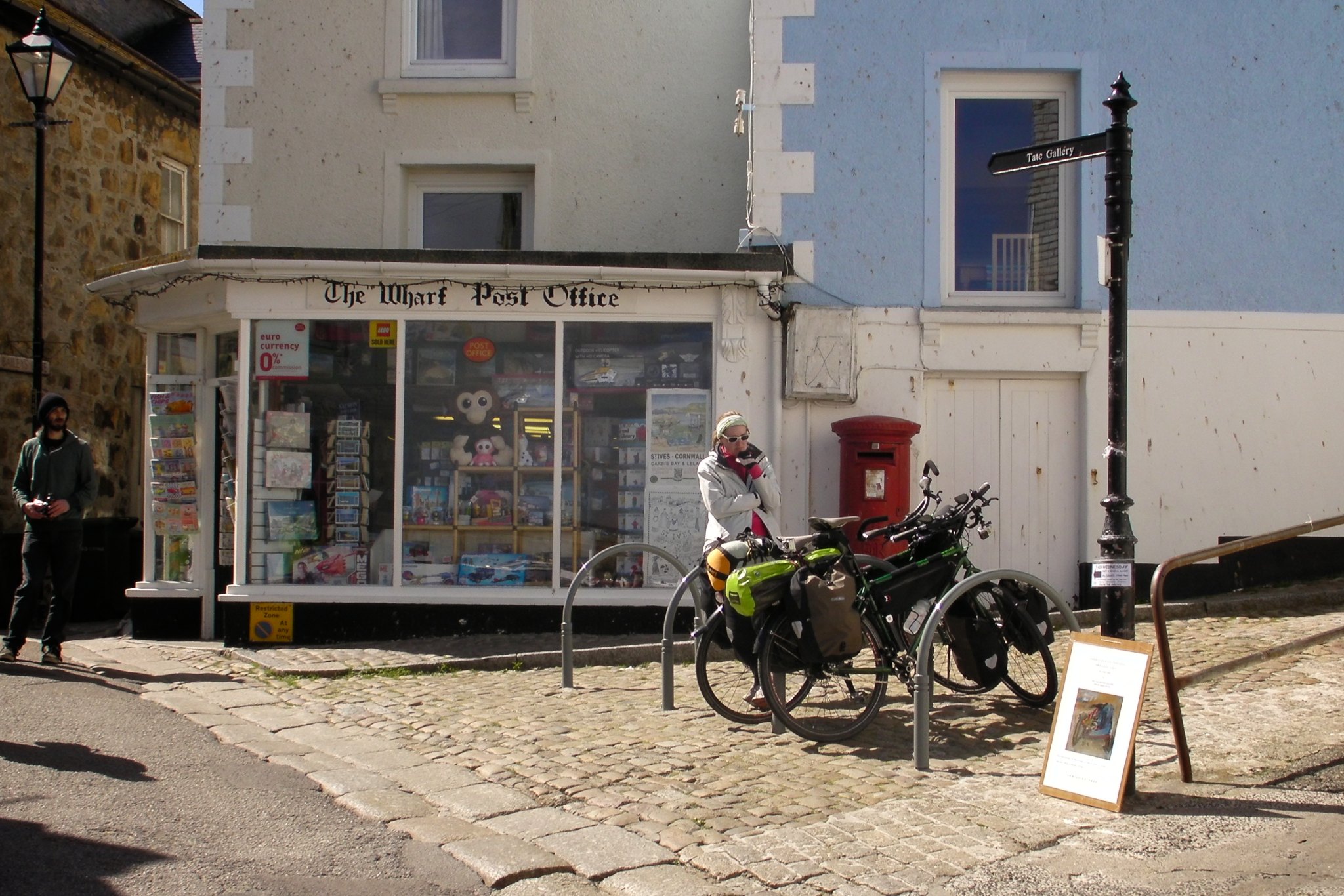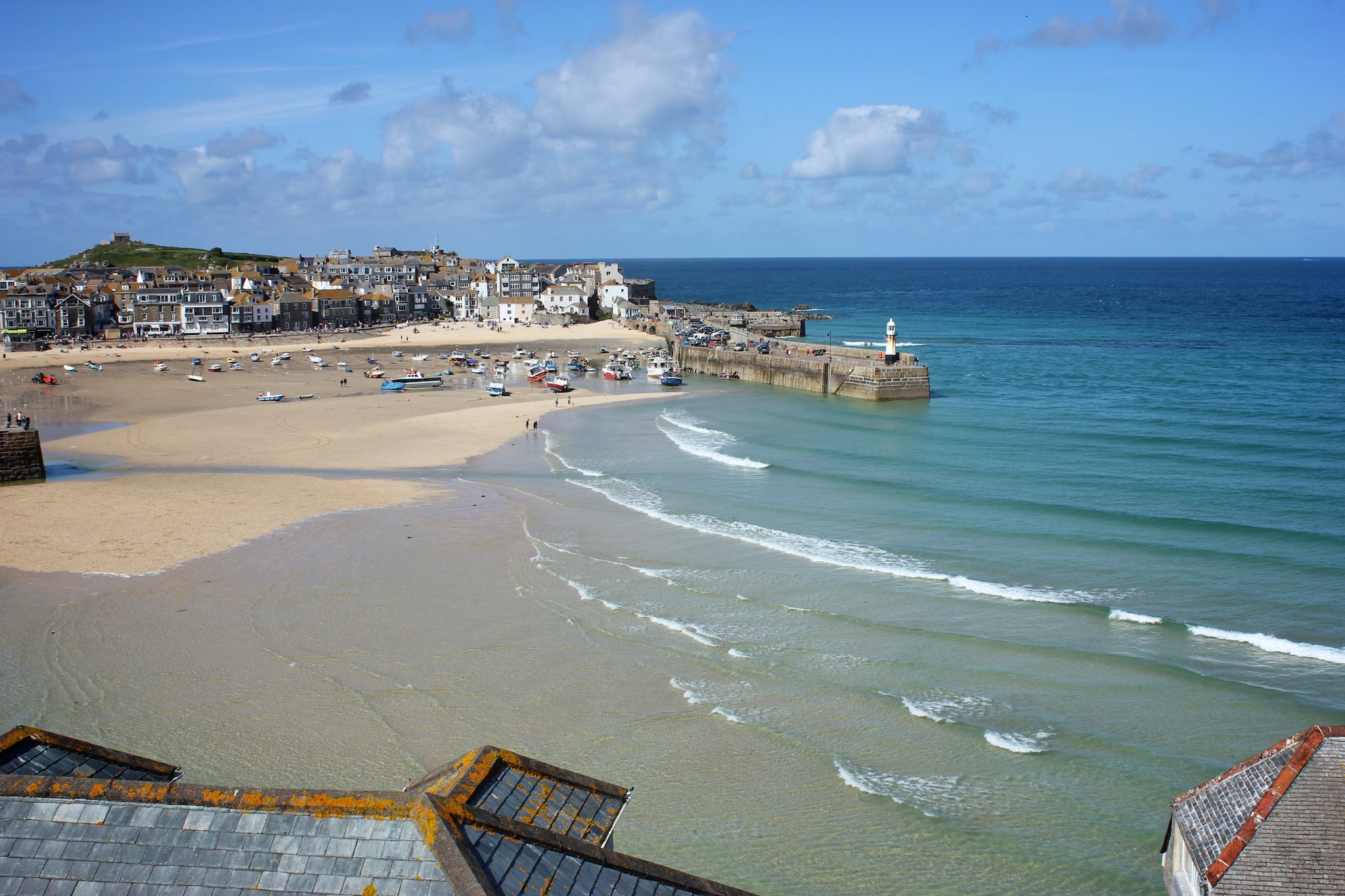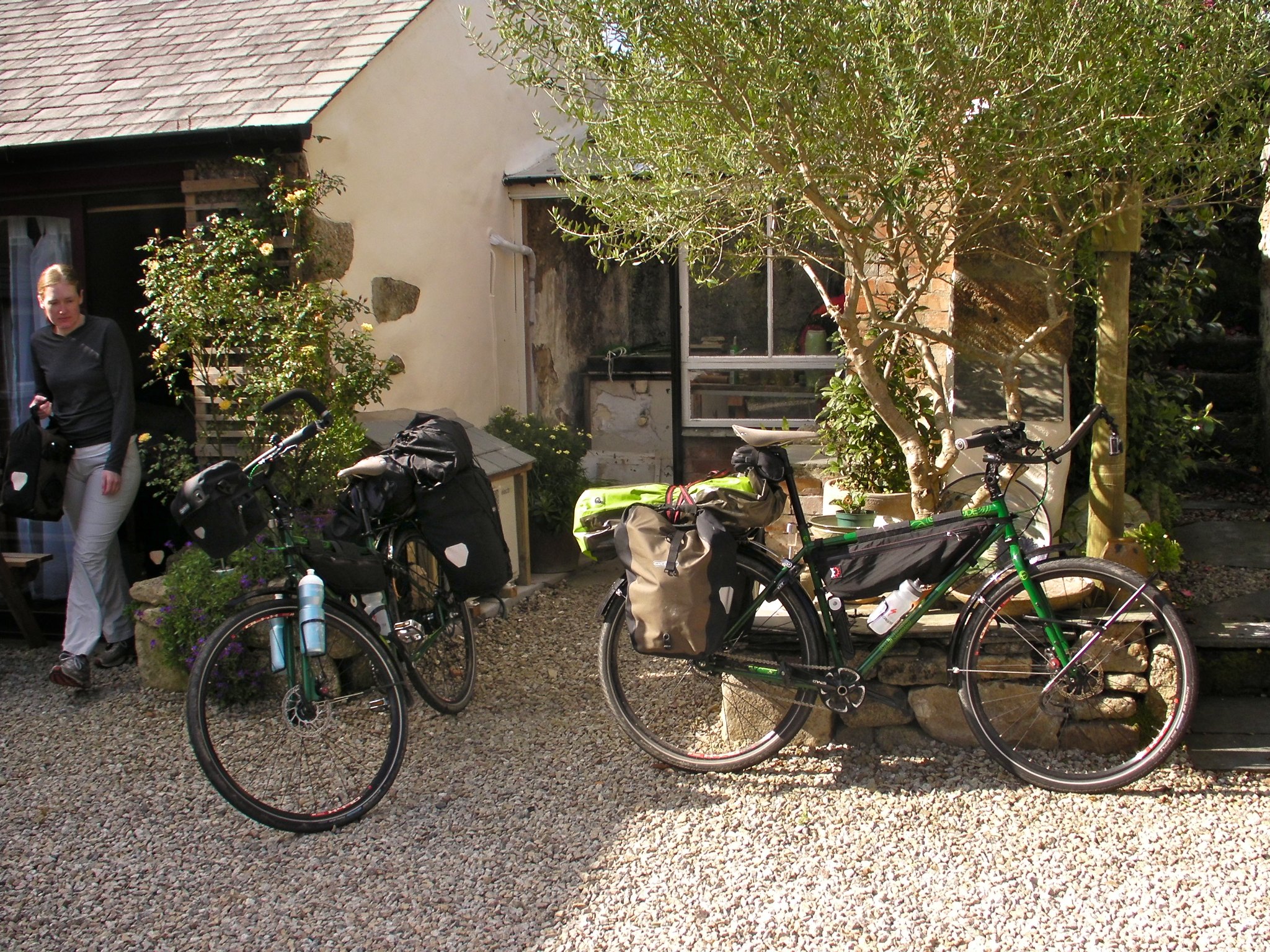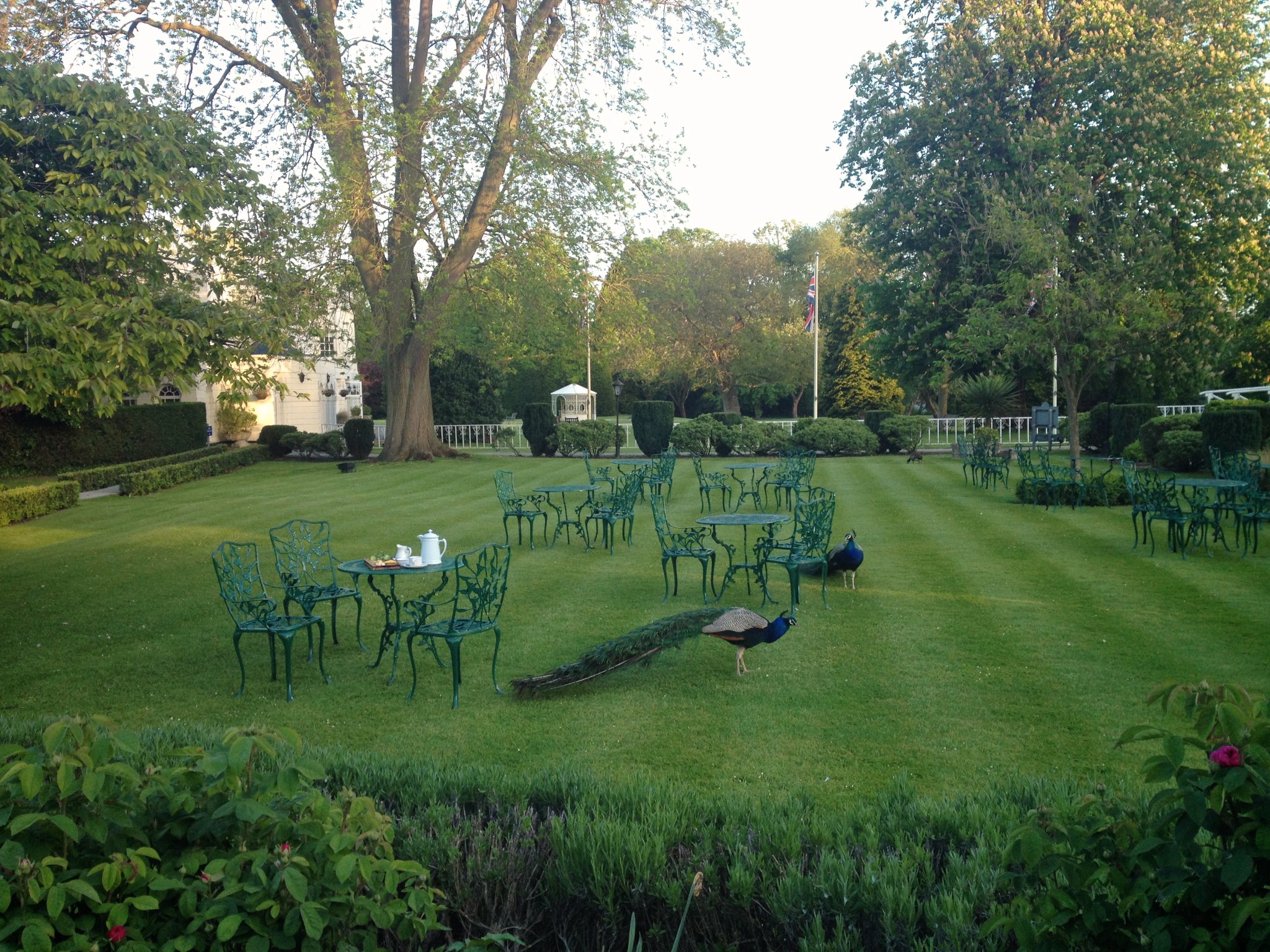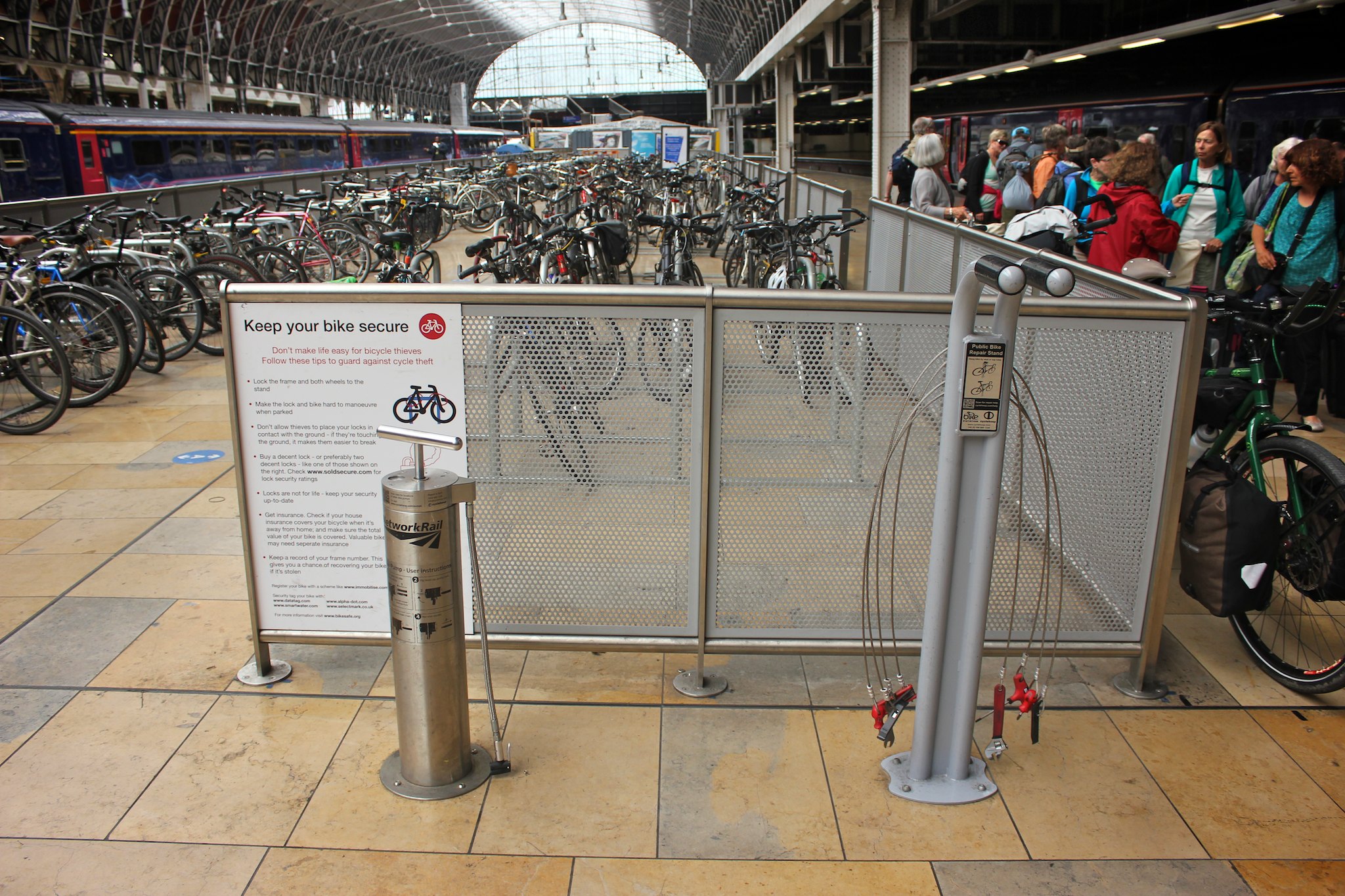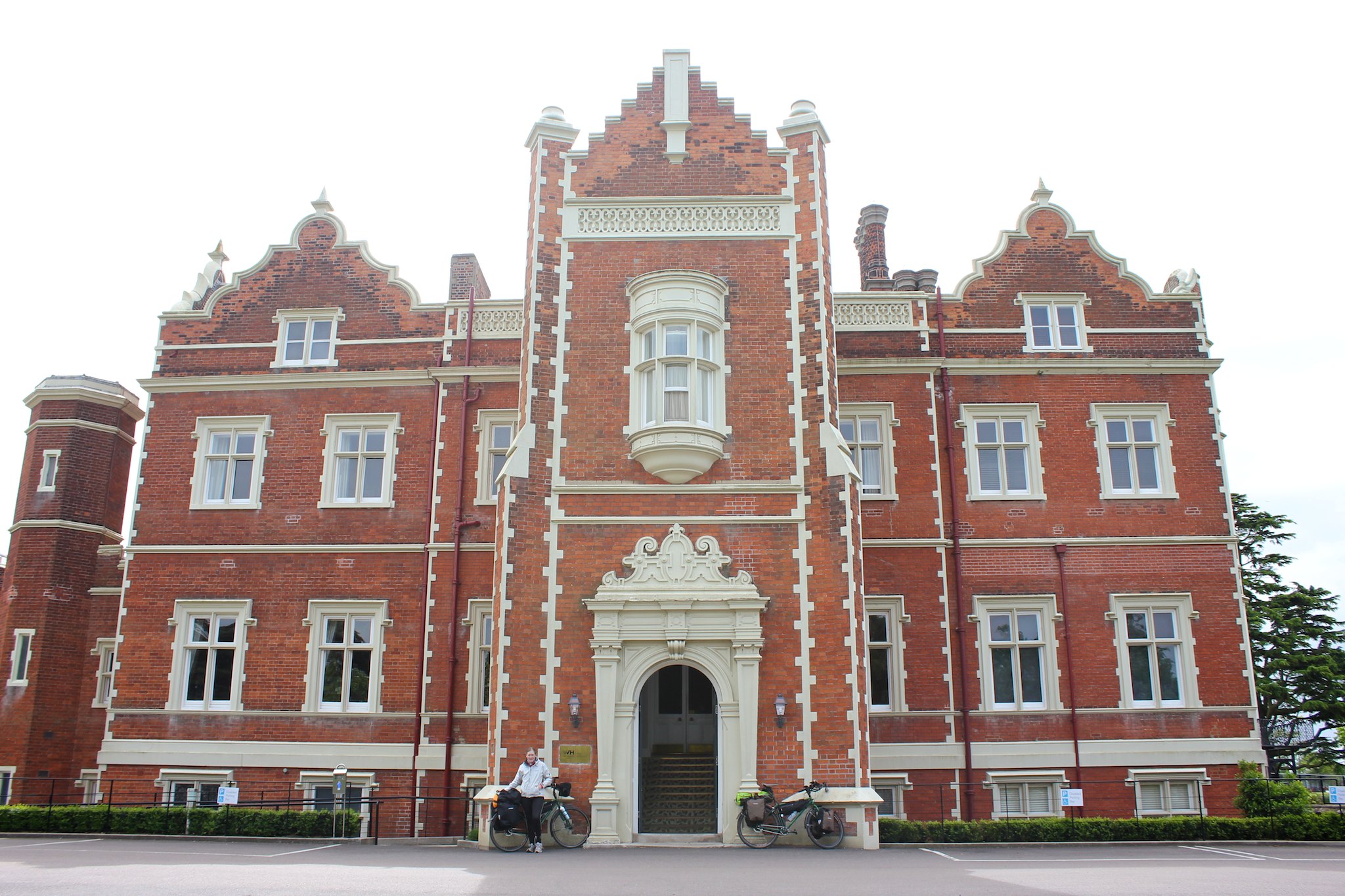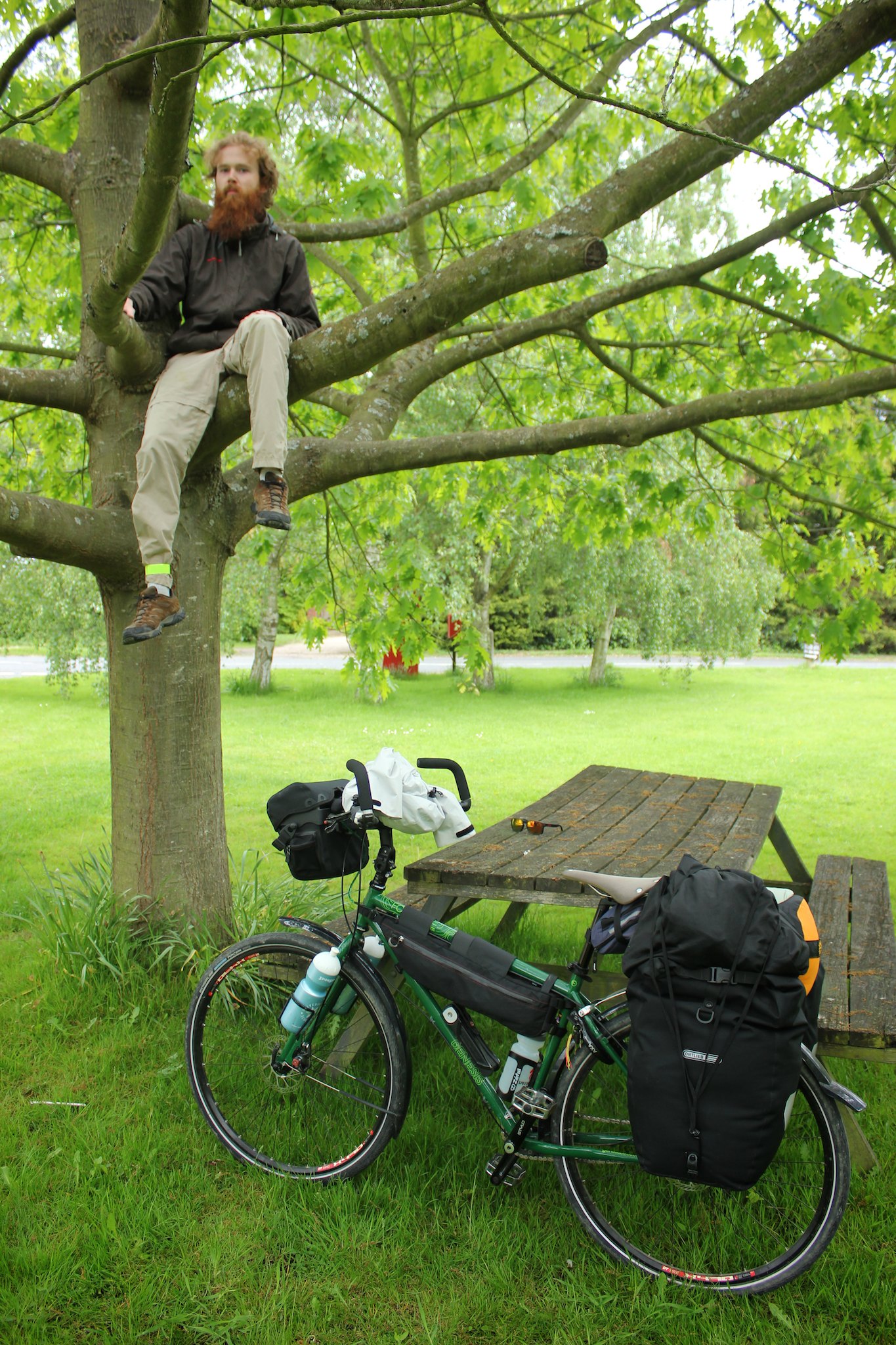Cycling across England
Adventure on the left side of the road
After cycling through Sweden in 2014 we took a shot at England in 2015. Since we can cycle from our house to the ferry to Harwich, it was the easiest way for us to go there. From Harwich we followed the "Heart of England cycling route" west to Land's End. Since we only had two weeks, we opted to skip the first part and take the train and start our trip in Salisbury. To stay on schedule we took the train two other times. On the way back east, we cycled various stretches that we had skipped earlier.
- When
- 7 until 24 may 2015
- Where
- England, United Kingdom
- Distance
- About 500 kilometers
- Duration
- 17 days
Crossing over to England
On Thursday evening, after getting back from work, we had dinner and headed out towards Hoek van Holland. Our bags were already packed. There had been some rainy days, but that night the weather was good.
It was a strange sensation having the bicycle all loaded up again. The weight helps dampen the shocks, and the ride feels very smooth. The downside is that I had to get used to shifting much further down, as I need to be in a very low gear to get going.
Getting onto the ferry is a bit confusing; bicycles have to go where cars go. After we got on the ferry and secured our bicycles, the next challenge was hauling all our stuff to our cabin, several decks above. All the separate bags that are meant to be carried on a bicycle are not so easy to carry by hand.
We booked a cheap cabin; two bunk beds with a bathroom in the middle of the ship. Without a window it was very dark, and no way to tell what time it was. The television had a channel with a video feed from the bridge, which acted as a sort of window replacement.
In the common area was a restaurant, tax free shop, wifi and lounge area. We walked around for a bit before heading to our cabin.
The crossing takes six hours, which is just too short for a good night's sleep. Early in the morning we were awoken by loud announcement that we had arrived. This was followed by instructions for truckers, drivers, pedestrians and eventually bicycles that they were allowed to depart.
Harwich to Salisbury
Since we only had two weeks for this trip, we decided to skip the east of England in favor of the west. The border guard agreed, saying that Devon was the prettiest part of England, and he also had some remarks about the aerodynamic properties of my facial hair.
The train station is next to the ferry terminal in Harwich, but we first took a wrong turn because it is not exactly clear how to get to there. The train station itself was small and confusing, as there were no signs or other information regarding the trains outside. The company must have realized this, as they employed an older woman, who approached as soon as we entered the station hall, asking if we needed help.
When we got off the elevator and onto the platform with our bicycles, there was a noisy diesel-powered train waiting there. I had never seen a diesel passenger train before. It was a surprise to learn that most of England's railway network is not electrified.
We got onto a local train to London. It was slow and stopped a lot, but it did not require us to change trains. There was no dedicated bicycle space, but the conductor pointed us toward the wheelchair area.
Eventually we arrived at London Liverpool station, which was quite busy. I got 300 GBP from the ATM, and we hit the streets. Having heard many awful stories about how dangerous and unfriendly London is for cyclists, I was a little anxious.
Keeping to the left side of the road turned out not so difficult, as there was plenty of traffic around to show you what direction everyone is going. For the most part the traffic was all jammed up, so there was little chance of getting hit by a speeding car.
The danger turned out to be in the big trucks (locally known as lorries) and buses. The vehicles were just as wide as the lane, and the drivers did not keep space for cyclists. As a cyclist you can stand in traffic, and wait for everyone to move while inhaling toxic fumes, or try to get past it. We quickly got tired of waiting, so we adopted the ways of the local cyclists, but in a less extreme way.
Before going to London, I had read that practically all cyclists there wear high visibility clothing and helmets. This turned out to be somewhat exaggerated. The British seem awfully fond of high visibility materials, not just for cycling, but there was quite a diversity in bicycles, outfits and riding styles.
Many of the local riders did seem to take some excessive risks by not looking around and swerving through traffic in the blind spots of larger vehicles, where no amount high visibility clothing would help you.
We made our way to the Balthazar Bakery, among the finest in London. I got a Chelsea bun, which looked interesting. We got a burrito from Chipotle, then cycled past the Mall and Buckingham Palace, where we had to wait a bit because there was some kind of parade going on. The sidewalks were swarming with tourists. A guy jumped onto the street to take a picture of me.
We ate our lunch at Hyde Park and made our way to Paddington Station where we wanted to get on the train. The ticket machine would not sell us a ticket to Salisbury. At the information desk they were able to sell us a ticket and told us it was because it required two changes. We should have made our way to Waterloo station for a direct train. When planning this trip a long time prior, Google had suggested Paddington Station. Mimi was tired and did not want to cycle to Waterloo station, which we had just about passed on the way there.
We got on a busy train, and headed west. We had to change in Reading, where the elevator was out of order and we had to drag our bicycles up and down the stairs to change platforms. In the mean time, the weather had turned a bit grayish.
At around 16:00 hours we arrived in Salisbury. We had planned to cycle on from there the same day, but it seemed like it was going to rain. We got online and found a B&B in town, and decided to book a room there.
After checking in, we headed for the town and had dinner in a traditional English pub called the New Inn. Diving into the English cuisine I ordered fish and chips, Mimi tried the ham and eggs, with some of the local ale, which according to her tasted like a toilet.
Salisbury to Alton Priors
At the B&B we had our first English breakfast of the trip. We left as soon as the rain stopped. It was still a bit cloudy, but later in the day it cleared up and it was sunny for the last part of the day.
After riding down the street, Mimi had a problem with her bicycle. It turned out the bungee cord was dangling loose, and had caught a spoke in her rear wheel. The bungee had wrapped itself around the hub. It's a good thing the bungee was elastic, and stretched so that it was still possible to make a controlled stop. The metal hook was bent, but the wheel was undamaged.
We checked out the town, got some food at the bakery and visited the old town and cathedral, major tourist attractions in Salisbury. The town had some busy streets, but after we got onto our route heading north, it was pretty quiet.
There was a cycling event going on that day, so we came across many cyclists who greeted us while passing by. The terrain quickly got hillier than we are used to in the Netherlands. Our first destination was Stonehenge.
Climbing the hills meant that we had to use the full range of our gears, and Mimi's bicycle had some trouble staying in the lowest gear. Fortunately a minor adjustment to the shifter's barrel adjuster resolved the issue entirely. Sometimes it pays to read the manual beforehand.
We were not to keen on having to pay an entrance fee just to walk around Stonehenge, and leaving our bikes unguarded at such a tourist hotspot. The road towards it was all locked up with cars, and we could see a ring of tourists around the monument. Since it was big enough, we just decided to take a picture from a distance, and not bother going down the hill, thus avoiding having to go back up.
We had lunch in Amesbury, and continued along the rolling hills to Upavon where we bough some food in the village store. We continued towards Avesbury, where there was another neolithic stone circle that we wanted to visit. There was not so much accommodation along the path, but we found a campsite near Alton Priors. In the distance we could see the Alton Barnes White Horse.
The campsite was part of a pub, but seemed OK. We set up our tent in the overflow area, to be as far away from the pub and other guests, in between the cow shit. We cooked some noodles in front of the tent which we ate with bread before going to bed.
In the pub they were playing live music, the same chords over and over. Of course it had to be amplified and the door was wide open. Even with earplugs, the sound made it impossible to sleep. Eventually I got out of the tent and went up there to ask if they could close the door. They did, which was better for a while, but the door was eventually opened again.
Along the channel to Bristol
Eager to get away from the horrible campsite, we packed up and departed around 9:00 in the morning. We were facing the hill with the white horse on it, and now had to climb it to get to Avesbury. After the horrible night, and the fact that we were already behind on schedule after the second day, we decided to skip it, avoid the hill and head west to Devizes instead.
The weather was a bit gray, but the road was smooth, with some rolling hills punctuating the horizon. While entering the town of Devizes, there was the sound of something hitting the ground behind me. I hit the brakes and looked around on the street. The two liter water bladder that was strapped on the back was laying on the road.
The fall had damaged the bladder, it was leaking water from one the corners. With a Park Tool Super Patch I was able to seal the leak, and the bladder did not leak again.
We got some lunch from Marks & Spencer and ate it underneath some covered bike parking while we waited for a bit of rain to pass.
From Devizes to Bath we followed a national cycling route along the canal. The first stretch was downhill along dozens of locks. It was a gravel path shared with many pedestrians who were out for an afternoon walk.
After a while, the path became flat and there were fewer pedestrians. Cyclists had to go both ways on the same path and the bridges blocked your view of any oncoming traffic. We quickly establish a routine of slowing down and ringing our bicycle bell before going underneath. A few times on our trip we were answered by the ringing bell of an approaching cyclist. At one point there was a group of confused teenage boys on bicycles blocking the path on the other side. I hope they stopped because they heard the bell, or they could have thought it was a good place to stop.
Eventually the path got a bit boring, but from Bradford-on-Avon there were again many tourists, going along the aqueducts towards Bath. It was after 16:00 by the time we reached Bath and we were getting a bit tired. We still had 30 kilometers to go to Bristol, where we had arranged to stay the night. In the mean time, a seagull shat on Mimi's bicycle.
Thankfully the road to Bristol was an awesome cycling path. Made along the path of an old railway, it went straight to Bath on smooth asphalt without any significant climbs or turns. The trees even provided shelter from the wind.
We arrived in Bristol early in the evening, where we made our way to the house of our hosts, where we had a lovely dinner and slept on a sleeping couch.
Bristol to Shipham
Mimi was feeling a bit sick, so we took it easy and had a late start. On the internet we booked a B&B in Shipham, just north of Cheddar. The sun was shining, and it was going to be a nice day. The hilly streets of Bristol had an unexpected resemblance to San Francisco.
As we made our way along the river, there were some beautiful paths, but the route was not easy to follow. Near Pill I misread the map and by mistake crossed a huge bridge and had to back track. This was followed by a difficult trail through Gordano Valley, where there we no good places to rest.
It seemed to take a long time before we finally reached Clevedon, where we made a stop at the local Morrisons. We had little interest in the town and wanted to keep going, one of the locals started talking to us and convinced us that we should checkout the coast, from where we could see Wales. We made a slight detour to see the coast, we took a picture and headed south. We got onto the Strawberry Line cycling route (NCR 26) past Yatton, which was relatively easy compared to the challenging navigation at the start of the day. Mimi was nursing a cold and was low on energy, so she was finding the hilly terrain somewhat difficult.
Getting to Shipham was the final challenge of the day, as this town was on top of a hill which we had to climb (140 meters).
Sweaty, but relieved to be there, we arrived at the Penscott Inn. We could put our bicycles inside in a very nice room in the back. The old building had some dangerously low doors and low ceilings, but our room was nice enough. We dined at the pub downstairs where we had a burger before going to bed.
Shipham to Taunton
We had been warned that the road from Shipham to Cheddar was a busy one, with lots of trucks. The good part was that the road was pretty much down hill. There was a challenging climb to get out of Shipham, but after we reached the top, it was smooth sailing all the way down.
The road had lots of curves which prevented us from looking ahead too far. At least once I felt like I should have started braking a little earlier, as I was trying to slow down with the curve quickly approaching.
Sooner than expected we rolled into Cheddar, a famous for its cheese and the Cheddar Gorge. There were literally bus loads of tourists. Mimi got some cheese, which took a long time since a large group of tourists had just walked in.
We checked out the gorge, which was a curvy road surrounded by some rocky cliffs. We headed back to town and found a Budgens supermarket where we did some shopping. It turned out they sell the same cheese there as in the tourist shop, but cheaper.
Since we had deviated from the cycling route, we had to climb another hill to exit the town over a quiet country road. We chose to avoid the climb and take a faster way, going along the car road. We had to share the road with buses full of tourists leaving town.
Not much later we reached the intersection where we were able to get back on the route again. The instructions were kind of vague; "turn left after a farm named x" and "go right after the short, steep climb". We missed a turn and ended up in Wedmore, where we bought and ate some lunch; a small detour.
We made it back to the route. The terrain was really flat and we made good progress, but eventually we ended up off the route again. We were now in Cossington and had to cross a hill ridge. To get back on the route, we would have to climb another hill. The alternative was to go down the A39 a bit.
Being an A-class road meant there was much high-speed traffic. It was pretty scary, especially when a truck decided to cross into the other lane to pass me as another vehicle, honking its horn, approached.
I was very glad to get off that road, and learned that A-class roads should best be avoided. There was an very steep descent into Stawell, where we got back on the route to Chedzoy. There was a sign pointing to Bridgwater, but that was not how our route wanted us to go. I asked a local, and pointed to the A39, but after I inquired about a quieter road he confirmed that the other way would also get us there.
The path to Bridgwater was nice and quiet. Once we arrived in town, we decided not to stick around and keep going along the channel to Taunton. It was a nice quiet gravel path without many people. Eventually the path got very narrow, with overhanging plants rubbing against the bicycle.
It was after 19:00 when we arrived in Taunton, where we cycled across town to our host for tonight. We had spaghetti for dinner and discussed the various route options for the next day. It seemed like there were some tough climbs ahead in Exmoor. We booked a B&B in Dulverton.
Barnstaple
We had some breakfast at our host's home, packed up our bicycles, said goodbye and did some shopping at the local Tesco. We were about to depart, but Mimi did not feel well enough to climb the hills ahead with a cold and a very stuffed nose.
We called the B&B and canceled our reservation, setting course instead for Taunton's train station. We got on the train to Exeter, from where we continued to Barnstaple. The train personnel were helpful and friendly.
When leaving the train station, people pointed us towards the Tarka Trail, though we were not going there yet. As we headed into town, Mimi noticed that her rear tire was unusually soft.
I pumped up the tire with a small hand pump and checked the rest of the bicycle while she inquired about the availability of various places in the town center. It was difficult to tell if my pumping made any difference, or if the air was escaping because of puncture.
We decided to stay at the Royal Hotel, where we could put our bicycles in a garage for guests. The hotel had a pool in a sister hotel, which we were told was a 5 to 10 minute walk away. We decided to go for a swim and found that 30 minutes was a more accurate estimate.
Back in the hotel room we had bread, noodles and chicken nuggets from Tesco for dinner.
Tarka Trail
On Tuesday we had already been warned that Thursday was going to be a day of bad weather, so we were happy to be inside. We had requested a late checkout, and I headed down the high street to get some pastries for breakfast at the bakery.
After packing up, we left our luggage at the hotel and went to check out the bicycles. They were still there, but Mimi's tire had gone soft again; there was definitely a puncture.
I already had lost my patience with the mini pump. We headed to the local bike shop, where I got myself a Bontrager Mini Charger pump, with a folding foot pedal, rubber hose, and manometer.
We went back to the bicycles and found a wooden board on which we could turn the bicycle upside down. After removing the tube, I discovered air escaping from a small hole. The tire had a large horizontal cut that extended beyond the puncture-resistant layer. There was a tiny hole on the side, on the edge between the thick rubber and the thin sidewall.
I replaced the tube, pumped up the tire with the new pump, put the wheel back on, and then had some trouble getting the gears adjusted. It was still raining, so I patched old tube, though the patches were a little old. The whole operation took less than an hour.
Not wanting to leave in the rain, we decided to do some shopping in the high street. We got some underwear and socks at the Primark, and a fleece sweater for Mimi and a sleeping pad for me at an outdoor store. We also got some cold medicine, tissues and food.
Around 16:00 the weather had cleared up and we were ready to go. We headed out of town and climbed a big hill, only to find that we had missed a sign to get onto the Tarka Trail and had to go back down. Once on the trail, it was a nice path along the river which had previously been a railroad line. We had a small ice cream stop and cycled onwards over bridges and through old train tunnels.
The path turned to gravel and we were going slightly uphill. Mimi felt it took too much effort; it turned out the chain was tensioned a bit too tight. A quarter turn of the tensioners made all the difference.
It was after 19:00 when we reached our destination, the Yarde Orchard eco campsite. Since the soil was too wet for camping, we had reserved two spots in the bunk room. I asked to see the yurts anyway, and we were offered the chance to spend the night there for the same price; an offer that we could not refuse.
The yurt had a small wood-burning stove that is used to heat the space. We also used it to warm up some pea soup that we had been carrying in a can with us since the start of the trip. Initially it took quite some time, but after filling up the stove with wood, it warmed up both the food and the yurt pretty quickly. We roasted some bread by the fire and ate our soup, and by the time we were finished it was already around 22:00 and time to sleep. I closed the stove, leaving the fire to smolder.
The hills of Devon
The fire had died by the time I woke up. The yurt was a bit damp, so I fired up the stove early in the morning again. I went outside and took a shower while Mimi watched the fire.
We packed up and had breakfast at the cozy on-site cafe. I lubed the chain and wrote a post card to home. Mimi said she had the best night sleep of the trip thus far, and has since confirmed that it was actually one of the best nights of sleep in memory. I lubed the bicycle chains, and by the time we were ready to go, it was already around noon.
We followed the trail and missed a turn, backtracked a bit and then took a path that that would lead us back to the route. This path led over a gravel road over, a hill, through some muddy trails and eventually to a locked gate. We unloaded our bicycles and lifted them over it. While lifting, I noticed that the bolts on my front rack had loosened a bit, no doubt due to the bumpy paths earlier. The rear rack has been fine ever since I put longer bolts with some thread locker on it.
The next leg of the journey was a little hilly, but nothing we couldn't handle. We eventually made it to Sheepwash, a small town with nice people. First a man suggested that we check out the local church, since it was apparently exceptionally nice. Mimi went inside to check it out and thought that it was very nice. While resting on the town square, a woman came out of her house to offer water and some freshly baked banana bread. We got some bananas and apple cakes from the local shop as fuel for our bodies on the road to come.
We were in Devon, near to the border with Cornwall, one of the hilliest parts of England. As we made a short stop to rest and eat a banana, a woman came out of her house to offer us a couple bottles of beer to take along. We tried to say no thank you, but the polite English woman insisted that we take them. We continued up and down the hills of Devon. Unfortunately, the contour and quality of the road required some extensive braking on the descents.
It was after 19:00 when we approached Bude; it had been a heavy day of cycling, and I was quite tired. Since Bude is a famous surfing spot, I expected a bustling beach town, but it seemed a bit quiet. We decided to have a quick dinner at the Olive Tree, one of the few restaurants in town, before heading to the campsite.
We got a seat from where we could see our bicycles, and shared a plate of fish & chips with sticky toffee pudding as dessert. We were done before 20:00 and climbed one more hill to get to the Cerenety campsite.
Cerenety was an eco campsite with some farm animals, solar-heated showers and compost toilets. Just after we had set up our tent, a light rain started, but we were safely inside. At night it was not as cold as earlier in our trip, and it was nice and quiet.
The Camel Trail
During the night, I did not sleep too well. I had to pee, but did not want to go outside. In the morning, I felt kind of sore and cranky. There was some wind and sun, which helped to dry the tent quickly. I used the solar-heated shower and the compost toilet. Just before taking down the tent, a cat from the farm decided to pee on it. I had to rinse off the tent and wait again for it to dry.
Our route book described the next part as "the most challenging part of Devon", where we would head south along the coast to Widemouth Bay and Crackington Haven. We took the "easy" way out along NCR3, which was still amongst the toughest cycles I had ever done. We were getting quite proficient at dismounting and walking our bicycles up the hill without any shame.
On the way down we had to use our brakes a lot because of the many pot holes and tight turns with limited visibility. Despite the challenging route the, the scenery was quite lovely.
It took a long time, but eventually the terrain got flatter and more barren. The route took us across an abandoned air field, now populated by sheep. Heading west, the cold wind from the Atlantic ocean was straight against us. I used the aero bar to decrease the air resistance while Mimi drafted behind me.
After turning south again the scenery was quite nice, with heathland, rocks and sheep walking around us, sometimes on the road. The hills were a lot smaller, but just as steep, so we walked up some more. It was around 18:00 when we stopped for a late lunch of noodles by the side of the road.
Eventually we reached the Camel Trail, along the Camel river. This is what we had been looking forward to for most of the day, as we had arranged a place to stay there. We had also come to appreciate cycling paths along rivers and railroad tracks, as they are both flat and quiet, just how we like our cycling paths.
Our hosts in Bristol had very kindly given us directions to a family member's house along the trail near Bodmin, and marked it on the map with a phone number. Making good progress, we overshot and had to turn back. There were a bunch of houses there, we tried to call, but the mobile phone had no reception in the area. There was nobody home in some of the houses we tried. The only person we could find in a garden didn't know anything because he didn't actually live there.
As we were about to ring a doorbell of a house that had a light on inside, a car stopped. It was Tino, the man whose house we were looking for. He gave us directions, and we backtracked a mile along the trail. After we set up the tent in the garden, we were offered a spare room and packed up the tent again. Mimi was still sick, so we were happy to sleep inside. For dinner we had sausages, homemade from pigs they had raised and slaughtered themselves, cooked over an open fire. We also had fresh vegetables from their garden, homemade beer and a homemade elderflower drink.
Padstow
The morning started off with doing some much needed laundry. We decided to stay for another night, and cycle along the Camel Trail to Padstow and back as a day trip.
We stopped at the Camel Trail tea garden for some lunch. I tried the jacket potato with chili con carne and ham, while Mimi had a cream tea. The total distance was 18 miles (29 kilometers) which took quite a while to cover, even though the road was flat and we had little luggage. When we arrived in Padstow just before 17:00, many shops were closing. Padstow is a small town that is mostly known for a TV chef that has several restaurants there. Unfortunately, his patisserie was already closed. We bought some fudge as a gift for our hosts. At a bakery, I got an apple rhubarb pasty, and we got some food for the next day's breakfast at a small grocery store.
It took us about two hours to cycle back. As this was our last Sunday in England, Mimi was a bit disappointed that we had not experienced a traditional Sunday roast. By the time we arrived, our host family was cleaning up the kitchen, and I assumed they had just finished dinner. It turned out part of a pig was roasting in the oven. After a day of cycling, having a full Sunday roast with home grown everything was a wonderful experience.
Penzance
The next day was a very rainy day. Our cycling route was supposed to go to Padstow, Newquay and Truro, with around ten extremely steep climbs marked on the map. With Mimi still a bit sick, we decided that instead of battling the hills of Cornwall in the rain, we would take the train to Penzance. We even got a ride to the Bodmin train station.
We arrived in Penzance in the afternoon. The rain had cleared up a bit, and we headed from the train station through the main street and got another Cornish pasty as lunch. We did some grocery shopping before heading to the Fountain Inn, where we had booked a room.
Shortly after checking in, it started to rain outside again. Once it was dry, we walked around the town and a local park for a while before heading back to the inn where we had a burger for dinner.
Land's End
The day started off with a traditional English breakfast at the inn in Penzance. We set out on our bicycles towards Mousehole along NCR 4. Mousehole was a nice town, but we had just got going and did not stop. The route went along the coast, and then crossed inland towards Land's End. Right after Mousehole, there was an extremely steep climb on a narrow road where we had to walk up to while letting the cars pass.
Later we descended in to a beautiful forest valley with squiggly roads. We had a short break where we ate a pasty that we purchased before leaving Penzance. After climbing out of the little forest valley, we came across a field with an ancient stone circle. The landscape gradually got more barren as we approached Sennen, the last town before Land's End. There was one final hurdle; a tourist trap which is set up like a funnel, meant to lure anyone who wants to go to Land's End through a small mall theme park. We avoided it by ignoring a sign and going around it instead.
After reaching Land's End, we headed towards St. Just. We had planned to camp somewhere around that area, but the campsites we passed on the way did not seem particularly appealing. It was around 18:00 when we reached the small town center. Since we were getting a bit tired, we inquired at the local hotels. We decided to stay at the Commercial Hotel. We were allowed to keep our bicycles in the laundry room. We had dinner at the hotel's restaurant downstairs; Mimi had fish, and I had curry.
St. Ives
After having had many traditional English breakfasts, I wanted something different, and opted for the continental breakfast. While having breakfast, we noticed that our bicycles that had been put securely in the washing room were now waiting outside, unlocked in the hotel garden. A good reminder not to leave your bicycle unlocked anywhere where other people have access to it.
When packing up our bicycles and checking out, a hotel employee gave us directions for a more scenic route along the coastal hiking trail. It used to be used by horse carriages, so bicycles should be fine.
We started with a steep descent right after leaving St. Just. We then turned left onto a gravel trail. The path went along a stream and deteriorated quickly. We left our bicycles and explored further by foot. The path led all the way to the coast, and we could see Cape Cornwall, beautiful scenery and old ruins.
After our little hike, we returned to our bicycles and decided it was not a good trail for bicycles and headed back to the road. We also helped out two French hikers that needed directions. On the way out, a guy walking his dog there told us that the path was not suitable for bicycles at all; we would have needed some "really good mountain bikes". I guess the path has deteriorated a bit since it was used for horse carriages.
It was almost noon when got back on the road (B3306) but it was a nice little detour, as we did not have to get very far that day. The scenery along the road was stunning. We could see the Atlantic ocean, rocky cliffs, old ruins from the mining industry, sheep and cows in the fields.
There were not many climbs until we reached Zennor. After a big descent we found ourselves walking up a big hill again, and once we reached the top we coasted down into St. Ives.
St. Ives was bustling with tourists, even though it was just a Wednesday afternoon. This is how we had expected coastal towns like Bude, Padstow and Penzance to be. It was low tide and inside the harbor there was a large, sandy beach with people on it, as well as boats laying on the sand.
At the local post office I got a postcard to send home. After looking around the harbor, we headed back into the main street to buy some snacks. Like many other English towns, the steep and narrow streets were full with cars, parked on both sides, and squeezing through the remaining space was very challenging. The sidewalks had hardly any space for pedestrians, let alone bicycles.
We climbed up yet another hill as we headed towards Lelant, the next town over, where we had booked a B&B. Rush hour was beginning, and the road was getting busier. Thankfully there was a separate cycling path along the road on the way down, and it was a nice and smooth descent. The B&B was located just around the corner, where the hardest part was crossing the road, since it was impossible to see the traffic coming from both directions.
After checking in, we still needed to have dinner. There were two pubs in town; one right across the road and another a mile down the road. The one farther down the road was the one that was recommended to us by the B&B owner. We walked down the road, only to find that the pub had no space available. Even hungrier than before, we walked back and had dinner at the pub across the road. I had sausage & mash with peas and Yorkshire pudding, while Mimi had the burger, which according to her was among the top five of her life.
The train east
In Penzance we had made a reservation for the train, which was required if you wanted to take your bicycle on that particular train. We left from the B&B in Lelant and cycled to the St. Erth train station.
We had plenty of time after arriving at the train station. A guy told us to take our panniers off and where to wait, as the train had a separate bicycle compartment at the end.
Once the train arrived, we tried fitting in the bicycles. The racks were of the "wheel bending" type where you put in your front wheel, and then it bends your rim as the bicycle falls over. My front wheel didn't even fit, as the bicycle's front rack was in the way. There were straps provided that had velcro on them, but it was too short and in any case, completely worn out, so it was doubly useless.
Mimi wanted to lock up the bicycles (with the ring lock), which blocks the wheel and keeps the bicycle in place. She made the mistake of asking the train guy, who did not answer her question, but instead started repeating that in case of a fire they would throw out the bicycles first. We just imagined a train on fire, where everybody remains seated. A guy walks over to the bike compartment, unlocks the door, takes the bicycles one by one, throws them off the train, and then lets the passengers exit through the bicycle compartment where they have to step out onto a pile of bicycles.
While putting the bicycles into the compartment, the spring-loaded door automatically closed with me still inside. There was no way to open it from the inside. You have to lower the window, reach outside it with your arm, and pull the handle.
After escaping from the bicycle compartment, we took all our bags to the compartment where our reserved seats were. Our seats were separated by a passageway, but we sat next to each other anyway. The person whose seat I took never showed up.
Mimi was worried about the bicycles moving around. She asked the conductor if she could go inside the bicycle compartment, and moved her bicycle to lean on mine. At the next stop, another cycling tourist got on who, against the strict advice of the station worker in Bodmin, left all his panniers on the bicycle. Mimi was still not sure if the bicycles were properly secured, so at the next stop, I got out and locked ring locks to block the rear wheel and strapped them to the side so that they could definitely not move.
After four hours in the train, we arrived in Reading, from where we had planned to cycle to Windsor along the National Cycling Route 4. Outside of the train station, there were some signs for some cycling routes, but not ours. Using GPS, we were eventually able to get on the route. It was quite a change to be in a town with busy streets again; we were definitely no longer in the country side.
The route book that we had been using only describe the route in one direction (opposite of how we were now cycling,) so it was easier to just to stay on cycling route 4 and follow the signs. This led us up to "crazies hill", which honored its name and was crazy steep from the direction we were going. We had to walk up the hill, but at least there was a nice descent though the forest.
The signs were small and all over the place, and sometimes hidden where you couldn't see them until you were right on top of them. With two sets of eyes, one of us would often spot one that the other had missed, though sometimes we both missed the sign (or maybe the sign was missing,) but were usually able to get back on track quickly.
That was until Maidenhead, where we lost the path completely, and found our way to the train station using GPS, from where we continued on the trail without too much delay.
We had not yet arranged a place to sleep that night, so we sat down in a park and called various B&B's around Windsor. Eventually we found one that had a room available and set course towards Windsor.
After cycling for a while, we came across signs with the intriguing name "Monkey Island". I was getting tired and we stopped at the hotel to inquire. Although there were no monkeys, it was indeed located on an island, and there were peacocks walking around so that made up somewhat for the lack of monkeys. A room was the same price as the B&B, so we took it. Breakfast was not included. The woman tried to up sell, but I declined, saying that I had had too many English breakfasts. She eventually offered us the breakfast for free.
We got a room on ground level, so we brought our bicycles around back and loaded our stuff in through the window. We had dinner at the hotel's restaurant, where we found out that Monkey Island is a wedding hotel, intended to host large parties where the guests can stay for the night.
Crossing London
We covered a lot of distance this day. In the morning, we loaded up our bicycles through the window and departed from Monkey Island, heading east along NCR 4 towards Eton/Windsor. It was not possible to get a good view of Windsor Castle because of all the buildings around it. It was also swarming with tourists. We cycled to Slough along a confusing cycling path, where we got on a local, and very busy, train to London Paddington station.
We cycled to Hyde Park and then went to look for something to eat. The place Mimi wanted to go did not exist anymore, so we ended up at a Vietnamese restaurant in Soho that served pho. We stayed there for two hours, using the wifi and looking for a place to stay. Eventually we booked a hotel in Wivenhoe, a town east of Colchester.
The next order of business was to get onto a train to Colchester, so we headed towards Waterloo train station. By then rush hour had begun, and it took quite a long time to navigate through the busy London streets; many were one-way streets, going the wrong way.
The train station was crowded, and the train itself was even worse. There was a separate compartment for bicycles. Even that filled up so much that we had to strap our bicycles together to make space for the others. The train itself was filled to the brim, with people standing in the passageways. Squeezed like sardines in a can, we stood in the hallway, in between the door and other passengers. It was a bizarre experience; more people trickled into the the train, squeezing through the masses of people, as if it were completely normal.
Eventually the train got going; I was trying not to be pressed against the train door, as I believed there to be a chance greater than zero that it might accidentally open while moving. After about an hour, we arrived in Colchester.
It was around eight o'clock in the evening when we arrived in Colchester. The sky was a bit gray and it was drizzling, but I was glad to be off that train. For the first time on our trip, we took out our bicycle lights.
We still had to get dinner, and we got a pizza to take away. After strapping the pizza on the back of the bicycle, we took it to a bench outside a park along the route. While sitting there, I noticed that the park's gate was closed, as it was only opened until 21:00 hours, and our route was supposed to take us right through it.
When a local man walked by and was about to enter his house, I asked him for a way around, which there thankfully was. After our pizza dinner, we cycled around the park; all kinds of paths eventually led to the outskirts, and then by some student housing, and over a squiggly bridge. The sun had since set, and it was getting really dark. Google Maps had come up with a route cycling through the university campus, where I quickly lost my bearings in the dark.
We went on an unlit road that seemed to curve around it; we were then outside of town and it was very dark. Thankfully I could still navigate using GPS and we found our way to the hotel.
The Wivenhoe House Hotel was the most expensive place we stayed at during our trip, but it seemed like a fitting place for our last night in England. Everything about the hotel was very nice. I especially liked the iMac that was provided in the room that gave us a whole bunch of USB ports to charge all our devices at once. I was able to copy video files from the full Micro SD cards to my regular SD cards that had space available.
Harwich
We started our last day with another continental breakfast from the hotel. It was a very nice place, outside of town. It was too bad we had only spent a few hours there, most of them fast asleep.
Some of our bags had been put in the luggage storage, so we didn't have to drag all our stuff through the huge hotel. We got back on the road and went into the town of Wivenhoe, where we joined the Wivehoe trail (51) heading east. Although the countryside was nowhere as hilly as the west side of the country, it was still hillier than we had imagined it to be.
It was less than 40 kilometers that we had to cover that day, and even though we took it easy and stayed on the scenic route, we were making good progress. In a small town, we made stop at a grocery store, and we later stopped to cook some noodles, and I climbed a tree.
In the afternoon, we arrived at the coast in Dovercourt, right next to Harwich. We sat down on a bench, cycled along the coast, then around town, and then went to a café to kill some time. There were some English things Mimi wanted to buy before departing, and all the shops in town were closing, but the big Asda supermarket outside the center was still open. In the town, we spotted some other cycling tourists who where also obviously taking that night's ferry.
It was dinner time, so we headed back to the city center. Since we did not have Indian food on our trip, we decided to go an Indian restaurant. It was still too early, so we had to sit around and wait for it to open. Thankfully they opened a little bit earlier just for us.
Since we still had about two hours before we needed to head to the ferry, we tried to pace ourselves as much as possible. With plenty of time to spare, we cycled towards the ferry, making another final stop at the Morrisons supermarket on the way.
Once we arrived at the ferry terminal, there was already a significant line of motorcycles and cycling tourists. Cyclists could go first, and we did not have to wait very long.
We entered the ship, locked up our bicycles and then hauled all our stuff to our cabin where we could watch the last half of the Eurovision Song Festival.
Home again
After some hours of sleep, we were woken by the announcement that we had arrived in Hoek van Holland. We got ready and waited for the announcement for cyclists to go downstairs, which never came and we eventually just left.
The other cyclists had already left, and we were the last ones to disembark. It was a sunny Sunday morning in the Netherlands. During the first few kilometers, I had to adjust to riding on the right side again.
About halfway home we helped some cyclists who had a flat tire with the pump that we bought in England. We made it back home in The Hague before noon.
